Capital:
Tehran
Currency
Rial
Best time to visit:
from March to November
Vaccines
Antitific recommended
In a word:
Masha’allah (as God wants)
Essential experiences:
Sip a tea at sunset in the Enam Khomeini square in Isfahan; Get lost in the labyrinthine alleys of Yazd; Living in a traditional house in Kashan
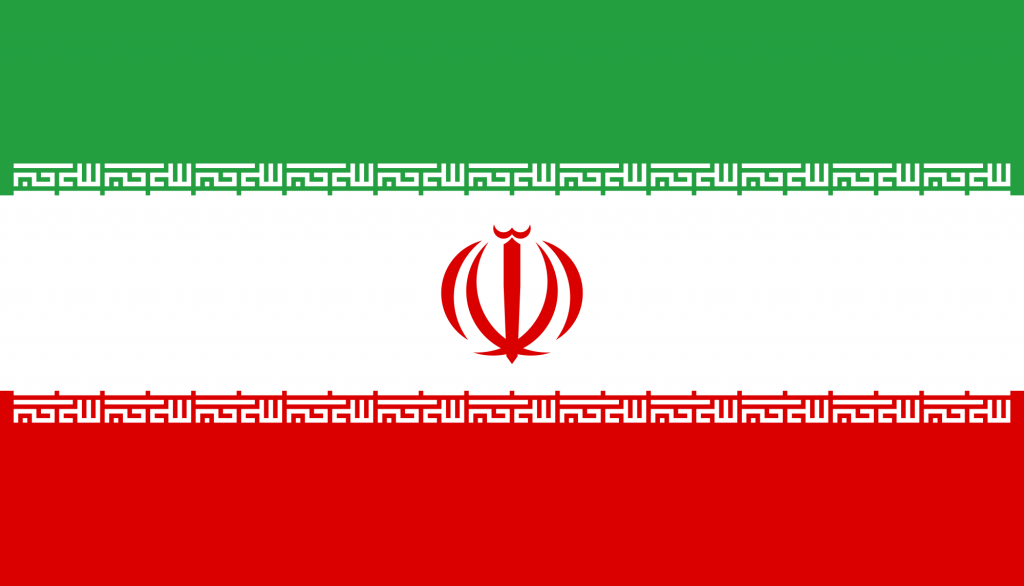
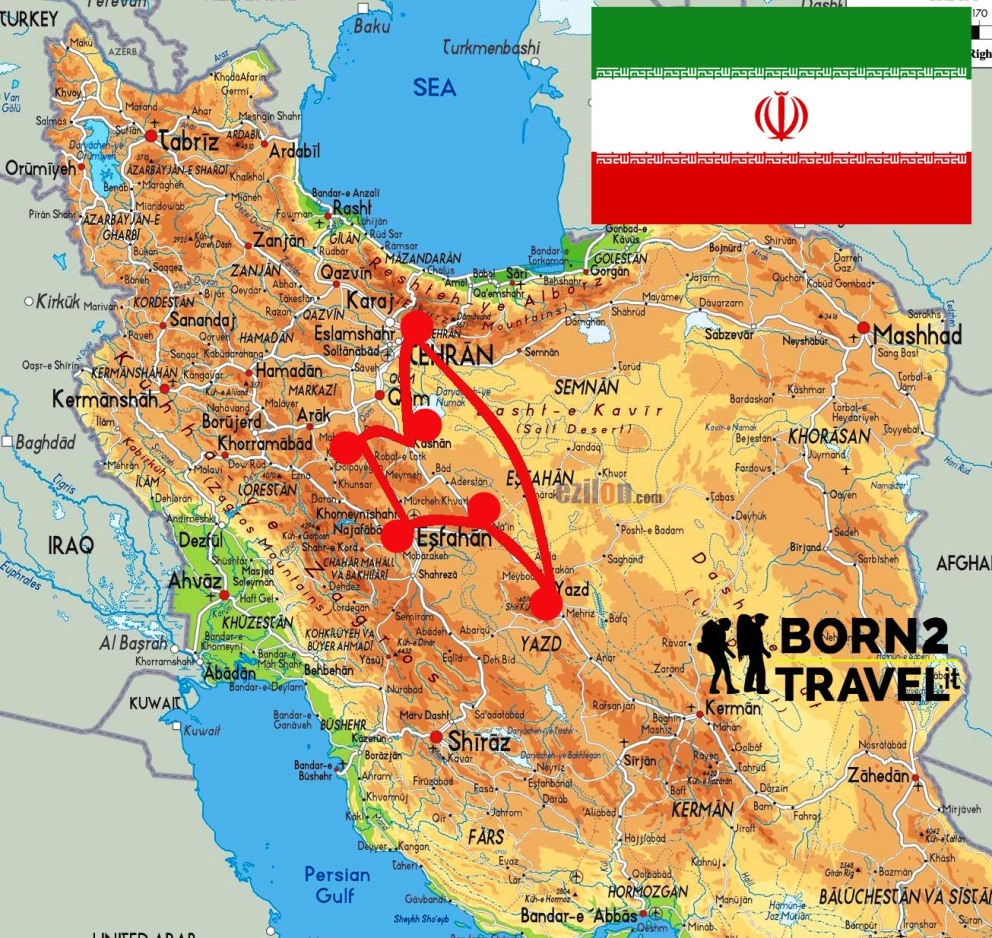
Despite a thousand fears about leaving for this distant land that is still considered "dangerous" with a one-year-old girl in tow, we decide to make ourselves strong and leave for this adventure. We will soon discover that all prejudices are unfounded by encountering one of the most generous and hospitable peoples of the world. Let's start from Yazd, in the south of Iran, going up, slowly, by land, to the capital through some of the most historic and traditional cities of old Persia.
Our suggested itinerary (14 days) | |
two days: | Tehran |
two days: | Yazd |
one day: | Toudeshk |
five days: | Isfahan |
| four days: | Abyaneh, Kashan, Tehran |
Iran intimidates you ... the hard look of Khomeini in the posters scattered around the city he seems to warn you and remind you of "behave" in this nation that will host us.
“Behave well" it's relative in a country where the military control the veil of women, where sweethearts cannot walk hand in hand but where it is considered sensual to redo nose or lips
We are struck by the free courtesy of the Iranians, their going out of their way to try to give you a hand when they see you in trouble with a map in their hands on the street, their wanting to "stick a button" with the stranger to hear stories from another world , a world far away and often almost forbidden by the bureaucracy but above all to tell ... explain its own history to break down ancient prejudices that still "slow down" western tourism. Their spontaneous sociability and courtesy is disarming.
We see that the girls are tired of this veil, you can see it from the way they wear it, leaving almost the whole garment uncovered ... there is an air of change, of modernization!
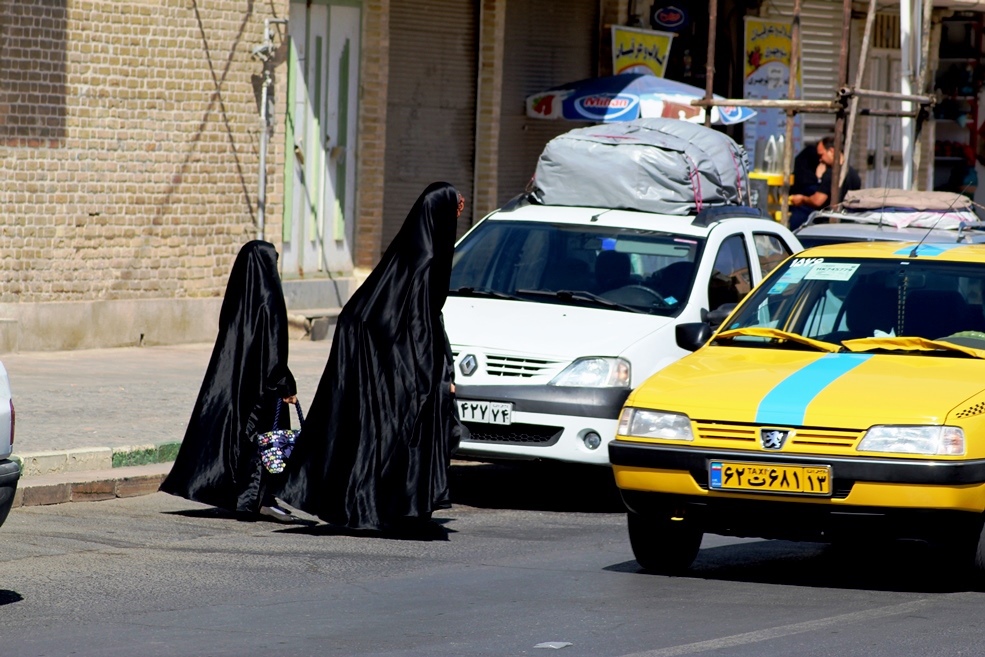
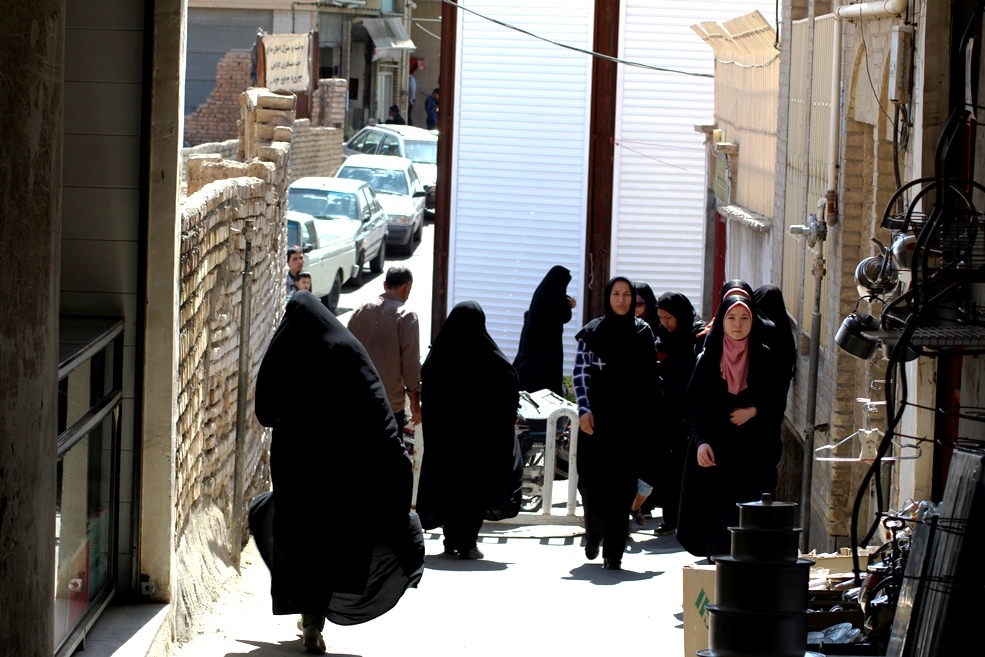
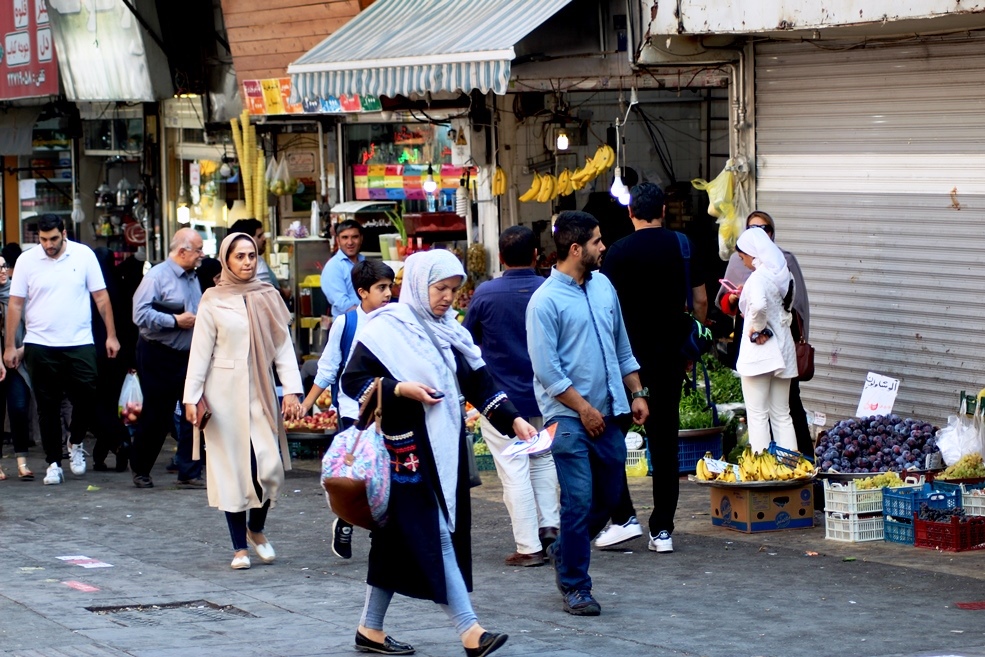
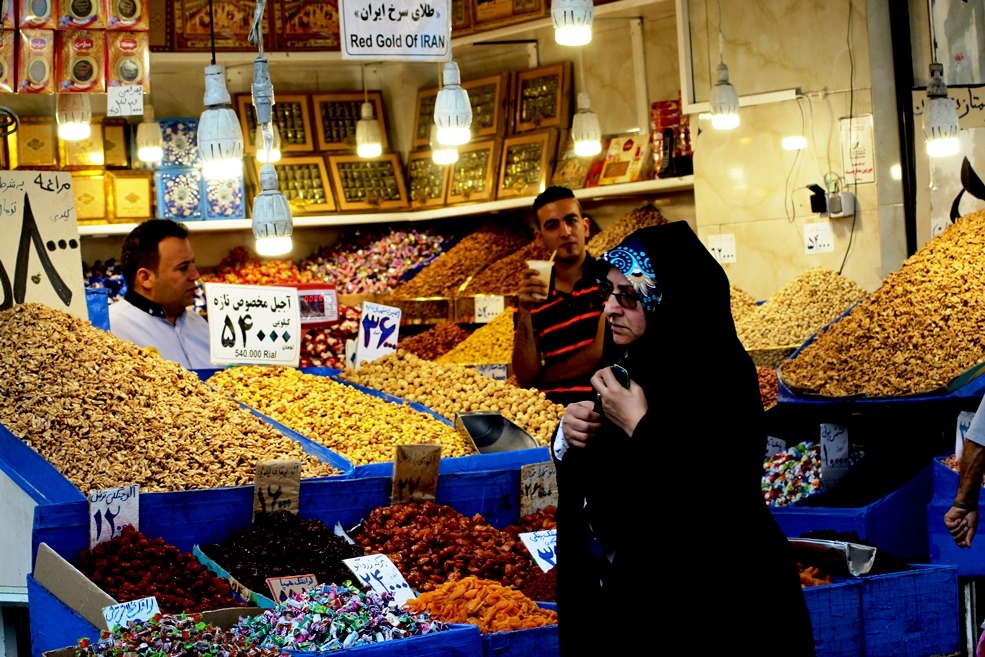
Tehran is immense! It has a dozen millions of inhabitants who actively contribute to making city traffic infernal! It is truly hallucinating, without rules, all these old broken cars that circulate, touch you, suffocate you with their poisonous gases.
We are host to a family of couchsufers: Meysam, his wife Tina and the daugther Parmisa; they welcome us with a typical Iranian dinner, sitting on the ground, on various Persian rugs, among local specialties we spend a beautiful evening in friendship.
We dive into the sprawling alleys of the Grand Bazar, the largest market in the nation; is like a city in the city, it includes 10 sq km of covered shops, is the Wall Street of the city, the place where the prices of basic necessities are fixed, includes various mosques, pensions and even a church.
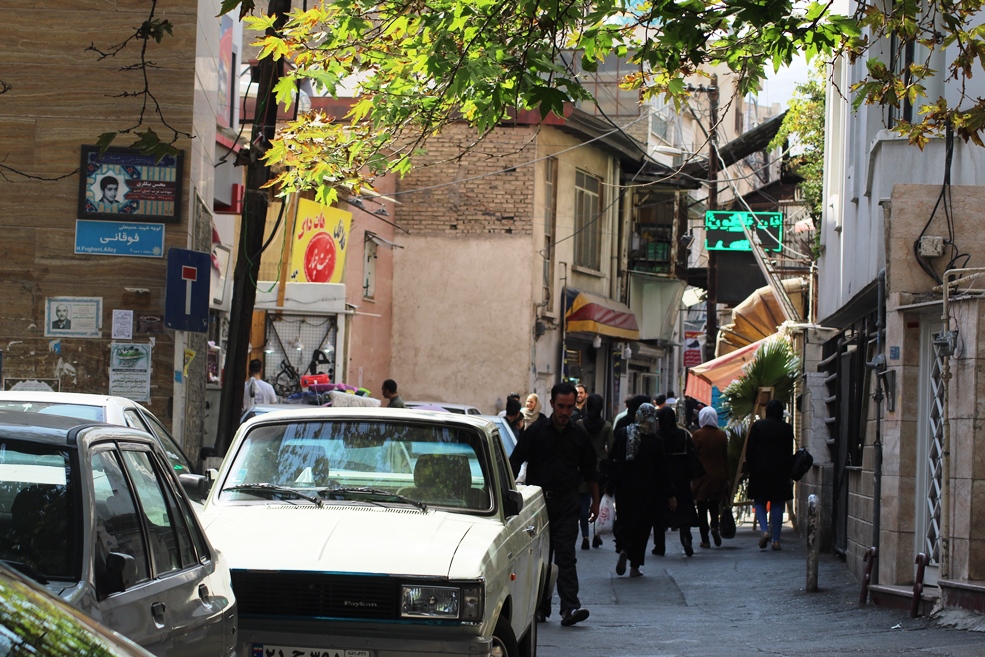

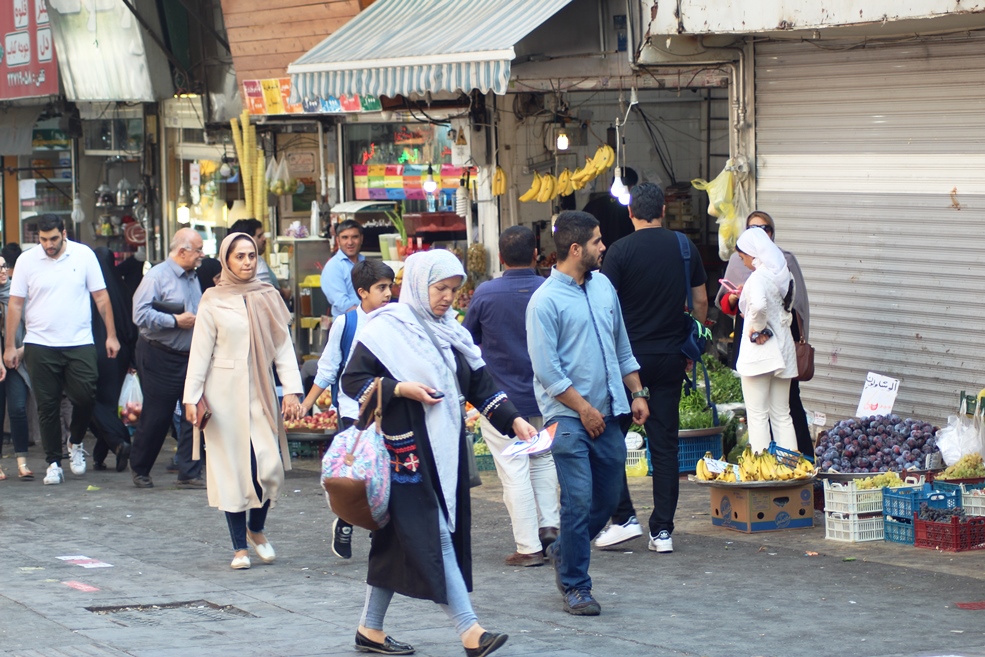
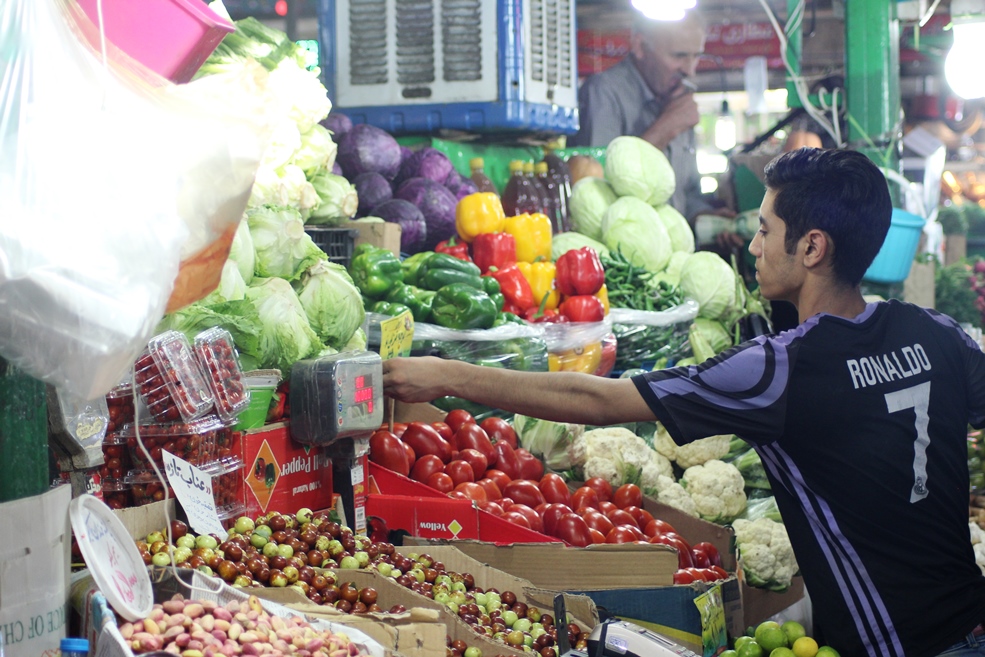
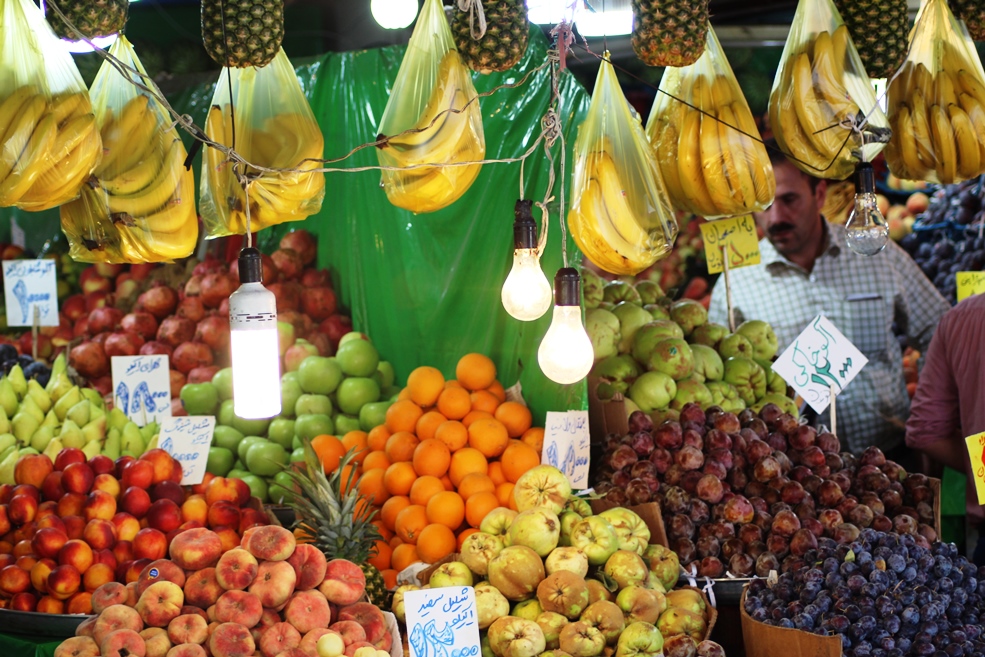
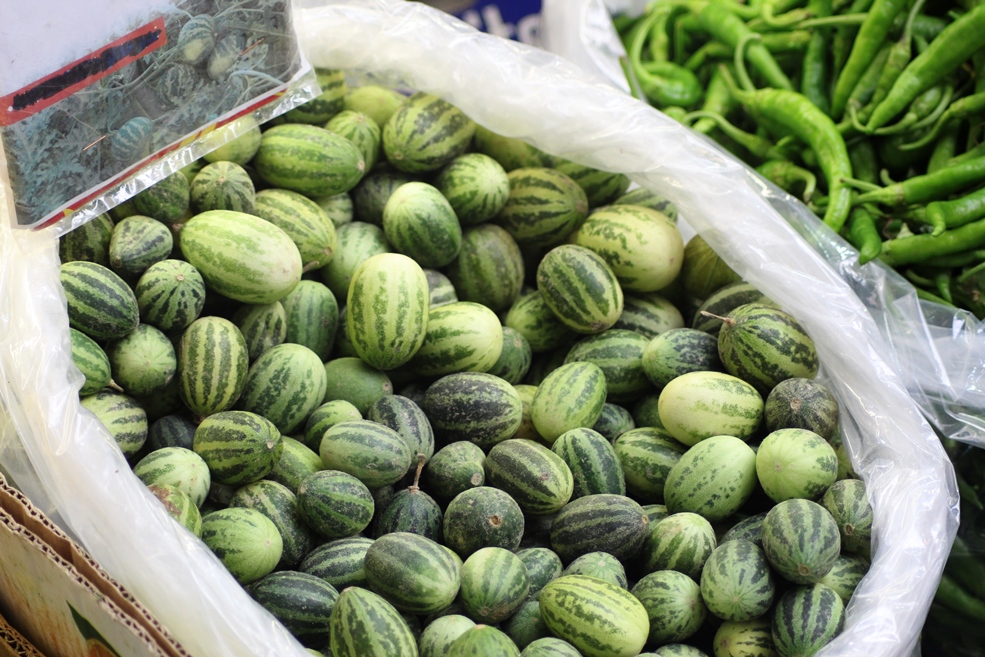
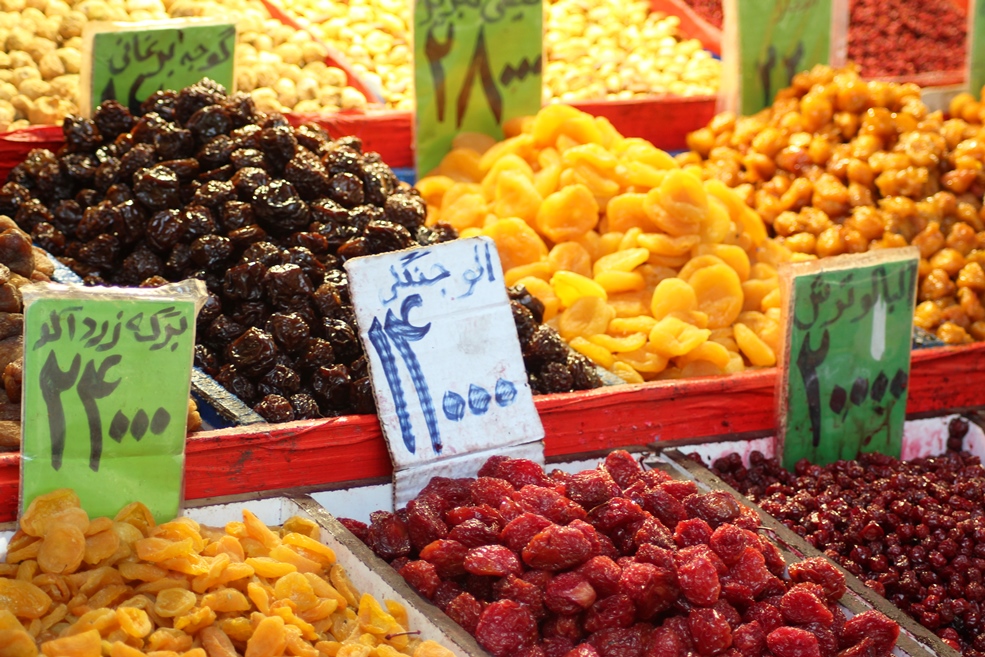
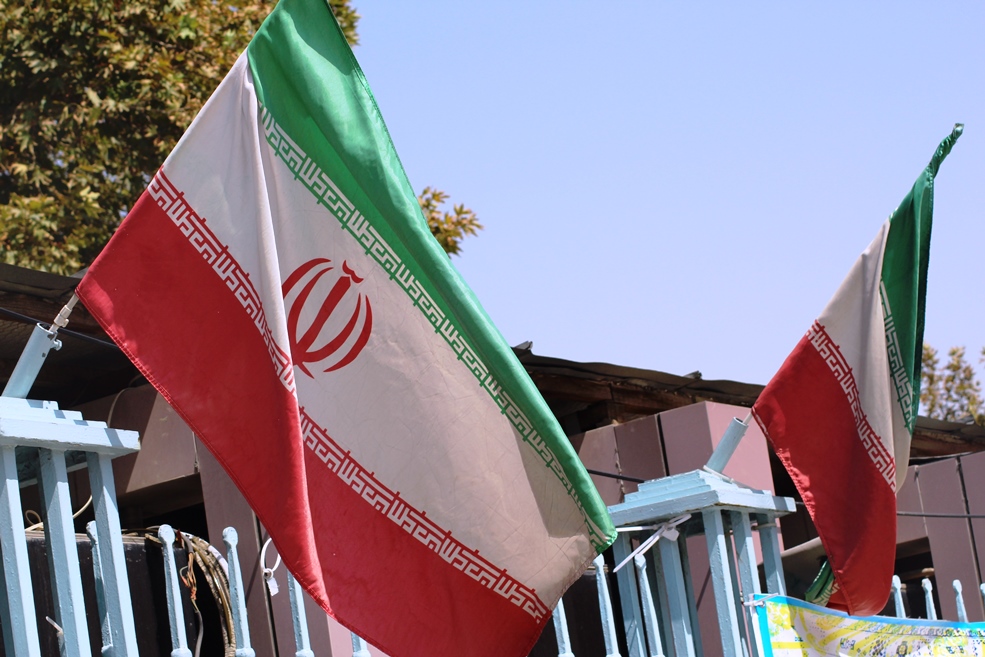
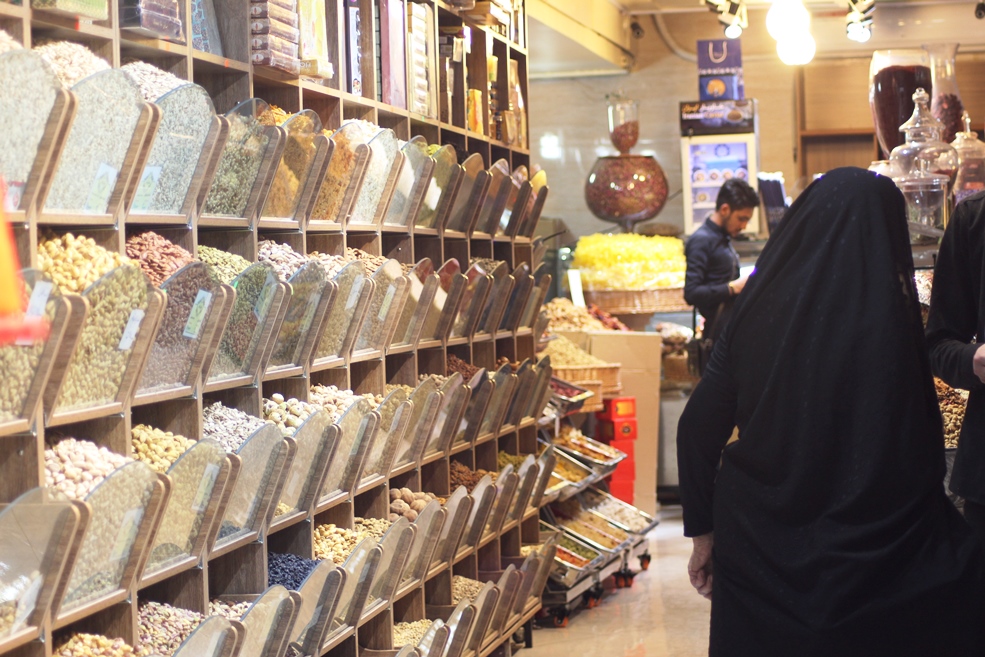
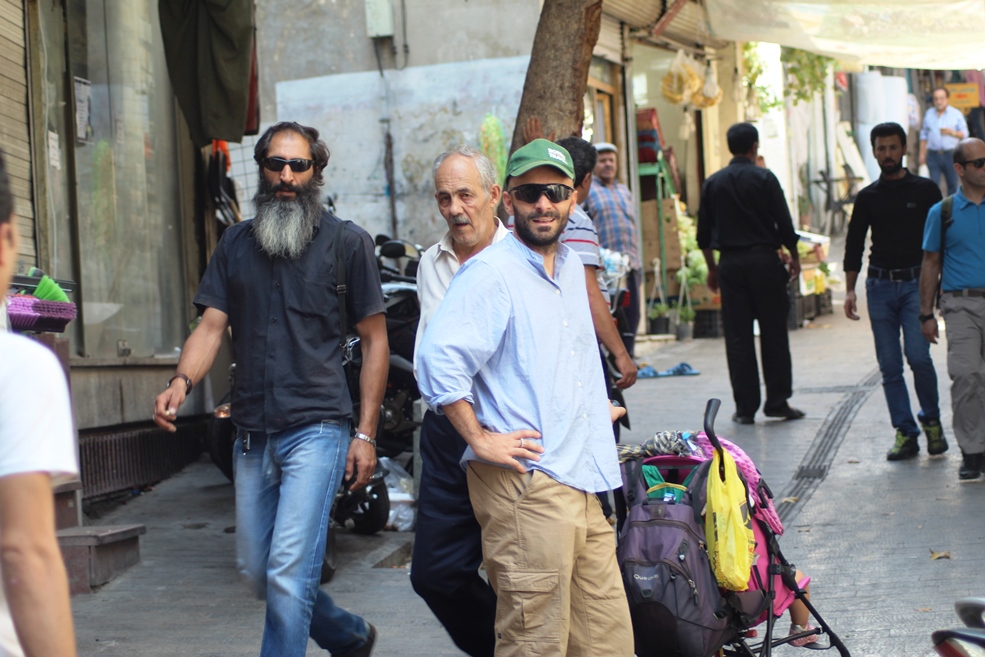
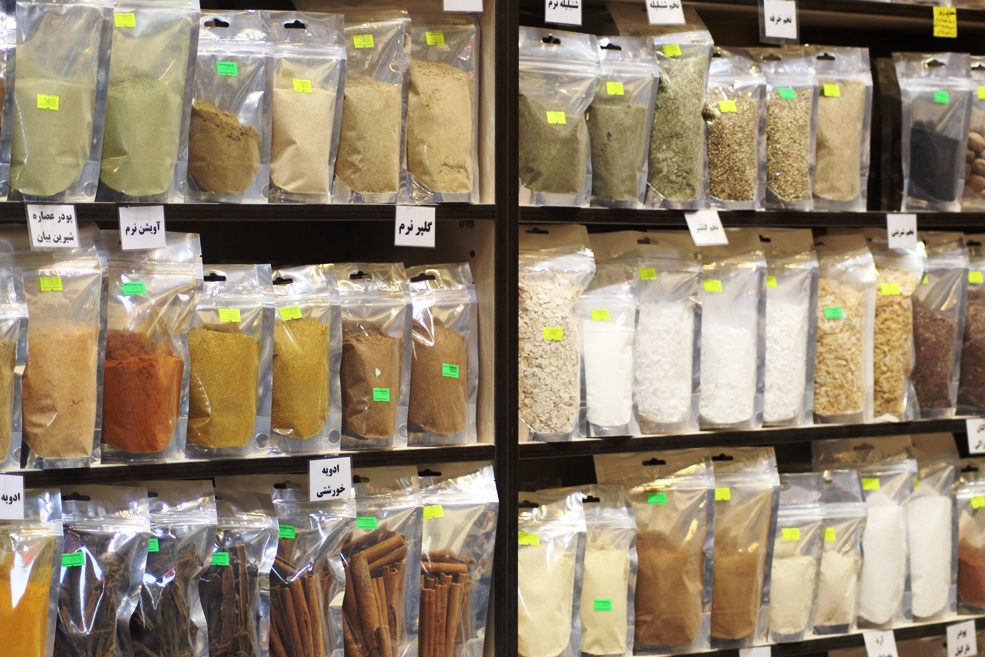
Golestan Palace. Heritage of Humanity, this monument to the glories of the dynasty qajar lies in what was once the heart of Tehran. The Palace is embellished with sophisticated decorations, paintings, European-style mirrors that testify to the obsession of the rulers of the time for Europe and France.
Iran is amazing, when you walk down the street everyone smiles at you, they greet you, many stop to play with Nora, they give her candy, bread and caresses, whispering: "welcome to Iran”.
I still can't believe that at home everyone told us "be careful, don't give confidence" ...
Here it is practically impossible not to give it, at E-Shahr Park, some girls invite us to their picnic offering us tea and fruit. Their kindness leaves you speechless.
Museum of Persian carpets. I had never considered the immense work that is in the creation of these works of art. The difficulty of the details, the large number of fabric knots per cm or millimeter is incredible. I saw some carpets that counted 70-80 knots in 7 cm and we talk about carpets of even 5 meters.
Some carpets are really elegant and only now I understand the reason for their value!
By a taxi taken thanks to "Snapp", we reach Tajirish Bazaar.
“Snapp" it's an extremely useful app in Iran, you request a lift from one point to another in the metropolis, when accepted, the driver data and the price appear, very cheap ... we will use it practically every day in the larger cities and you don't even need to buy a local SIM because just ask on the street and everyone will be ready to help you by calling him for you.
Tajirish Bazaar, it is a very colorful market where everything is sold. Its narrow alleys are teeming with people, the smells of freshly ground coriander mingle with those of various incenses. It is exciting to wander aimlessly without losing too many thoughts.
Today we fly towards the south of theIran, in the desert area, let's just hope it's not too hot.
With its winding, narrow alleys, veritable mazes of mud and straw, wind towers and low houses of the old city, Yazd welcomes us on a warm September afternoon!
High bagdir (wind towers) built to collect every smallest movement of hot air that, passing through a tub of cold water, refreshes it and diffuses it giving a light refreshment!
Set in the northern desert of Dasht-e Kavir and the southern one of Dasht-e Lut, Yazd is a little gem in the south.
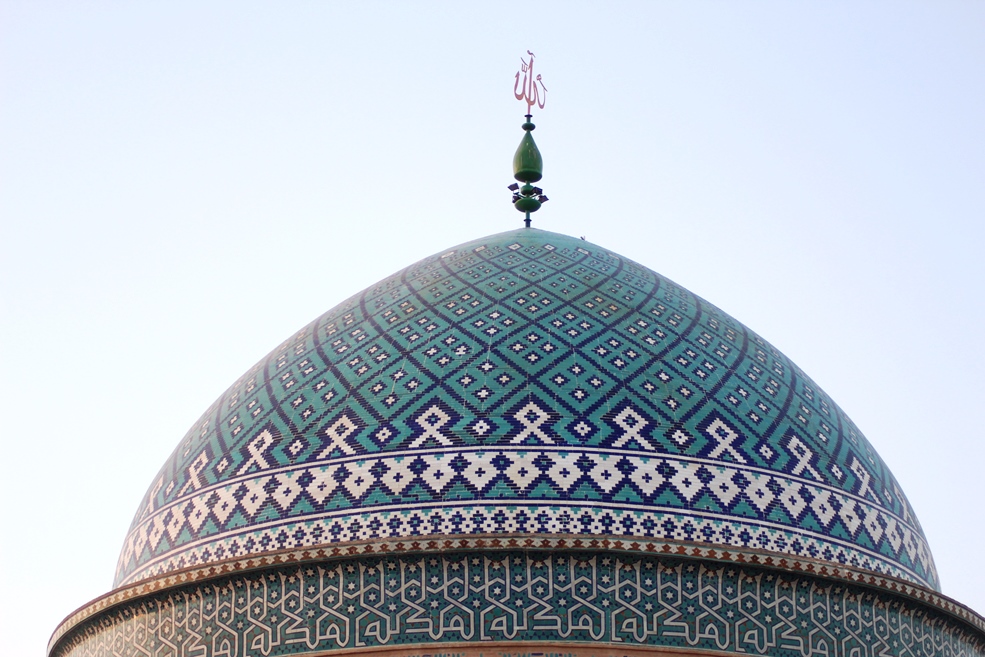
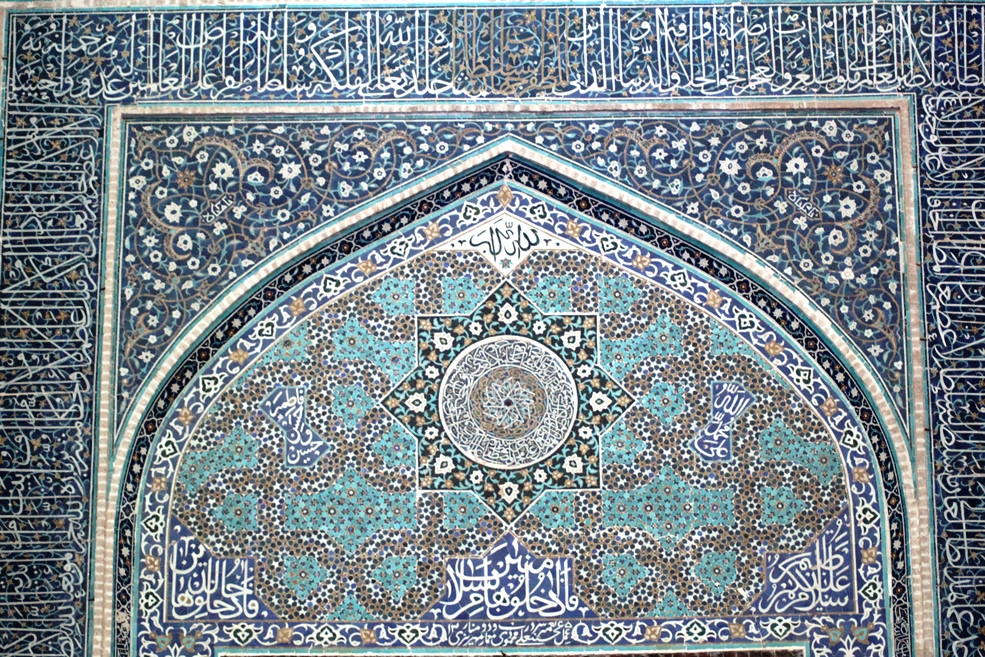
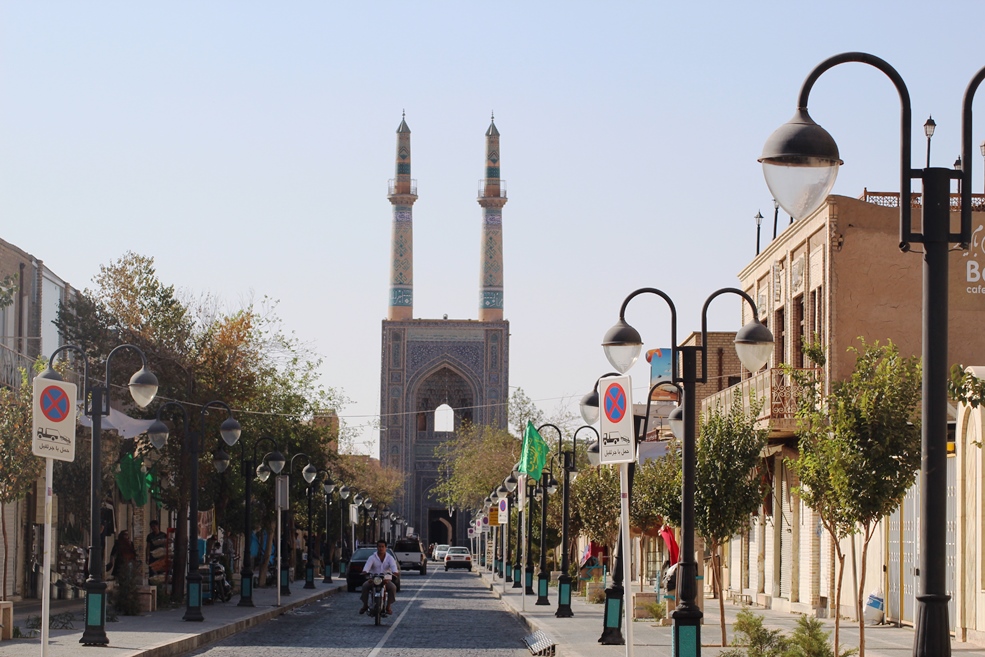
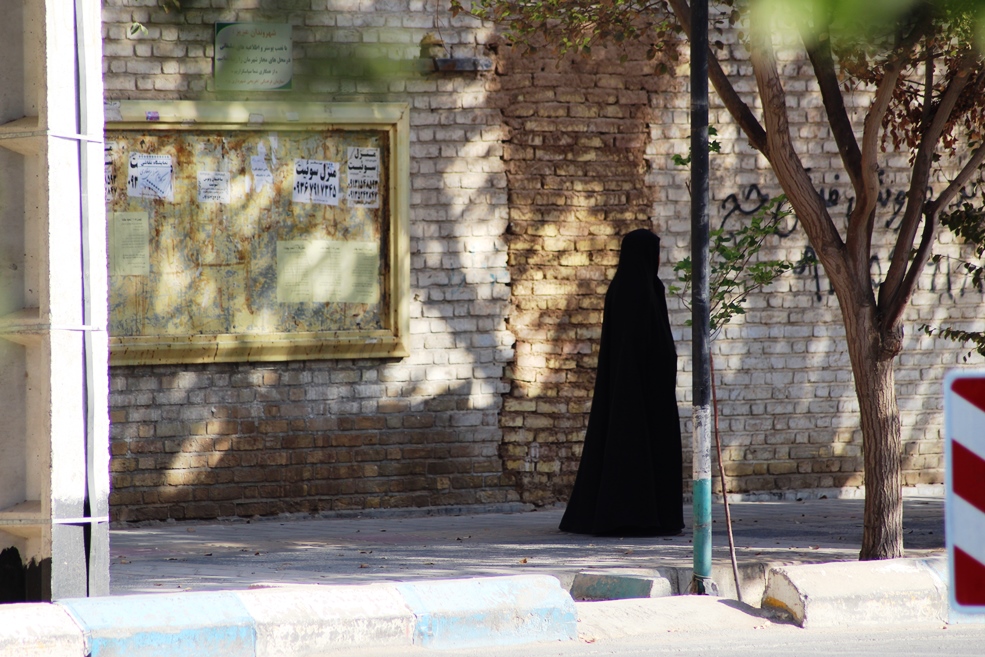

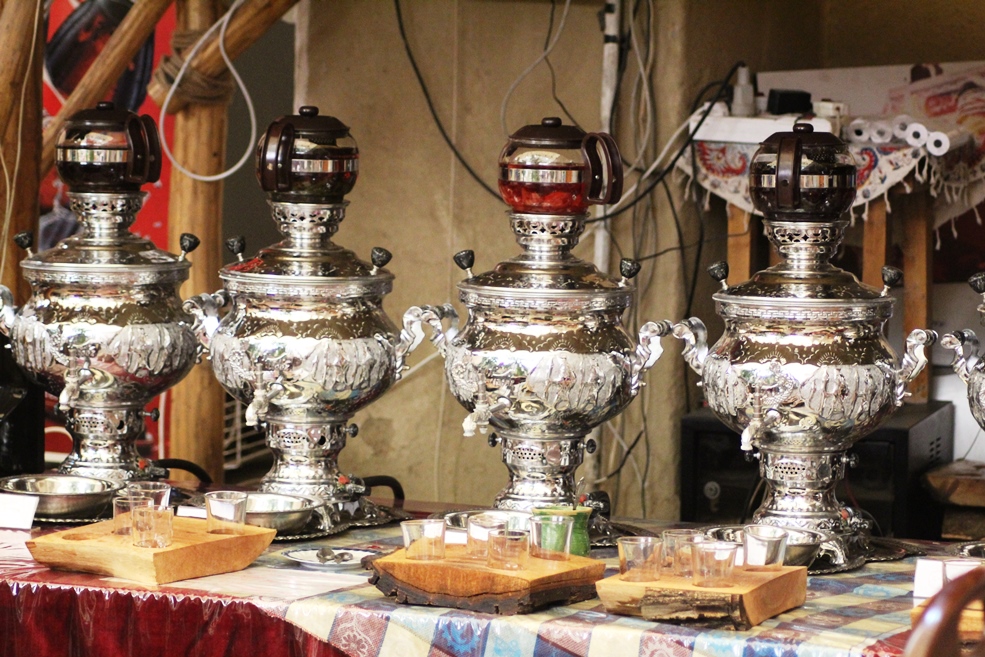
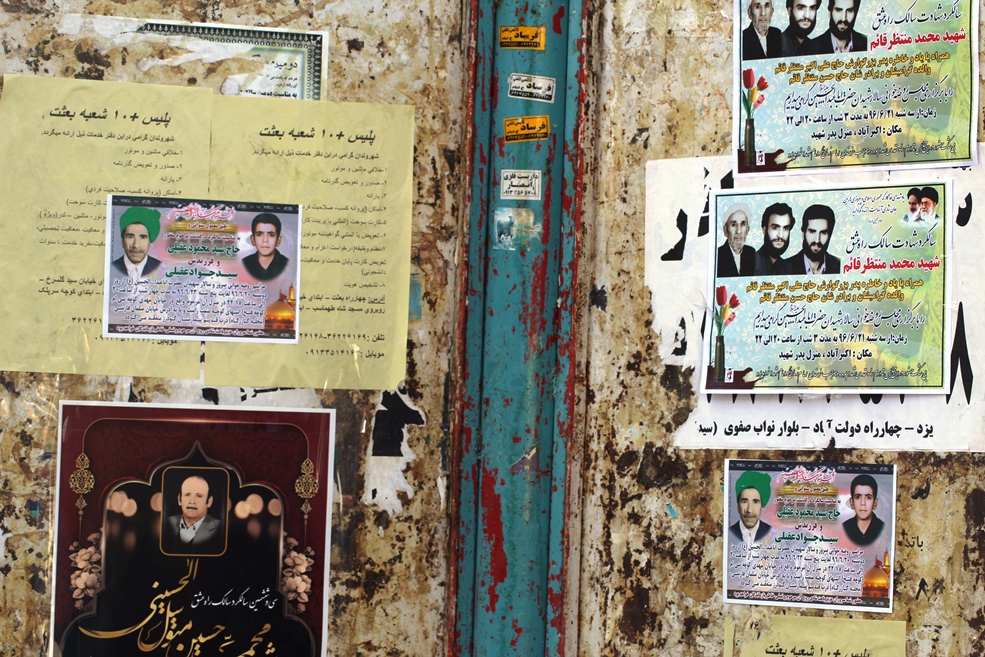
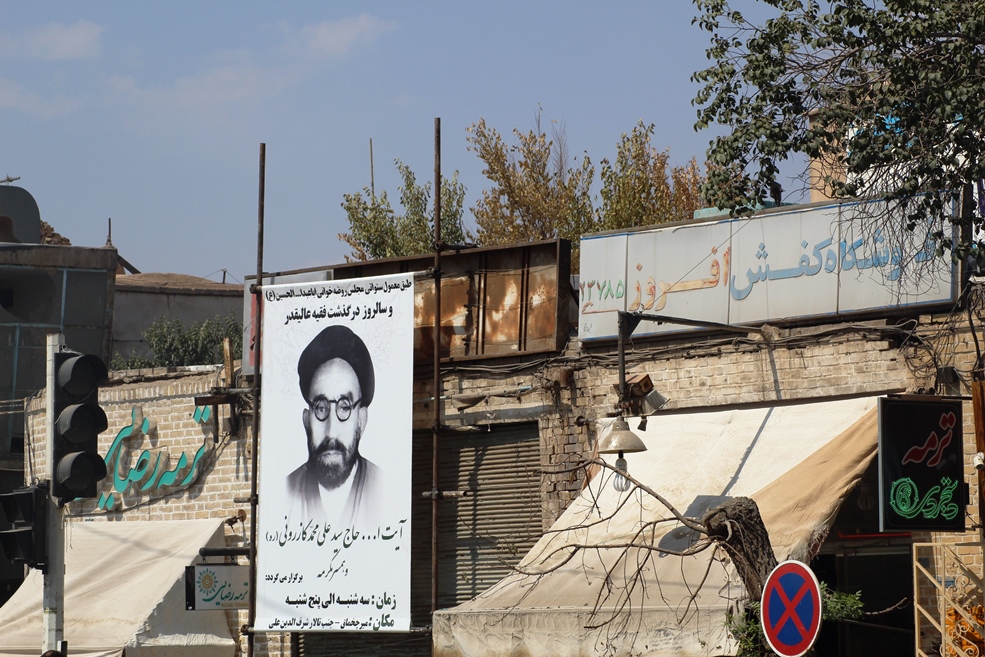
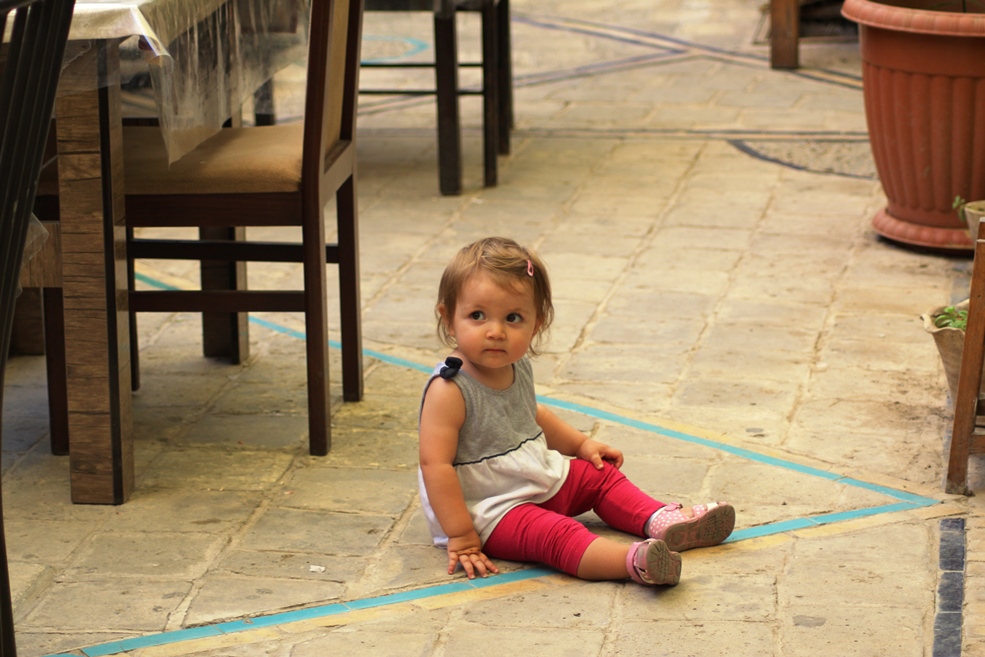
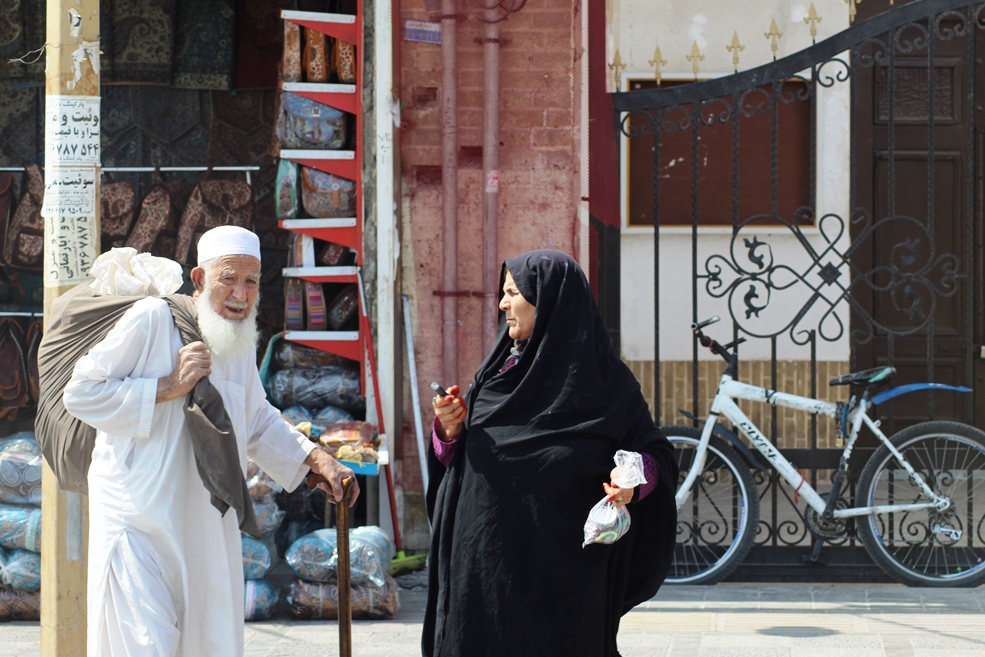
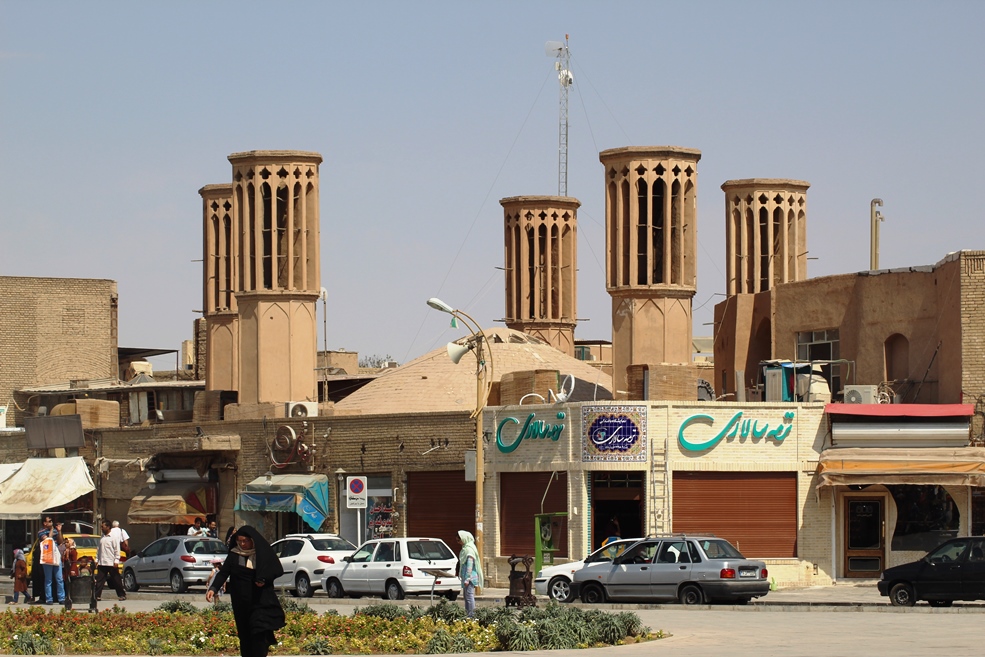
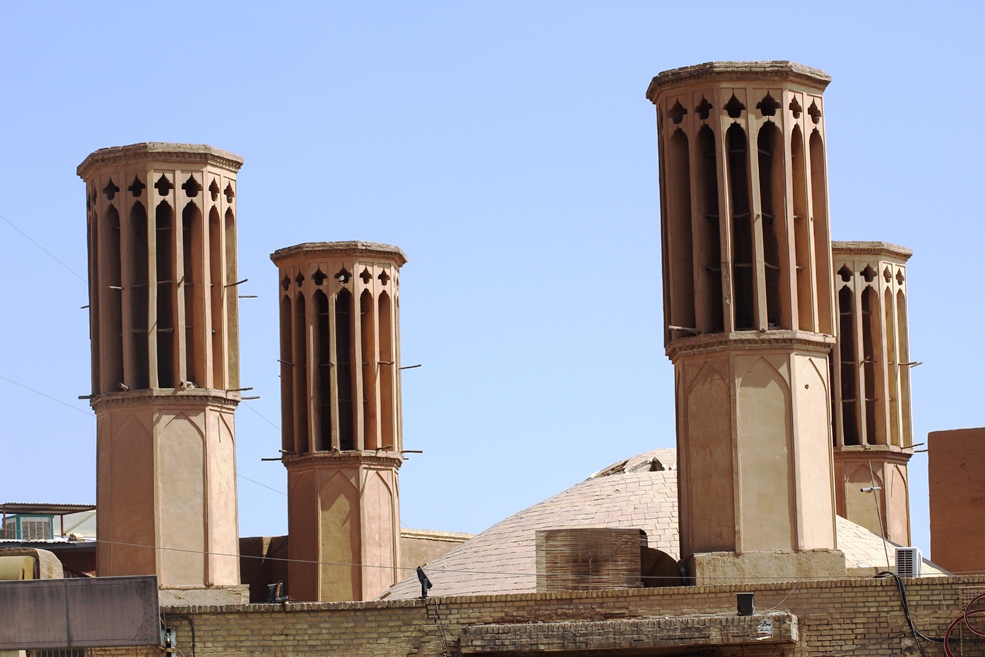
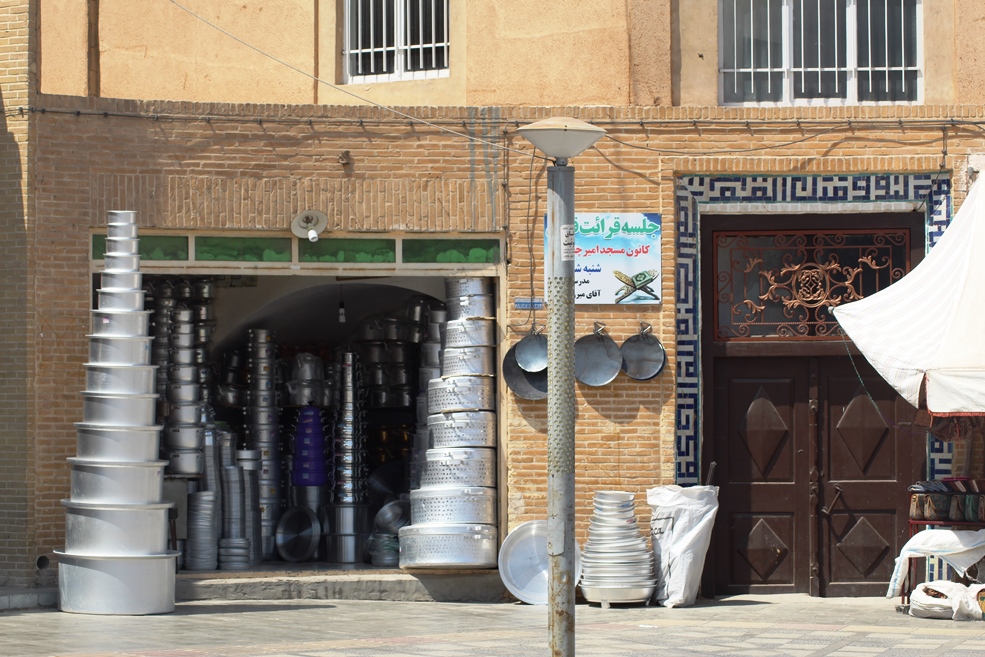
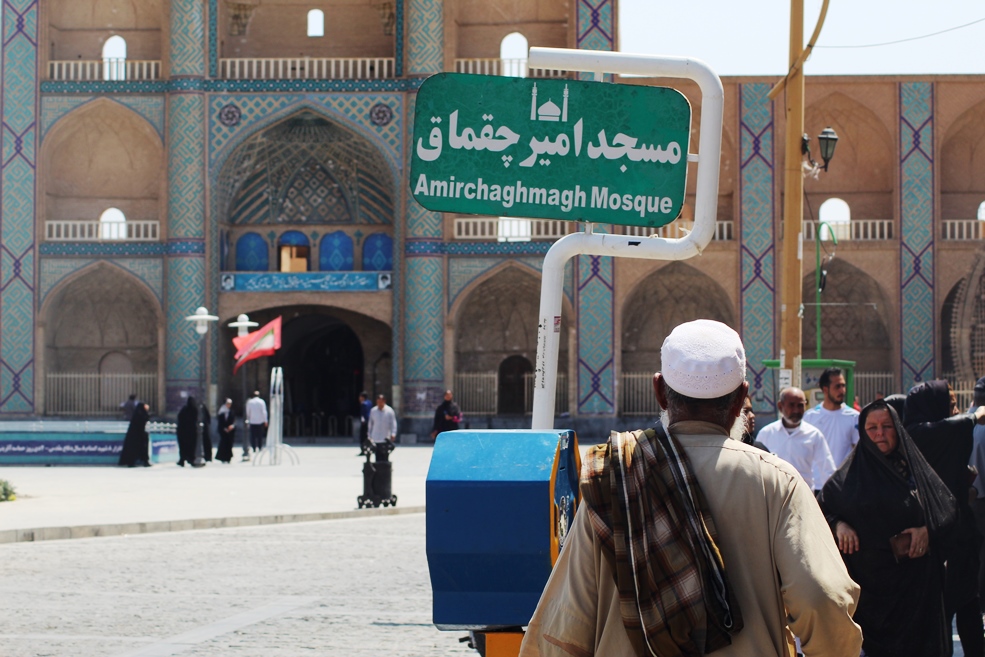
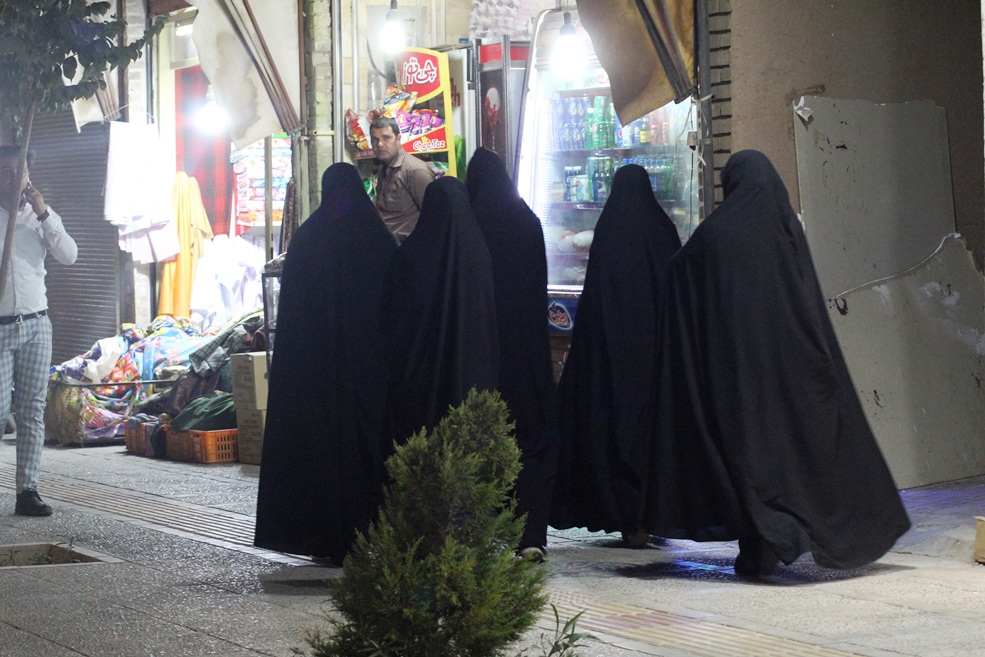
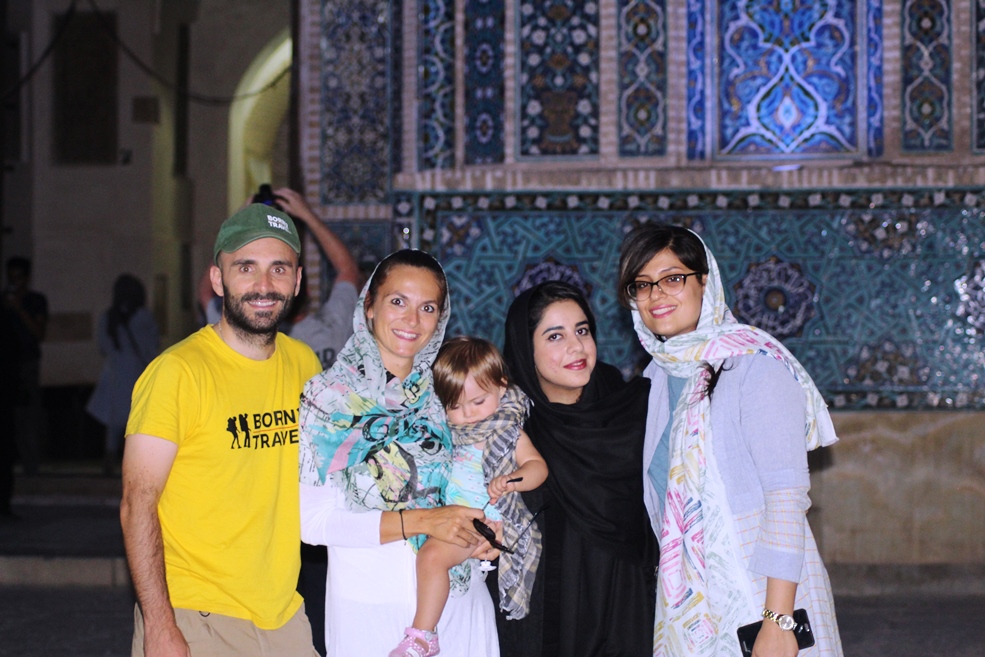
We stay at the Silk Road Hotel, an ancient traditional house, in front of the Jameh Mosque. A magical and picturesque place. The interior courtyard is very nice, elegant in its folklore, there is a small pool of water in the center and many sofas all around. There is also an excellent little restaurant that gives you the opportunity to taste many local specialties, camel meat is a must! Thanks Alì for the warm welcome.
If you go out in the early afternoon a Yazd you don't find anyone around, all the shops closed ... in the evening, instead, you don't even have the space to move!
Jameh Mosque dominates the old city, then at night, it becomes enchanting. Its portal is all tiled and the turquoise blue colors, at sunset, are really creepy. Its minarets seem to be guardians of this biscuit-colored city.
Complex Amir Chakhmaq. One of the most recognizable buildings of the wholeIran, wide and deep niches all in a row that overlook a beautiful square, make you dream and imagine how the old could be Persia.
Opposite there is the gold bazaar. I am curiously approached by a small group of girls, they look at me smiling and make me understand that they do not speak English ... a merchant tells me that those women do not even speak Farsi: they are Afghan!
We end up having lunch at Malek-o-Tojiar, a delightful little restaurant inside a splendid traditional house.
From the top of a hotel terrace, in one of the innumerable alleys, we enjoy a fabulous sunset ... the domes, the minarets, the bagdirs, everything was in the right place in a warm, golden, perfect light!
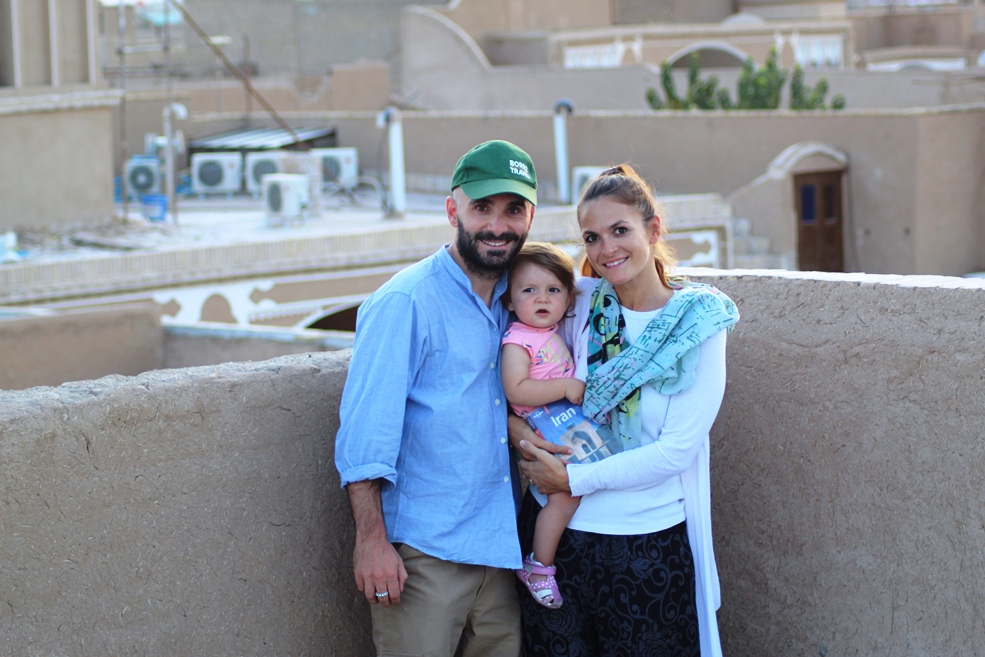
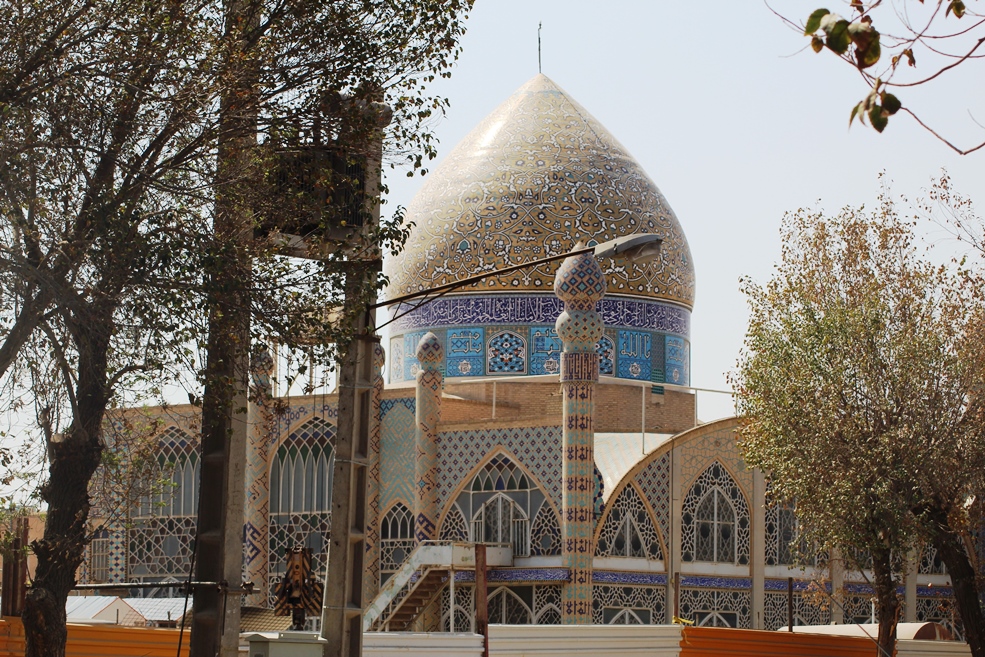
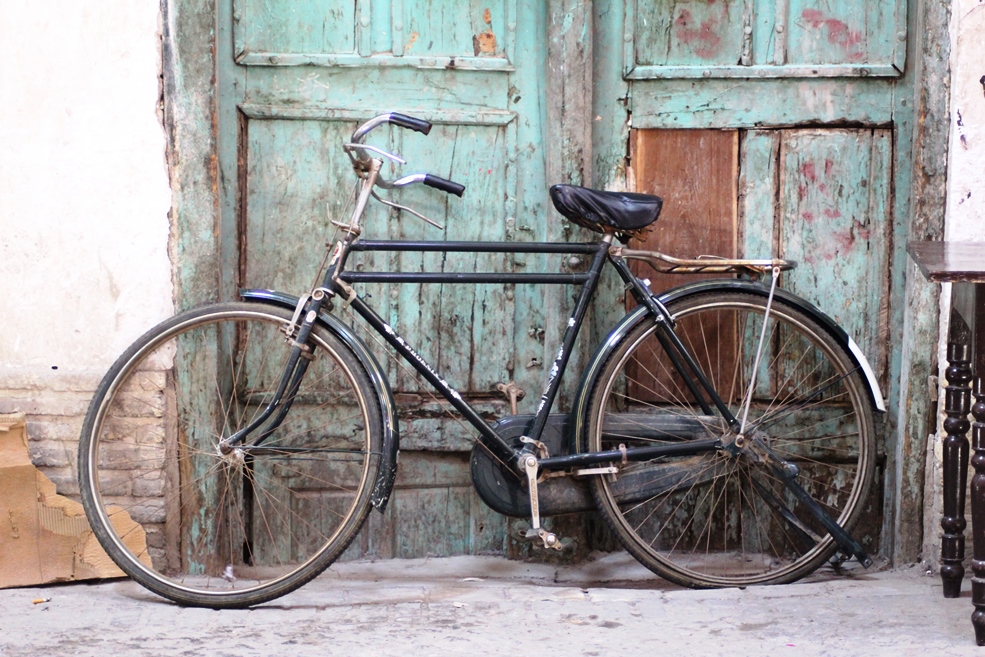
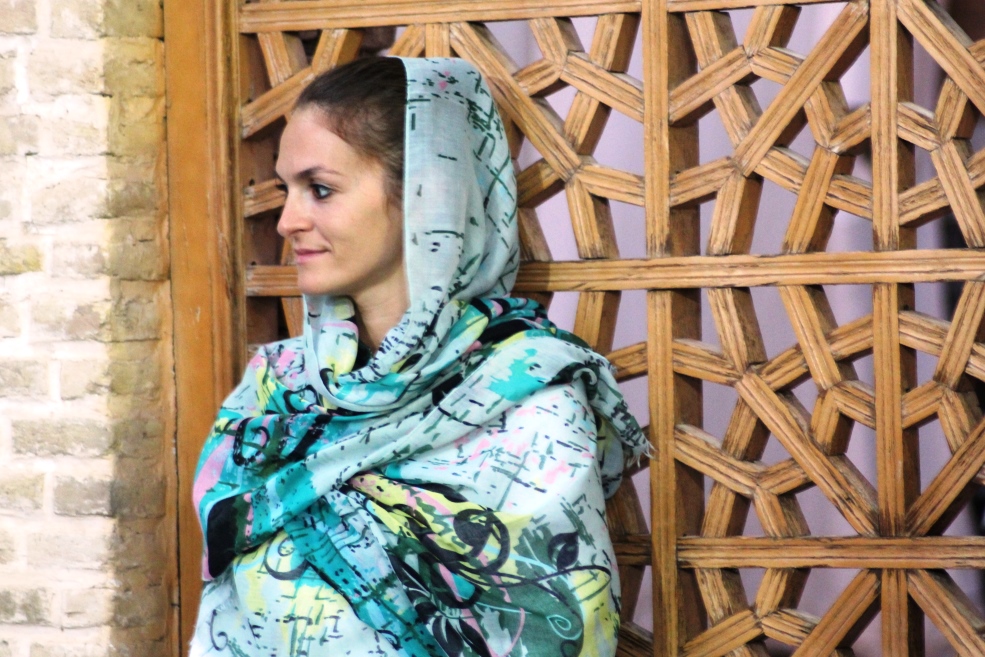
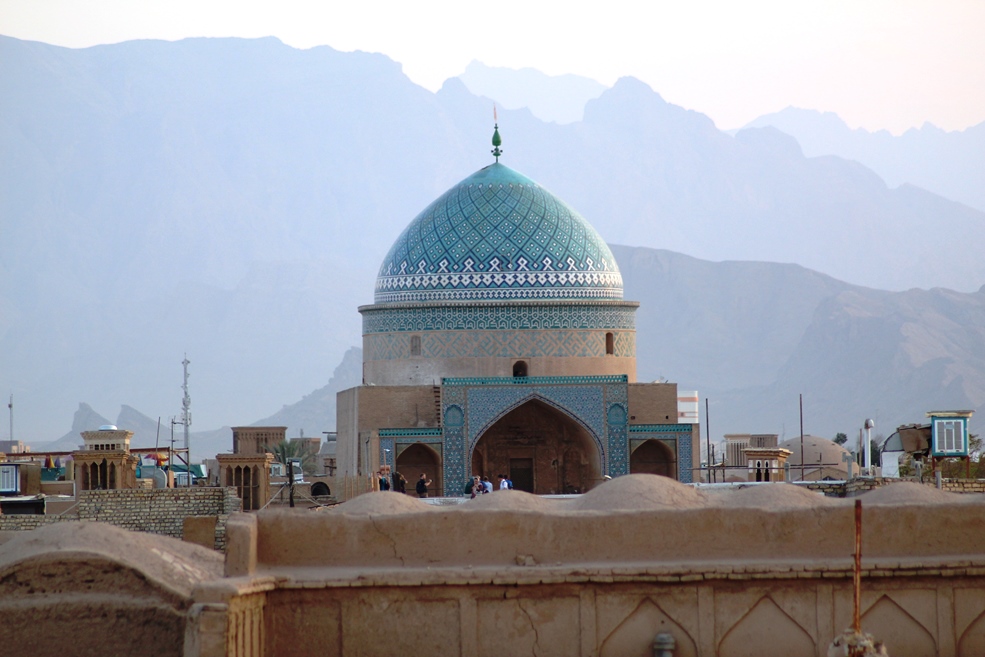
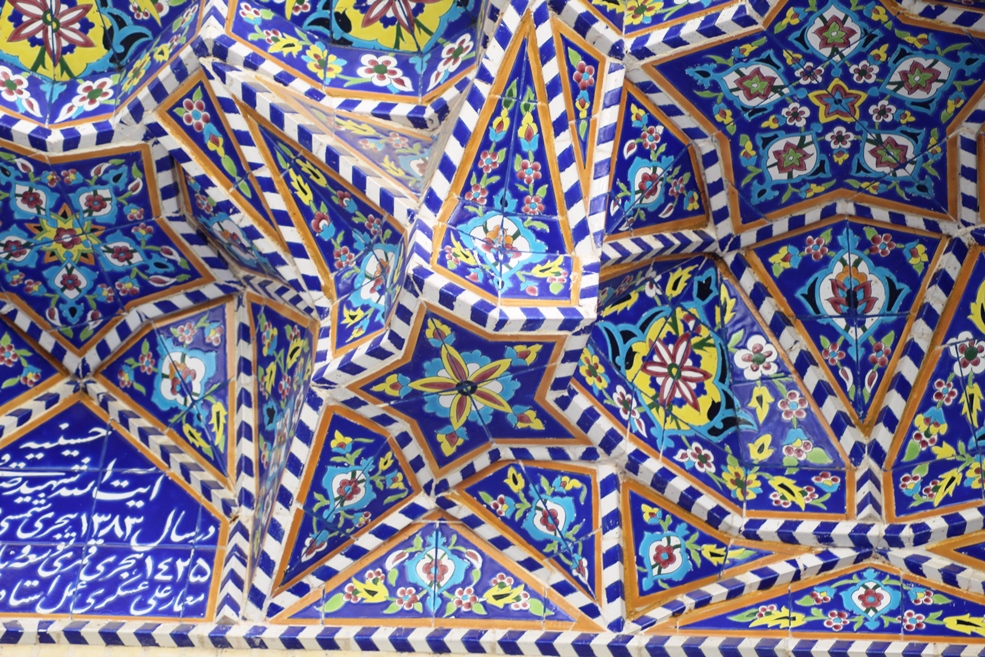
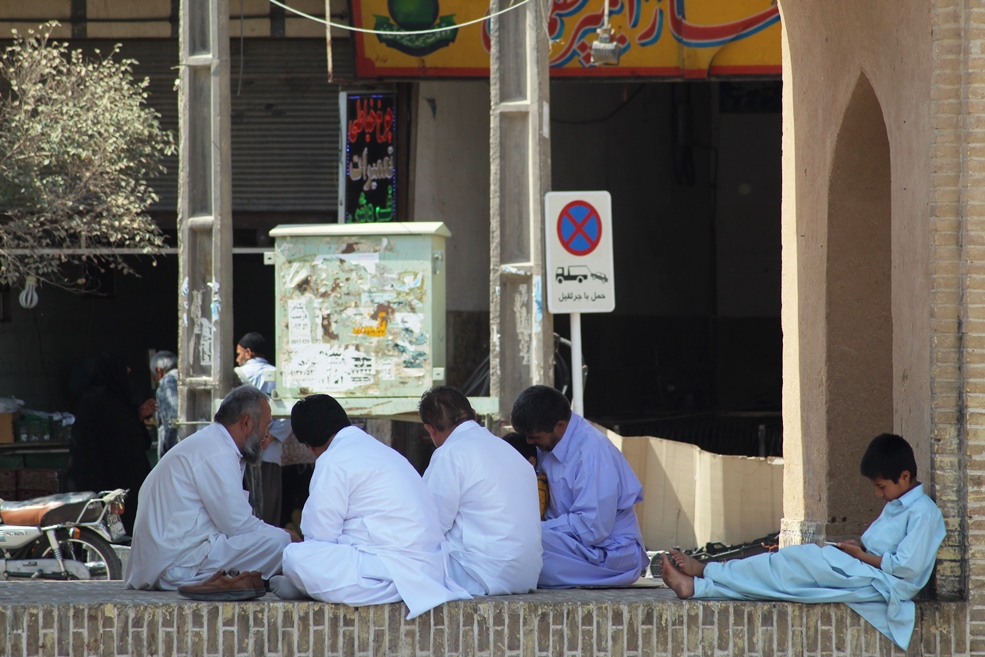
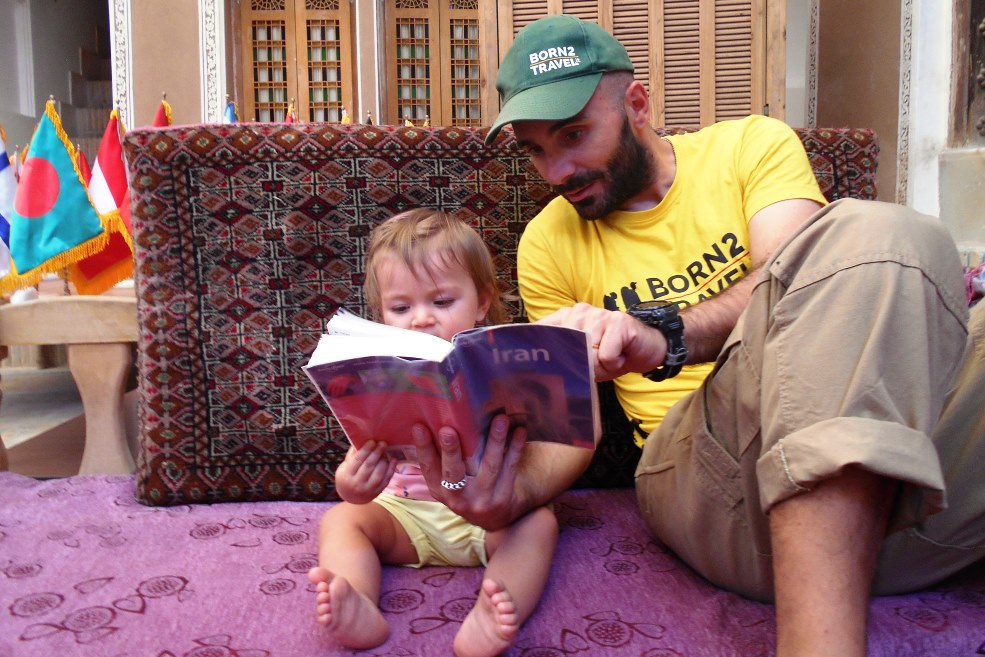
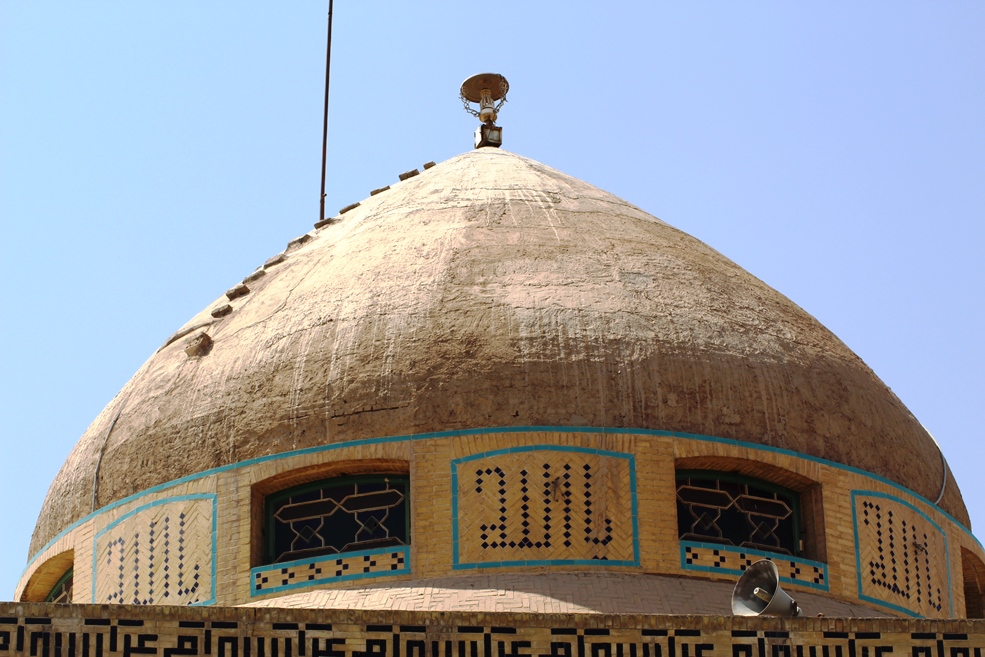

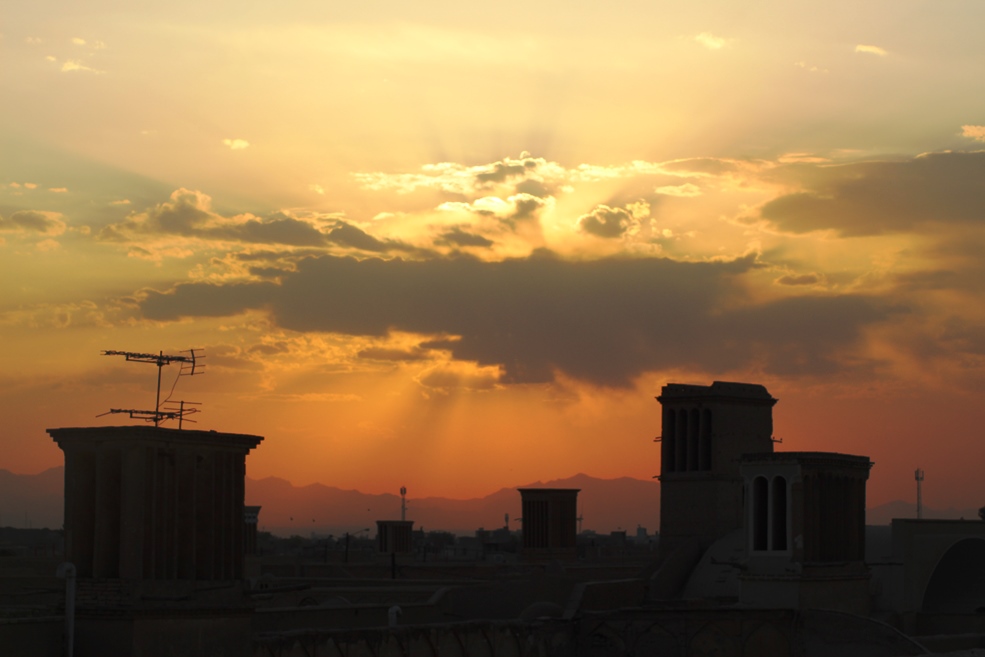
When an unexpected leads you to live an extraordinary experience.
This morning we had to go to get the bus to Abarkooh, in the taxi journey from the hotel to the bus terminal, we are aware of the difficulty of being able to reach Isfahan from Abarkooh, our next stop... in a few minutes we change all the programs, we manage to: change the bus ticket, book a new hotel, cancel the previous one, learn that in Iran there is a village called Toudeshk and depart".
I will never forget the face and expression of the mustachioed driver of our bus from Yazd to Toudeshk… where is it? Not even the Lonely Planet mention this little mud village between Nain and Isfahan... but we had no alternative!
After three hours of traveling along a very arid desert landscape where a small village rarely appeared around a mosque ... suddenly the bus stops ... we look out the window ... nothingness ... 35 ° degrees ... all the passengers look at each other wondering if it happened something ... the driver approaches us shouting: Toudeshk!
We go down ... the driver rests our backpacks on the dusty ground and, worried, looks at us with a very eloquent expression: "And now what are you doing here?"
We take it with philosophy, pretending that we know what we are doing, smile at it and wish it a safe journey! The bus restarts ... the scene is comic ... even Nora looks at us puzzled!
We burst out laughing and we move towards the only hut ... a plump man appears, looks at us and says: "Mohammad Jalali"(the name of the owner of the Guesthouse booked by the bus terminal) ... as if it were a code word, I nod and two seconds later we find ourselves piled up on a pick up with our backpacks and stroller in the back between bags of cement and lime !
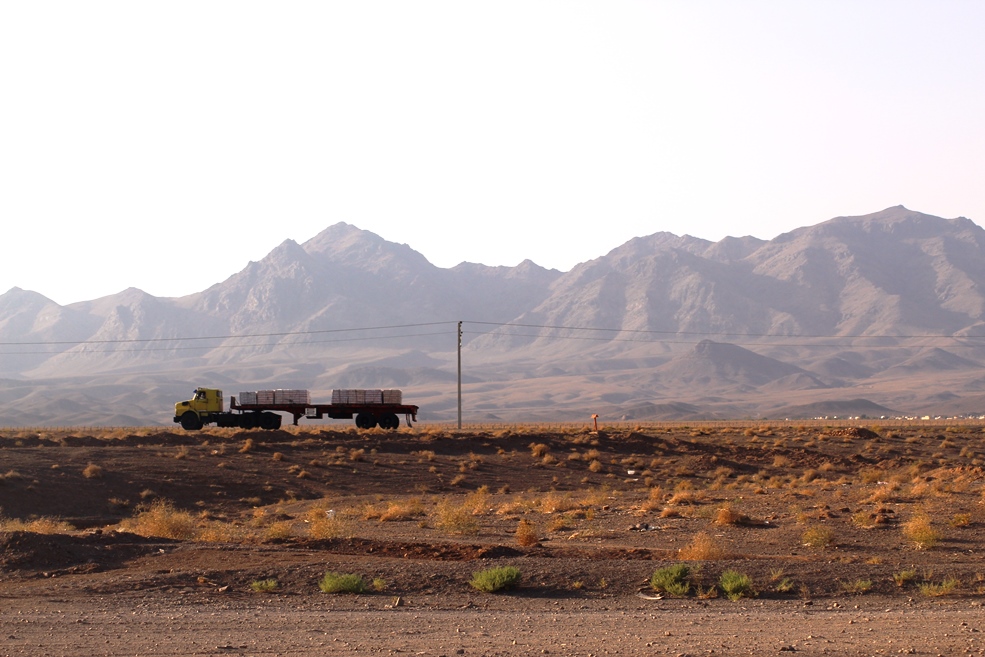
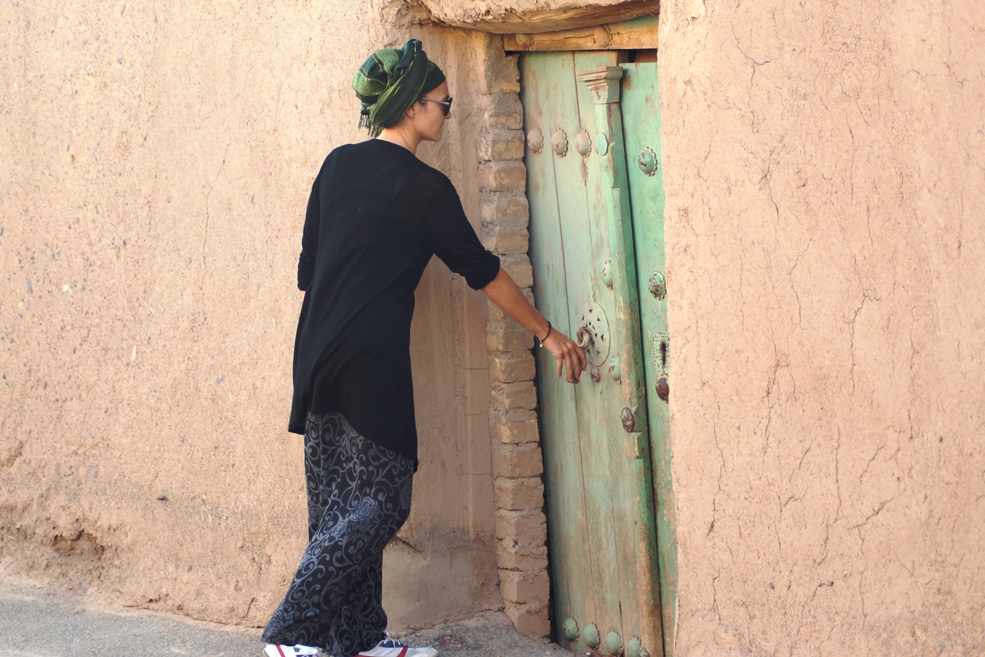
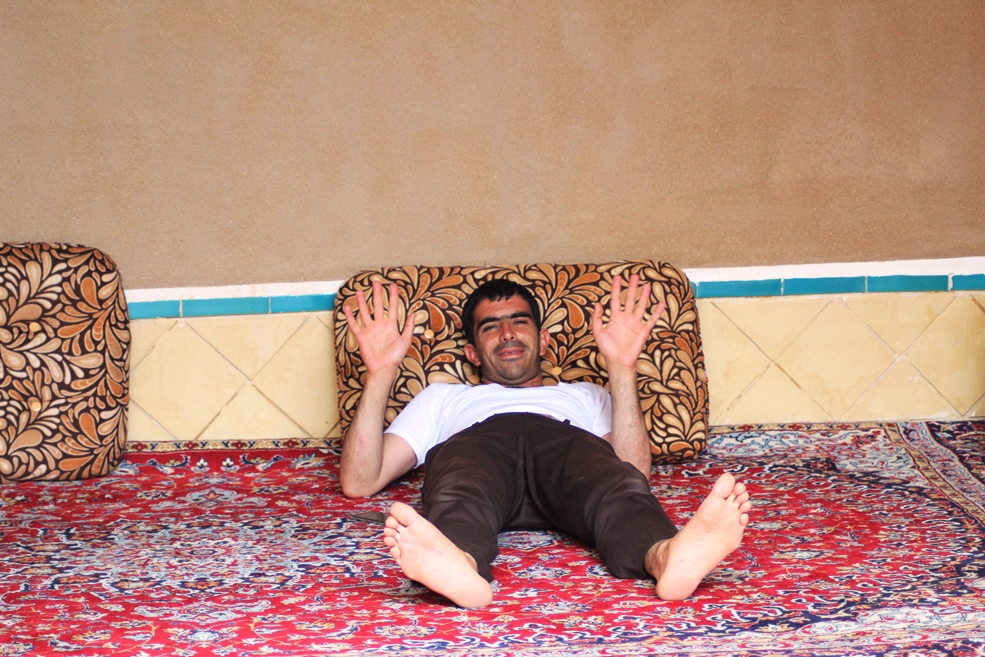
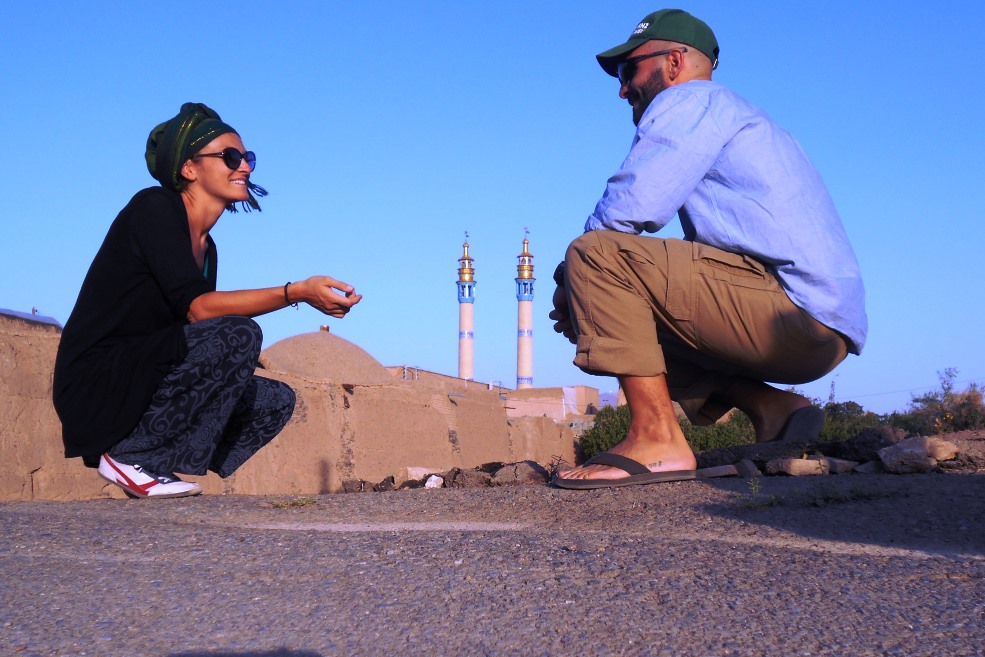
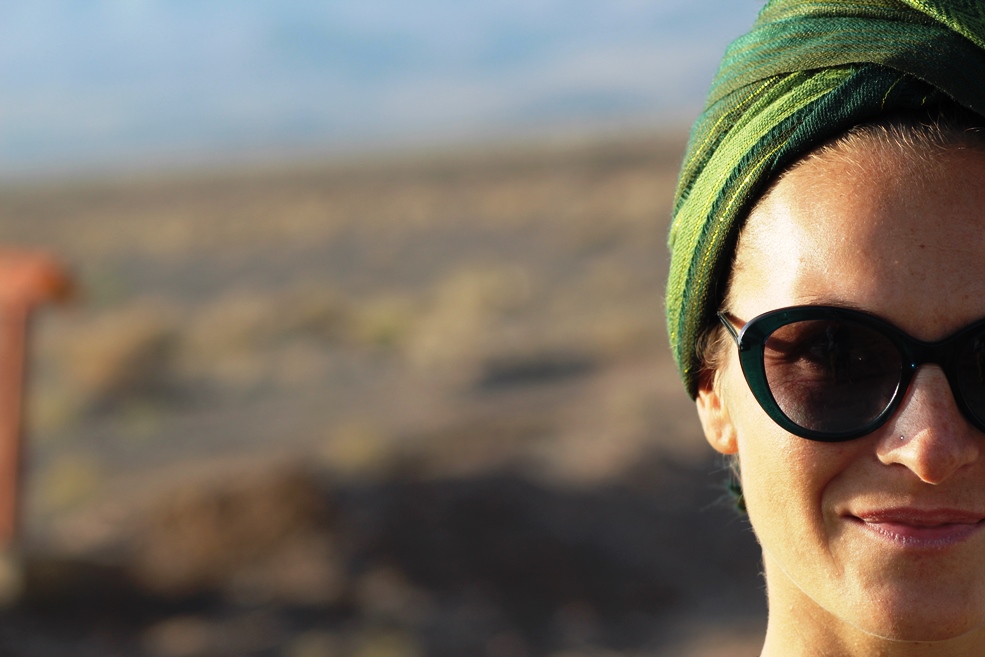
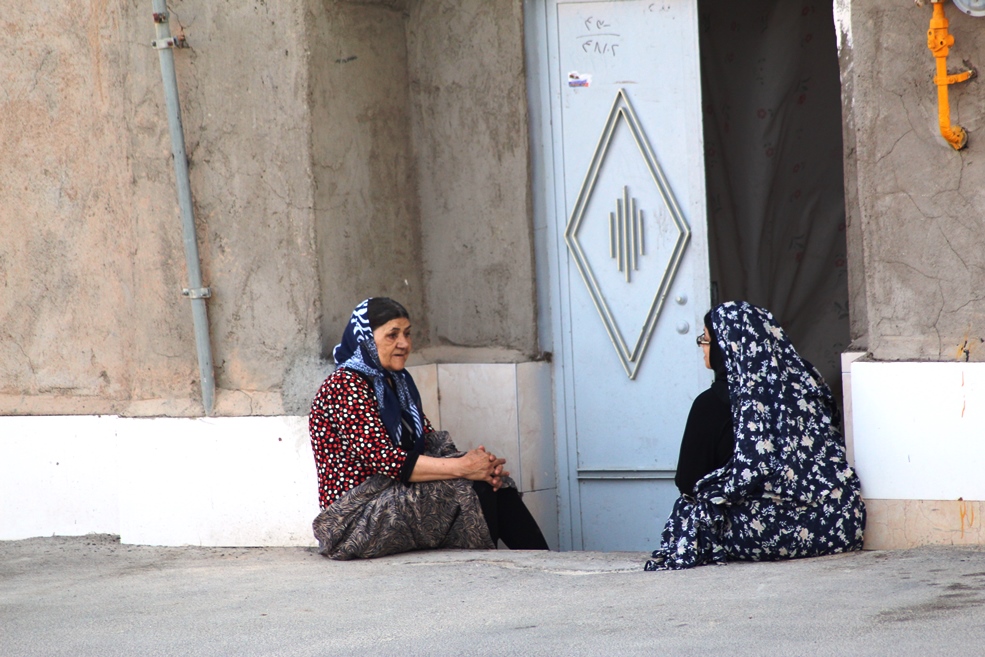
Crossing the door of the Tak Taku Guesthouse... a desert oasis ... peace, tranquility ... Mohammad welcomes us sleepy.
He tells his story: when he was a child he saw groups of European cyclists and motorcyclists who, going along the Silk Road, went to India or China... Many stopped at Toudeshk where, then, there were no accommodations ... everything starts as a joke, without knowing English, begins to "host" these men who came from so far away ... it helps them to pitch tents in the courtyard of his parents' old house, he offers them water hot for the shower and slowly the idea of building something ... with enormous sacrifices his beloved guesthouse was born.
We go out for a stroll around the little mud village ... we meet women who come to greet us and welcome us ... We reach the magnificent mosque where Mark finds himself playing table tennis with local boys while Nora runs and jokes with girls.
Nora, sweet love. I see her happy, I see her interacting with children so far geographically and culturally from her and, at the same time, I see that it doesn't matter the language, your roots: the children are children, they play and have fun, they smile and caress each other. I love the world and I love my daughter in the world that every day gives us unique and unrepeatable moments.
In the evening we eat on the ground all together, we talk, we laugh and we admire this magical place that, at night, illuminated, becomes even more enchanting.
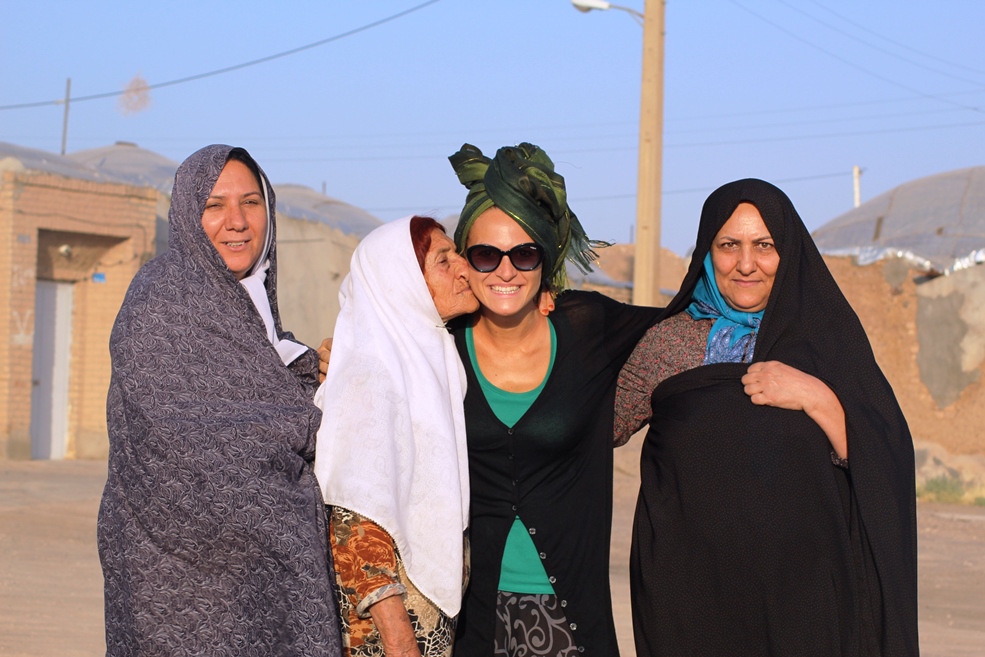
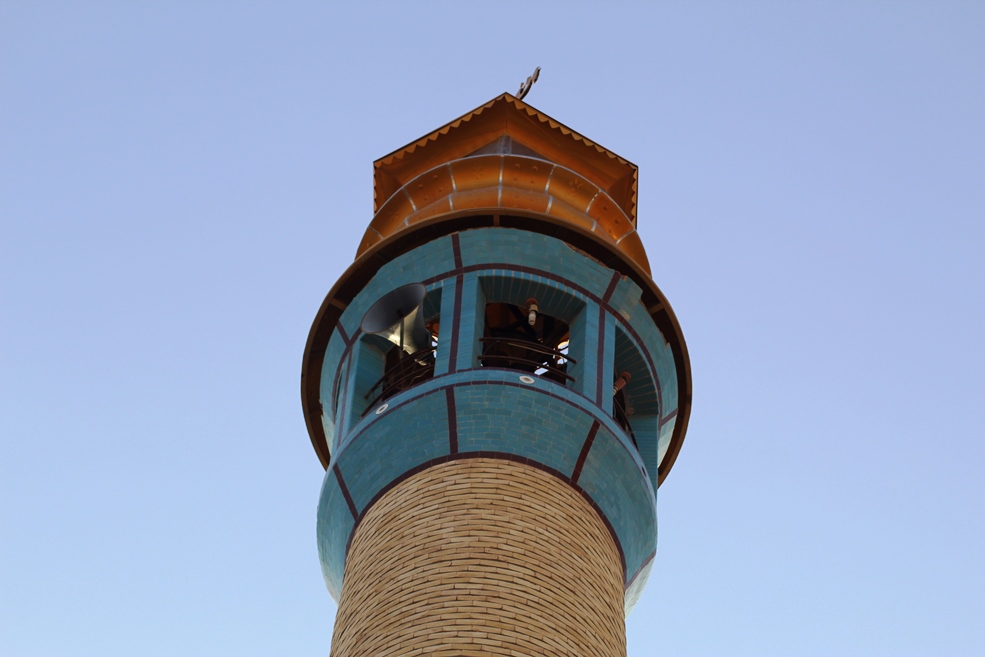
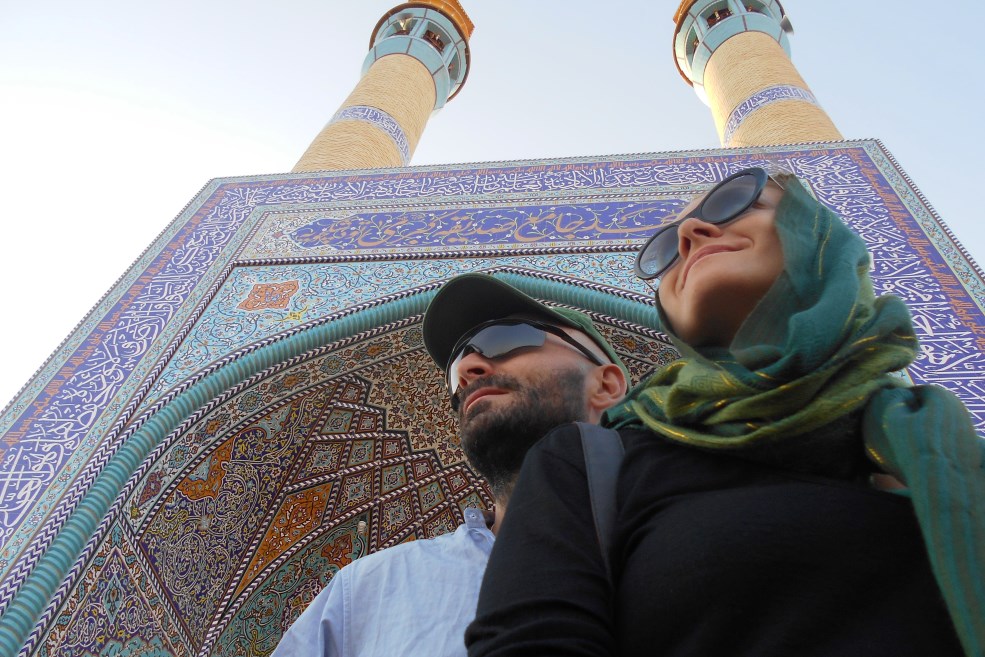

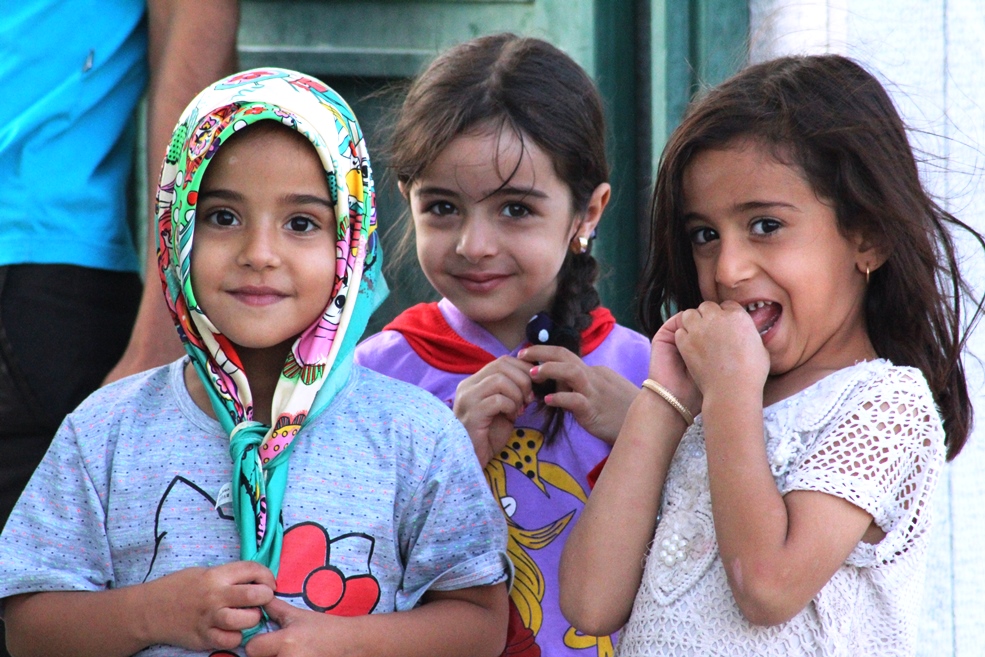
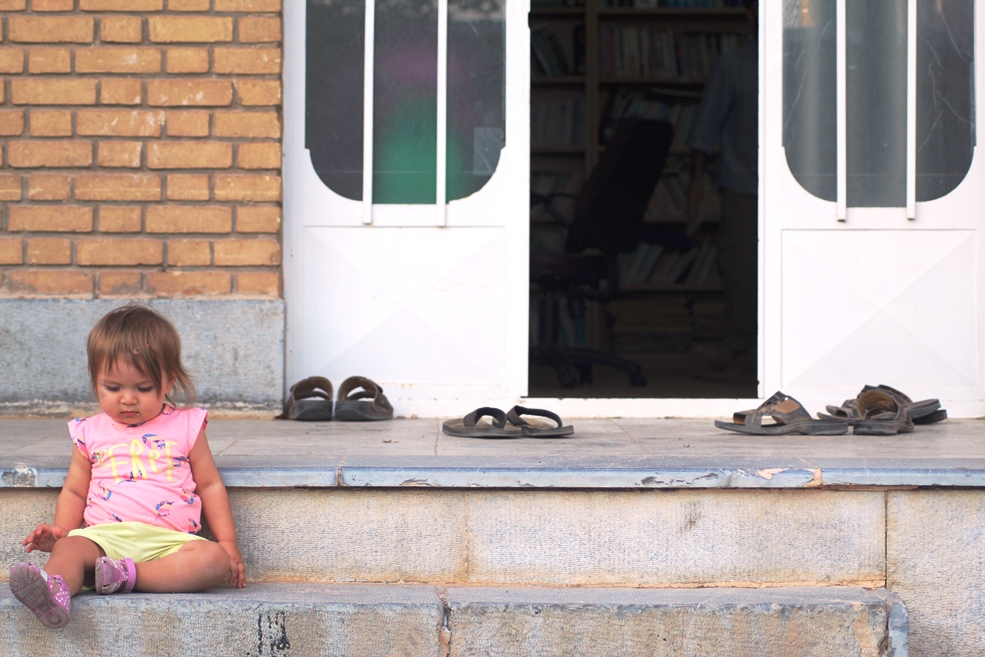
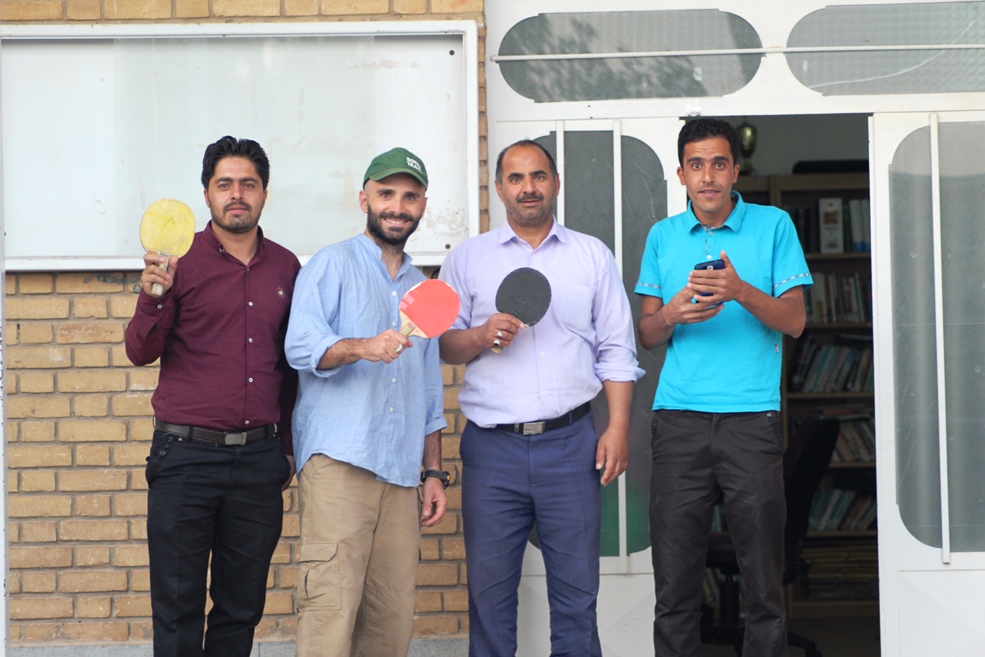
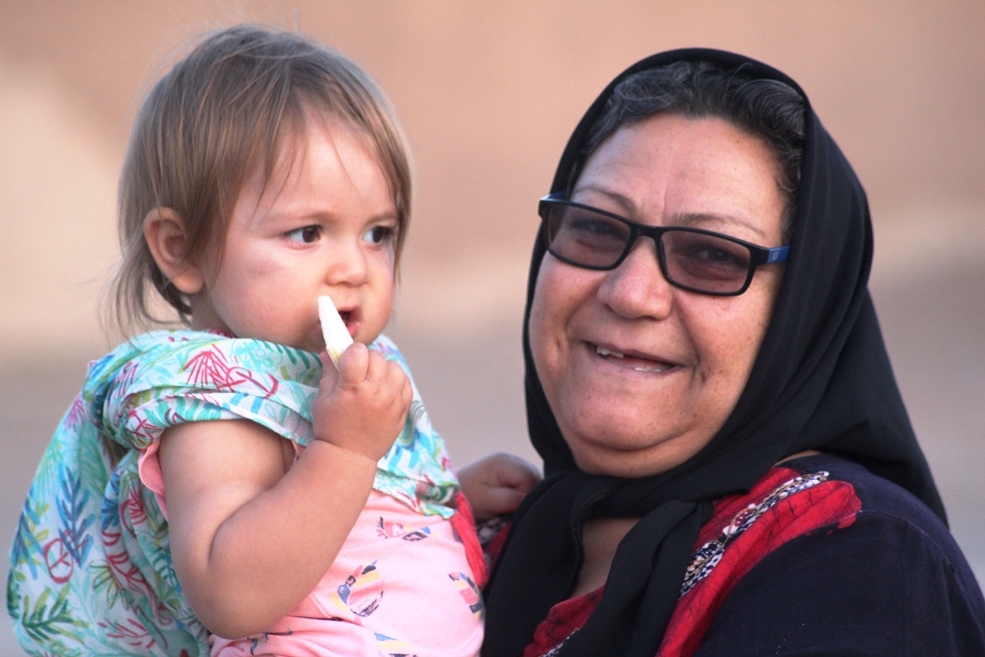
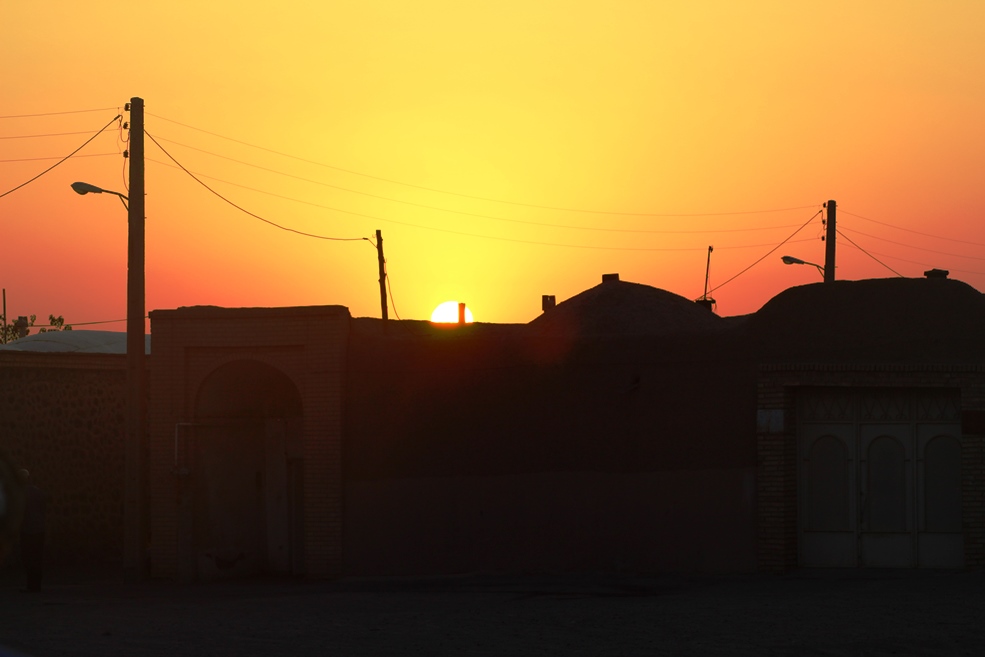
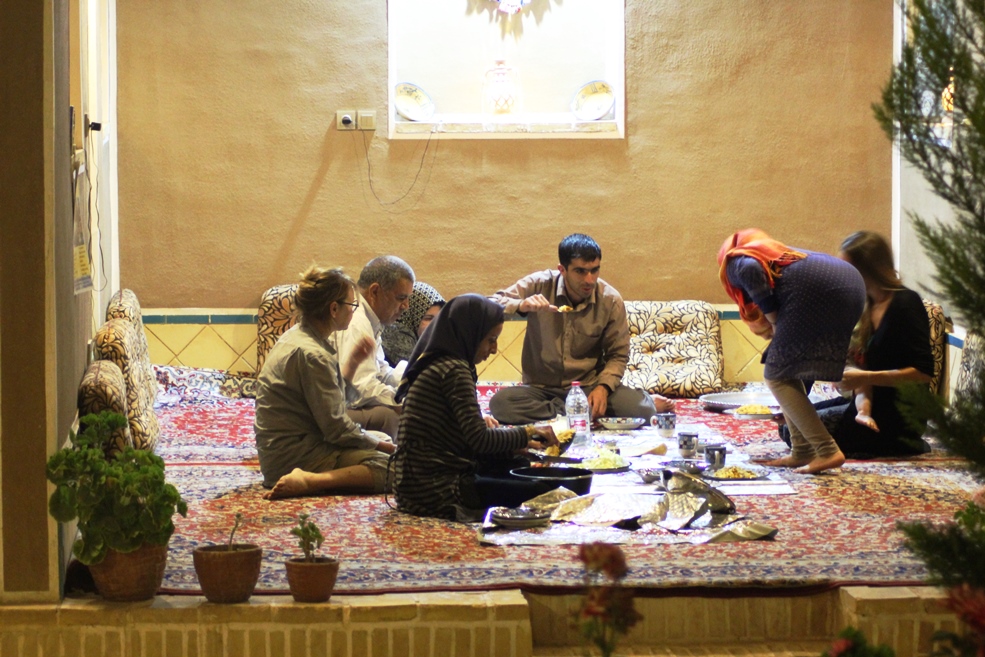
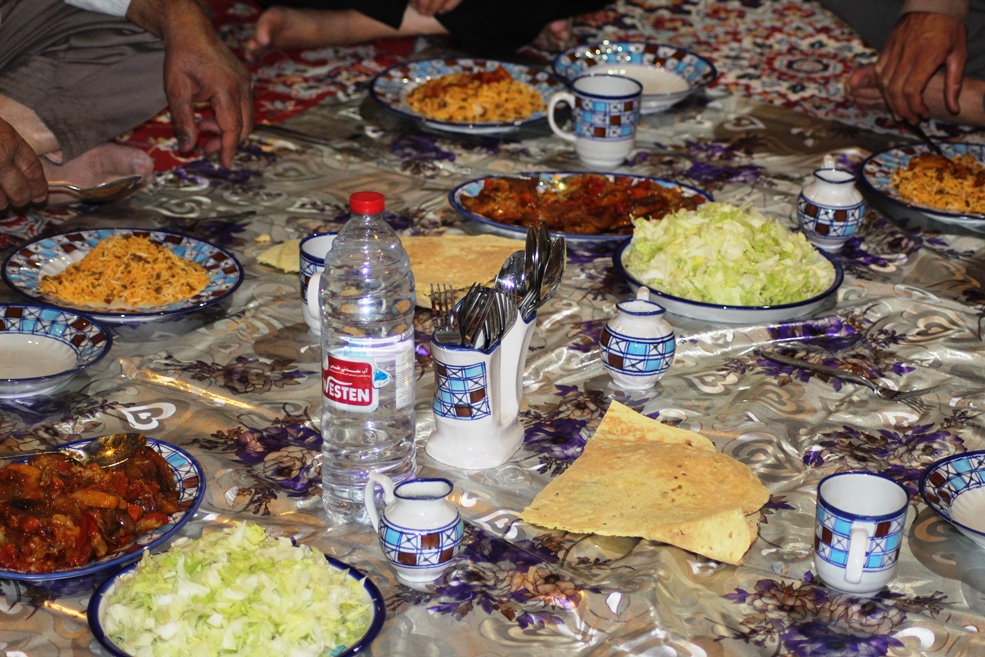
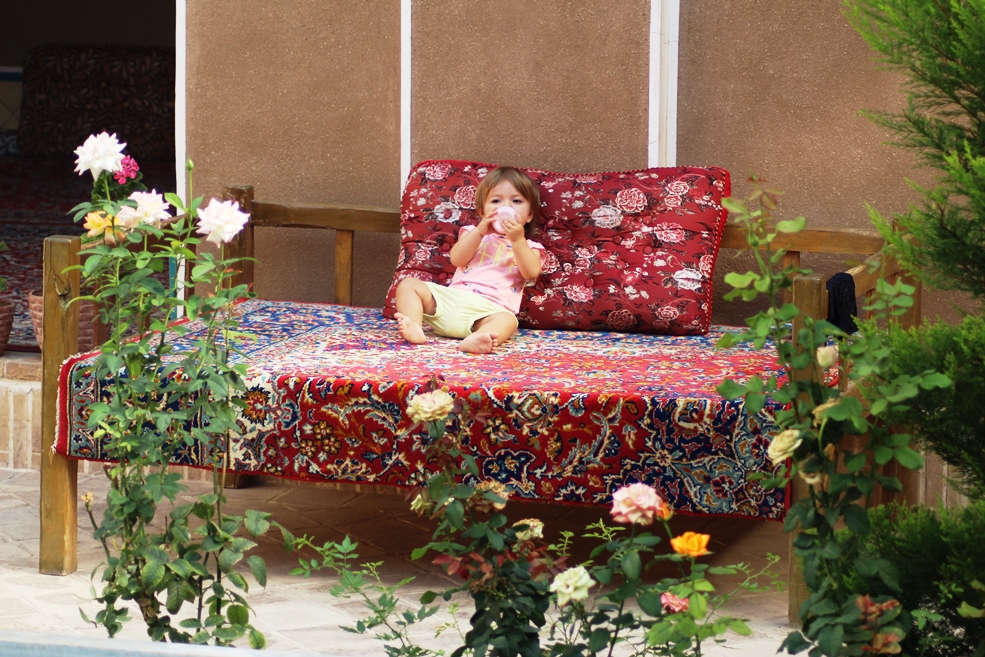
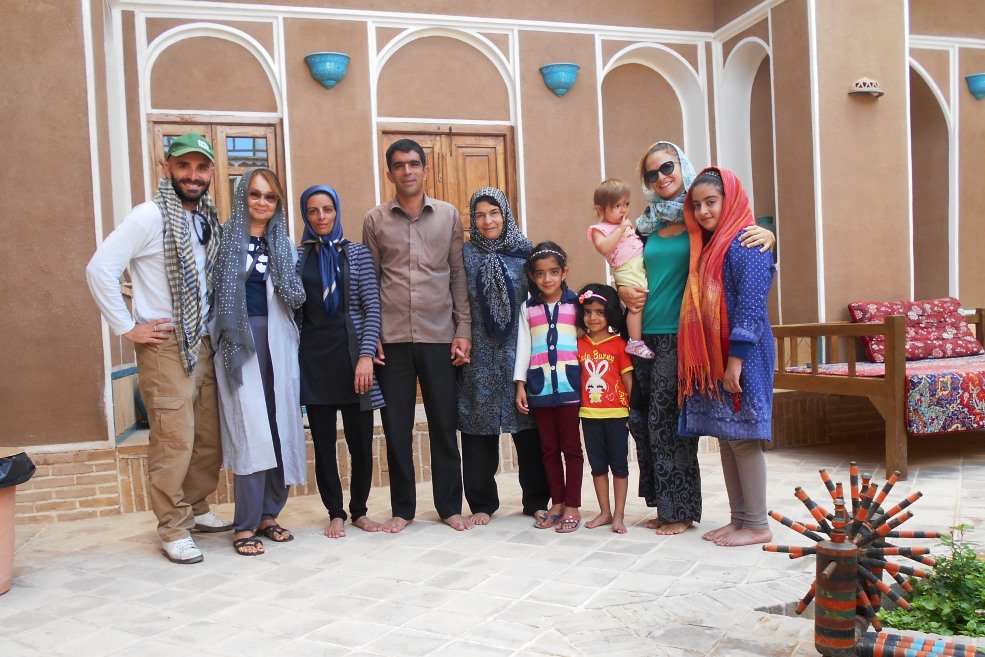
By taxi we arrive, easily, to Isfahan!
Isfahan it's amazing. It is defined: the masterpiece of theIran, the jewel of the ancient Persia, one of the most beautiful cities in the Islamic world. The refined mosaics of the blue tiles of the buildings, its vast bazaar and its romantic bridges will immediately win you over.
It is a city that can be visited on foot, getting lost in its beautiful bazaar, lazing in its beautiful gardens while sipping tea and exchanging a chat with the curious and sociable inhabitants.
Isfahan it is above all the place to savor the refinements of Persian culture, evident in Imam Square, in Ali Qapu Palace, Imam Mosque and in the surrounding areas.
The Khajoo Bridge illuminated at sunset, a plate of chicken or halil (eggplant purée, cheese and turmeric) accompanied by a tasty humus, a long walk Khajoo Avenue while the hectic city life passes before our eyes are just some of the things we have appreciated so far.
We stay at the Khajoo Hotel, a beautiful 4-star hotel opened a few months ago, certainly the best choice for those visiting this picturesque city, guests of the great Meysam.
Jolfa. Armenian quarter of Isfahan. It dates back to the times of Shah Abbas I who transferred this great Christian colony from the city of Jolfa, north Iran, in Isfahan.
The Armenian Christians were highly sought after for their skill as merchants or artists, just look at the interior walls of the cathedral of Vank to understand their skill and art.
In Mosque of Jameh we meet Alì, a young imam, is sitting behind a small table with a sign "free talk about islam". It is always very interesting to deal with people so different from us and we take the opportunity to have a chat with him.
Alì he is a student of the Koran, he wears a brown tunic and a black turban (he indicates that he is a distant descendant of Mohammed).
He is a religious and, as such, a point of reference for people who can consult him for any moral problem ...
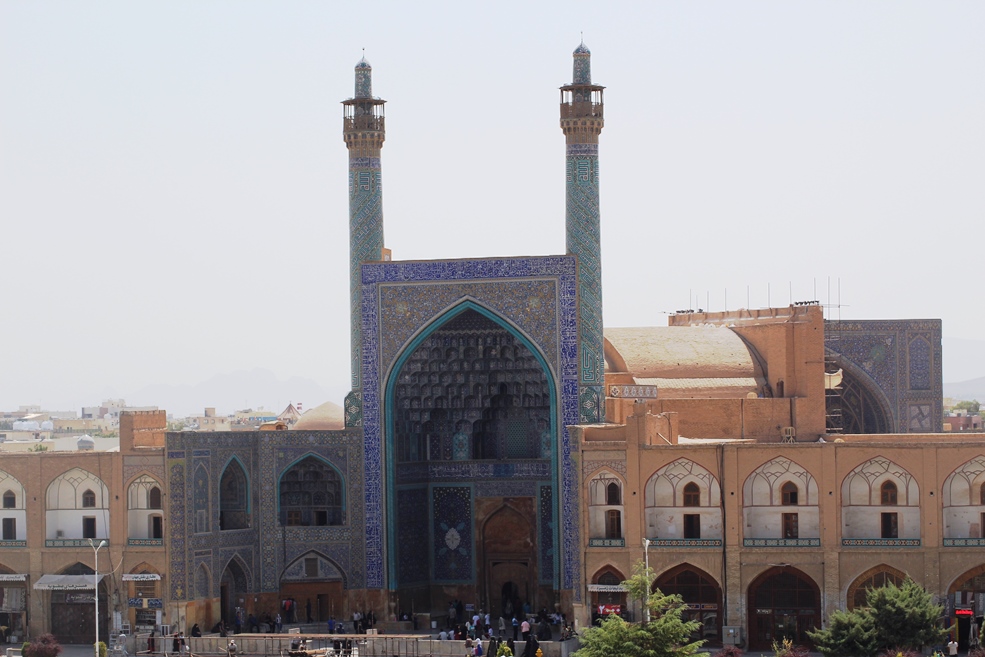
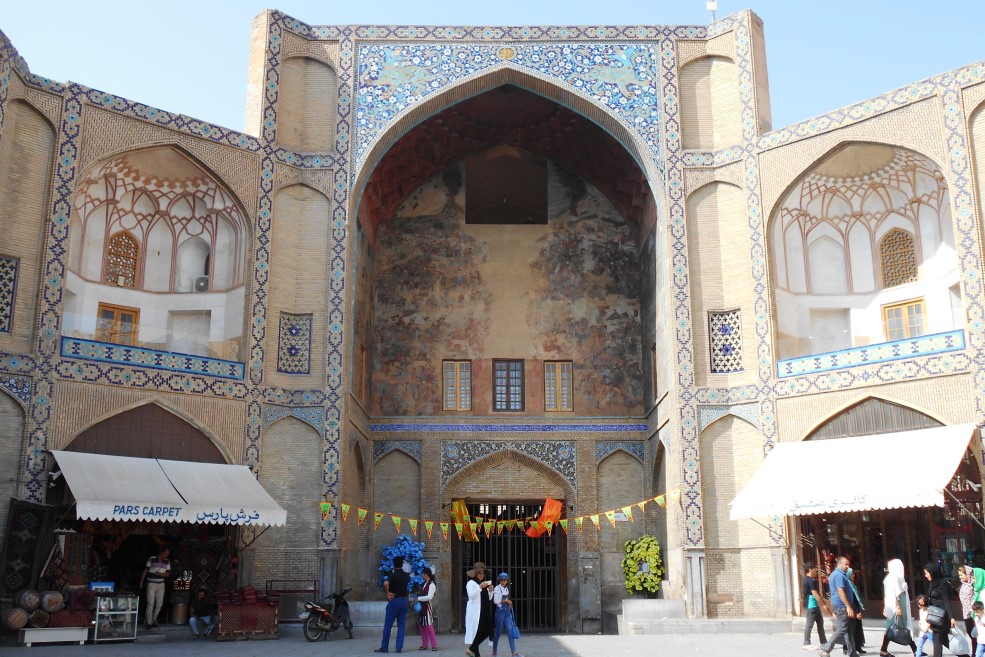
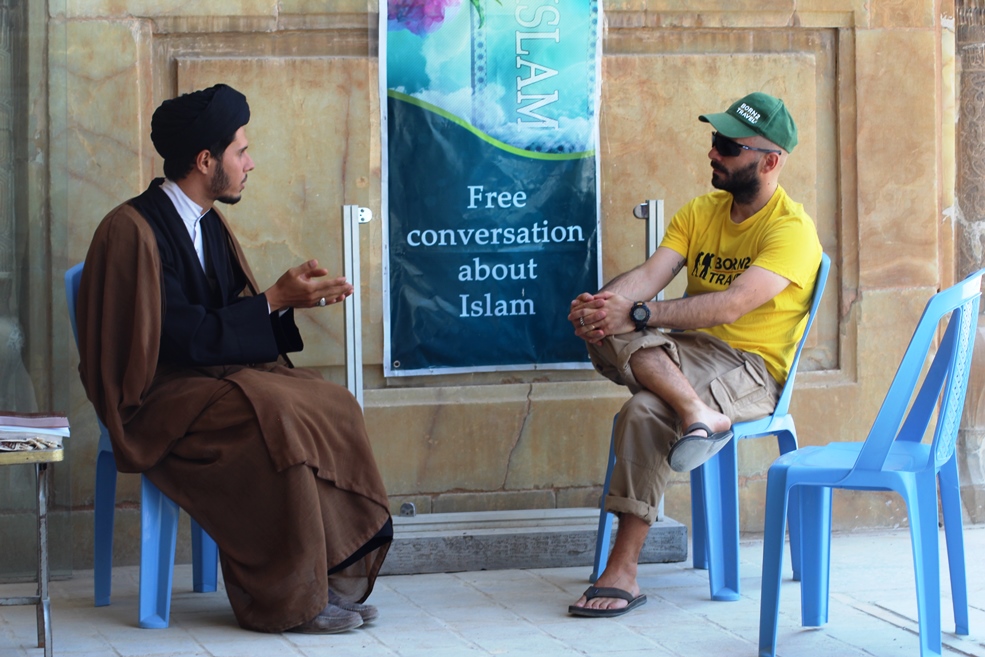
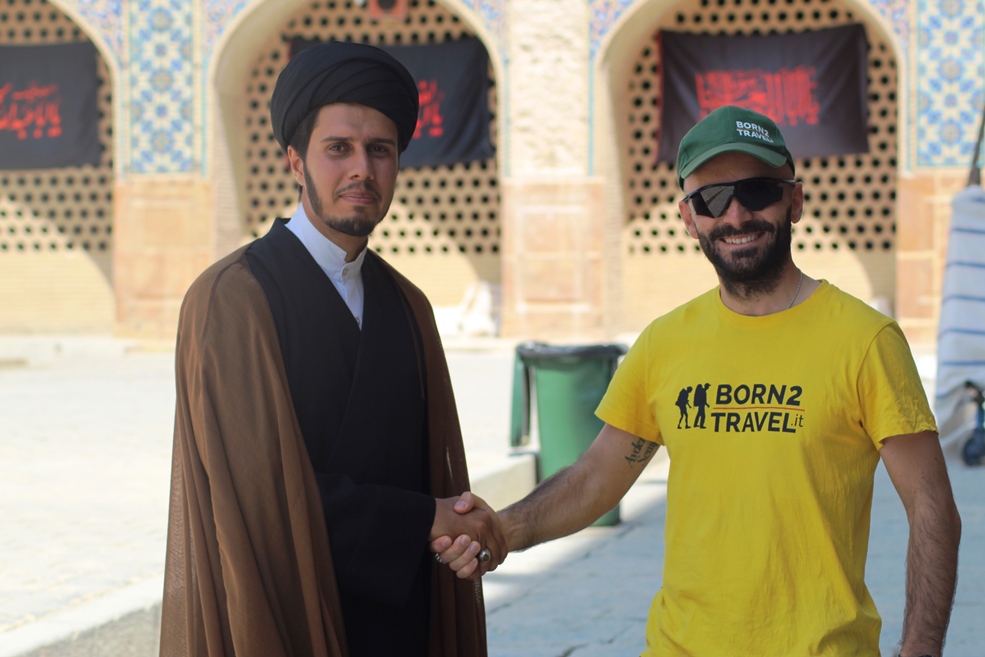
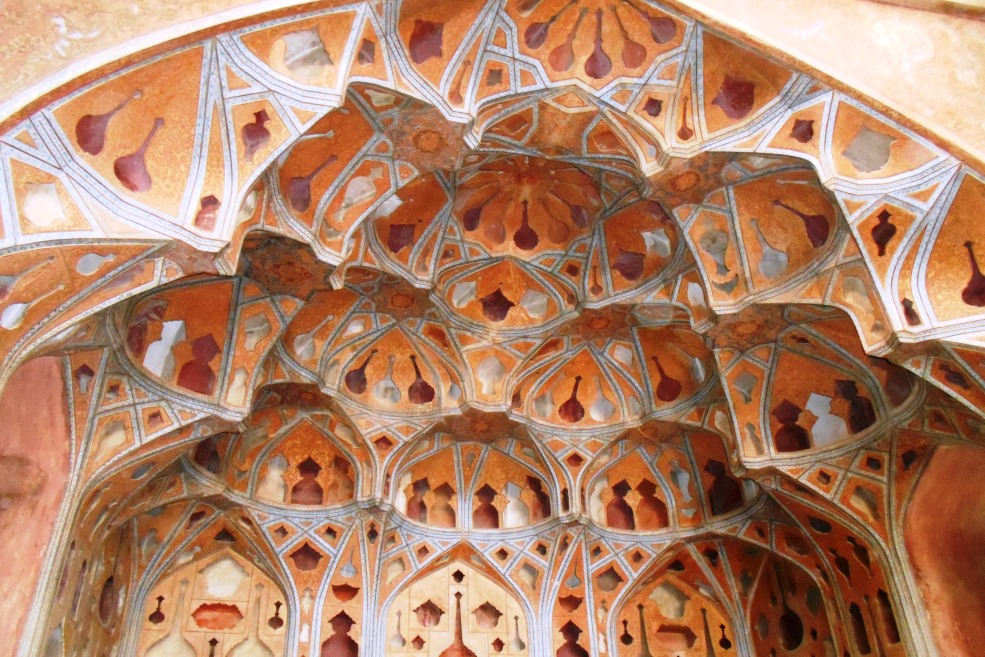

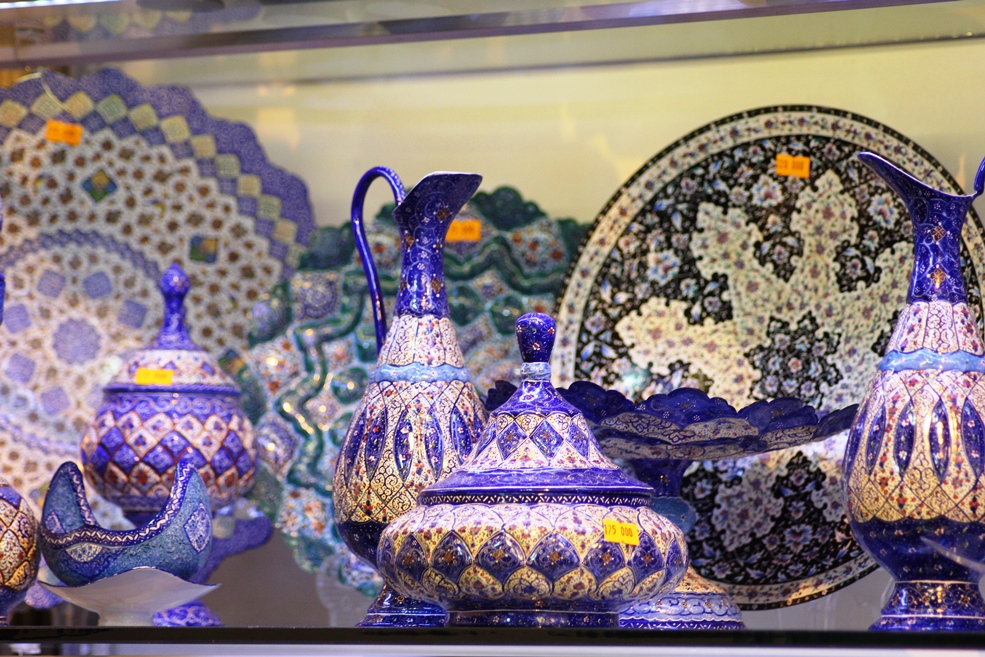
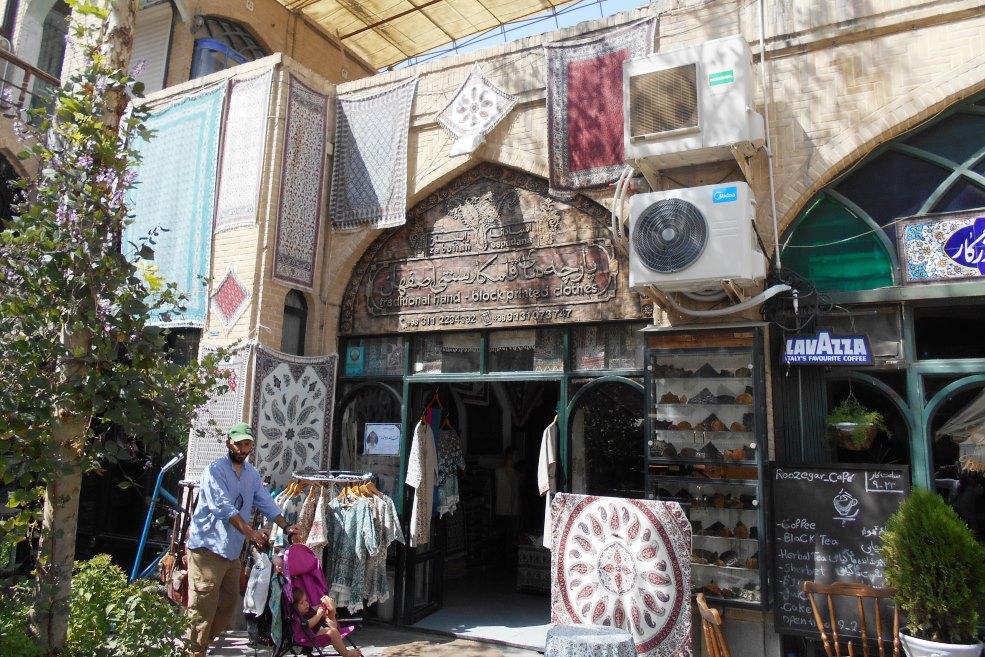
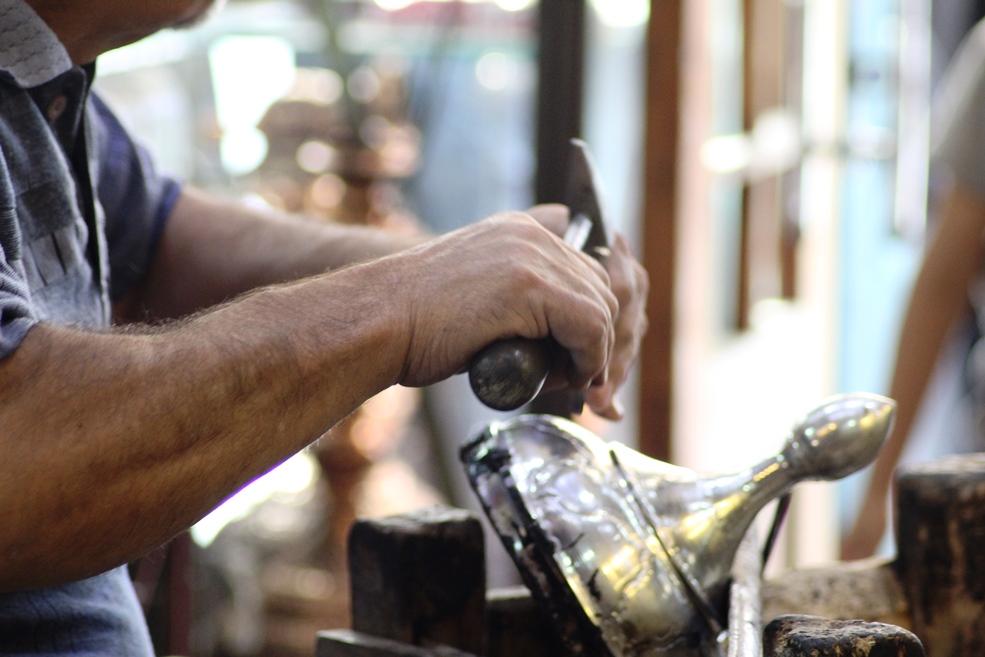
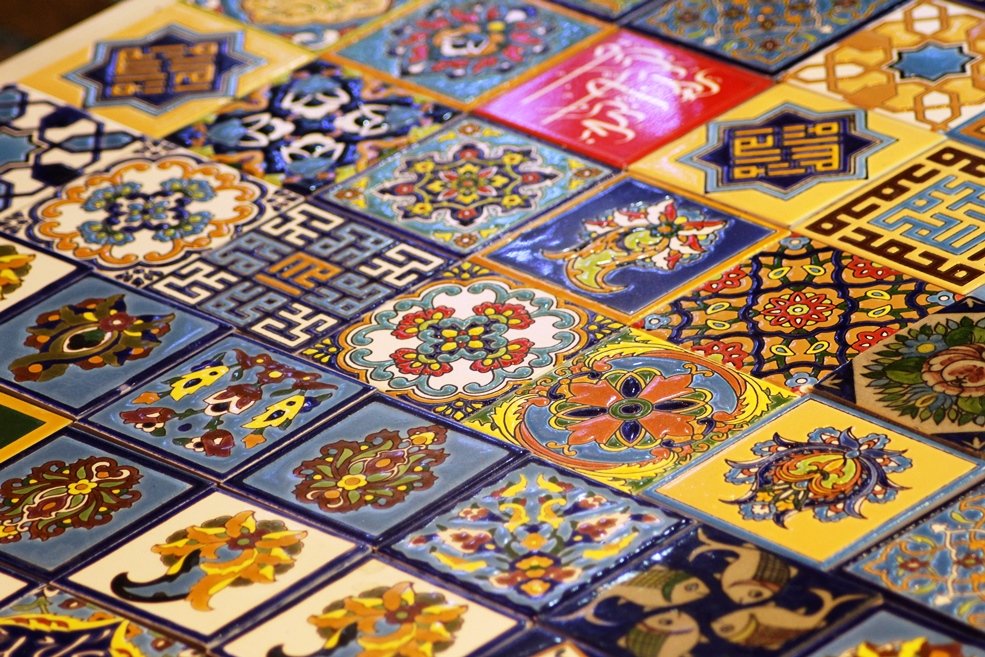
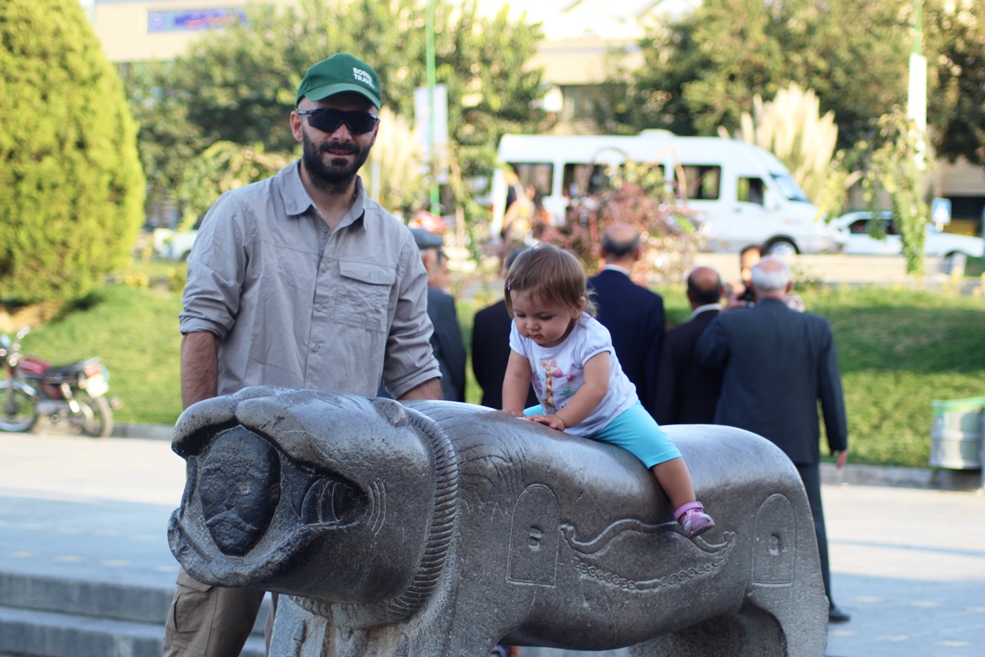
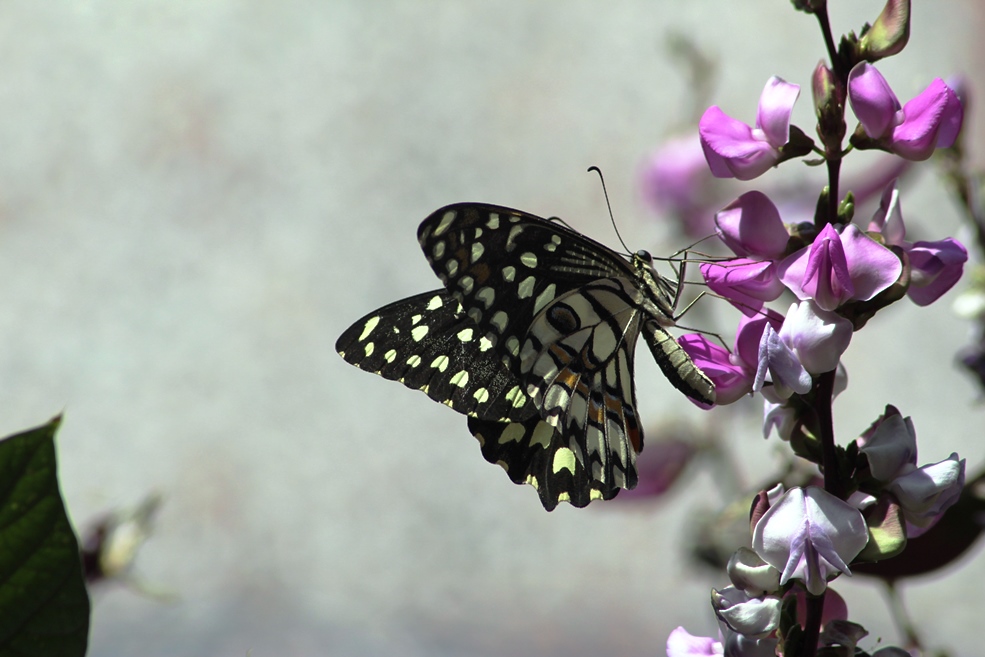
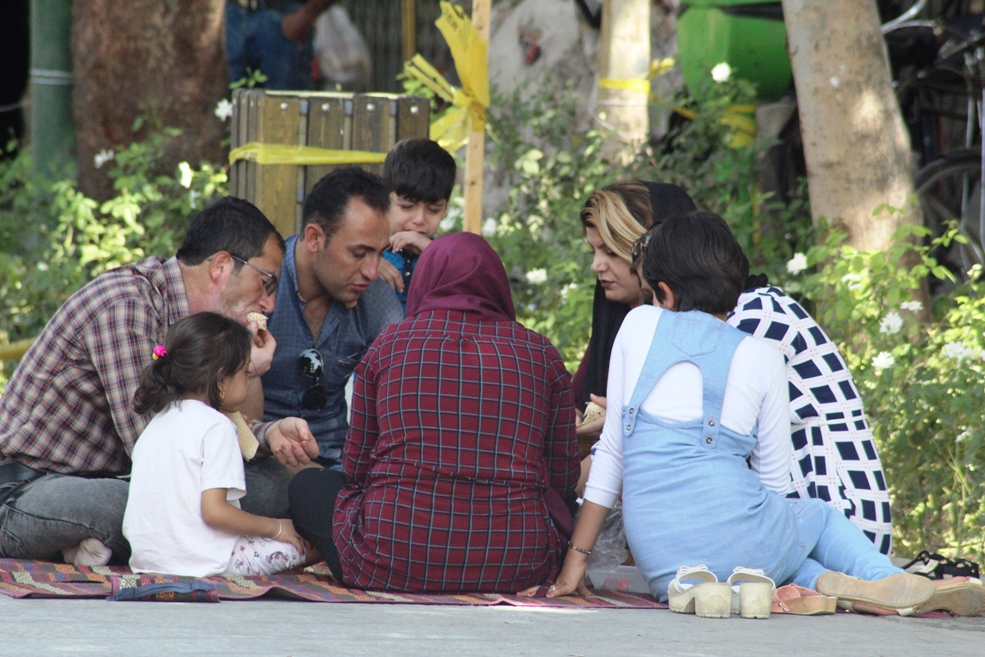
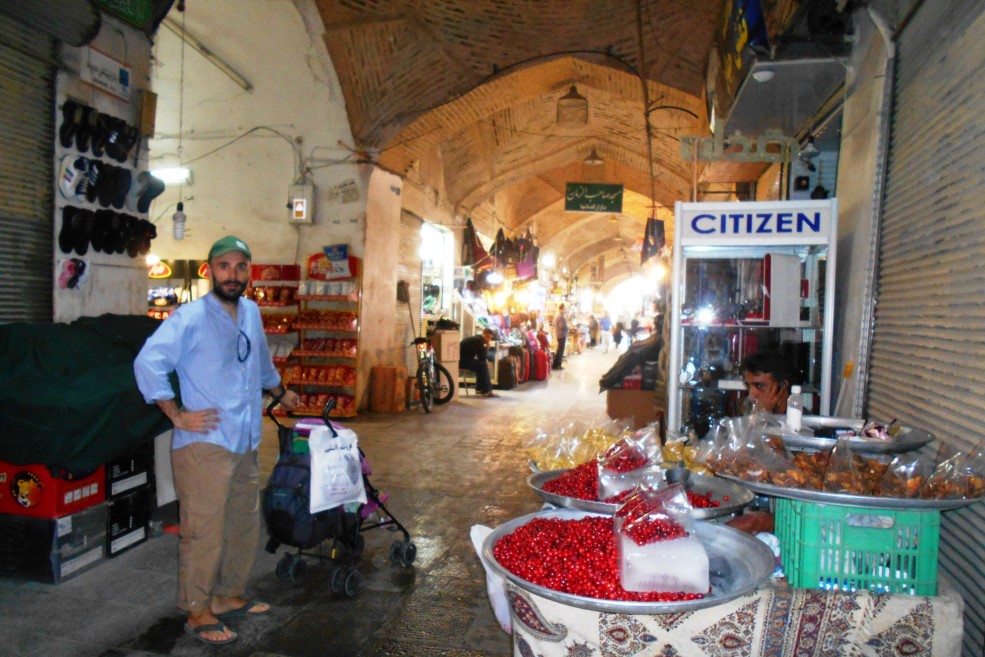
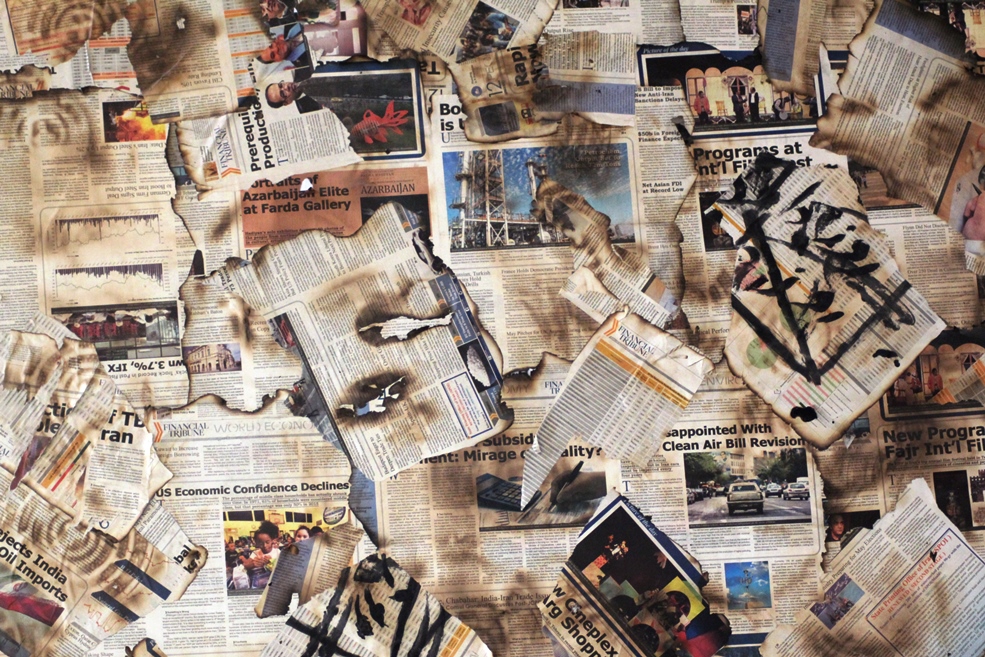

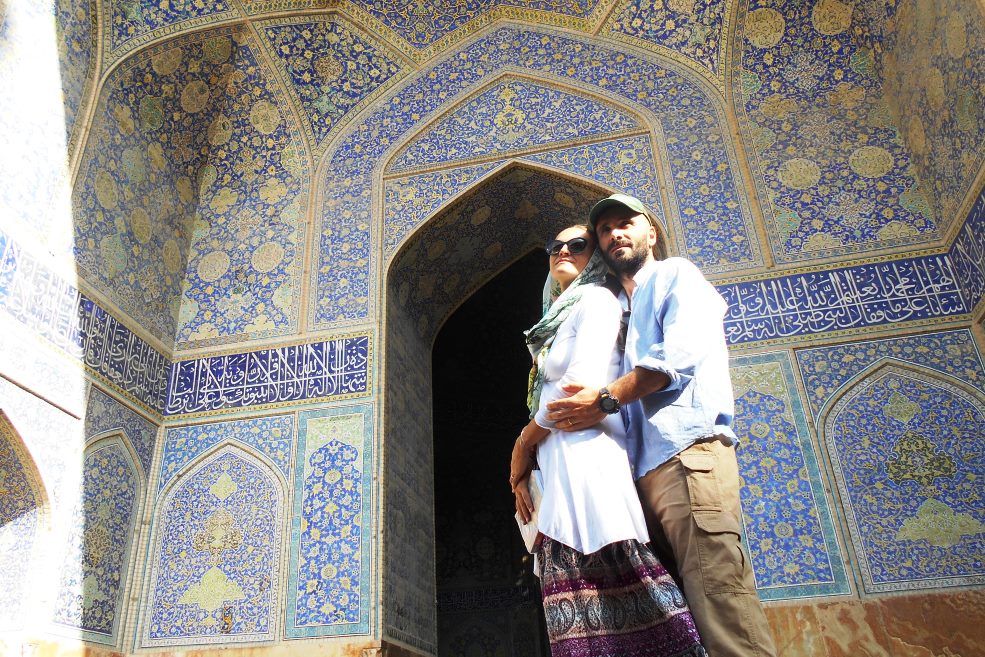
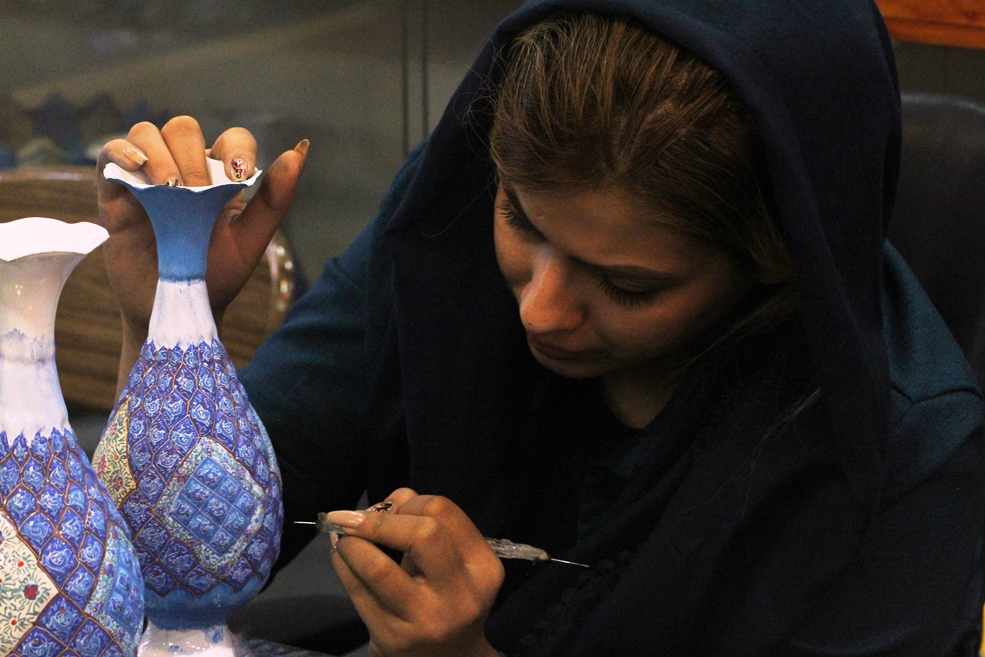
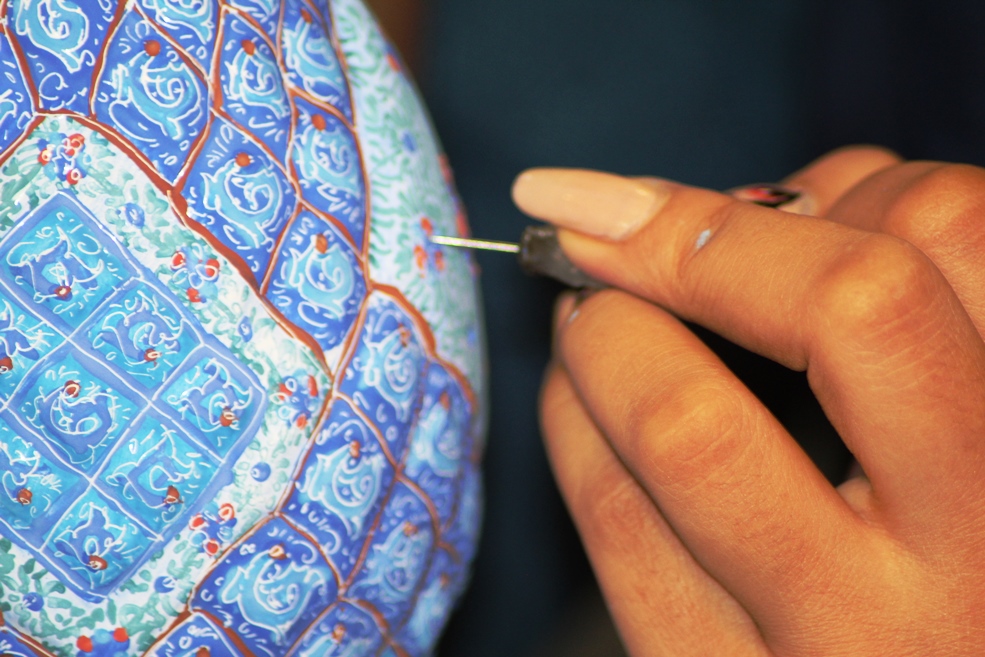
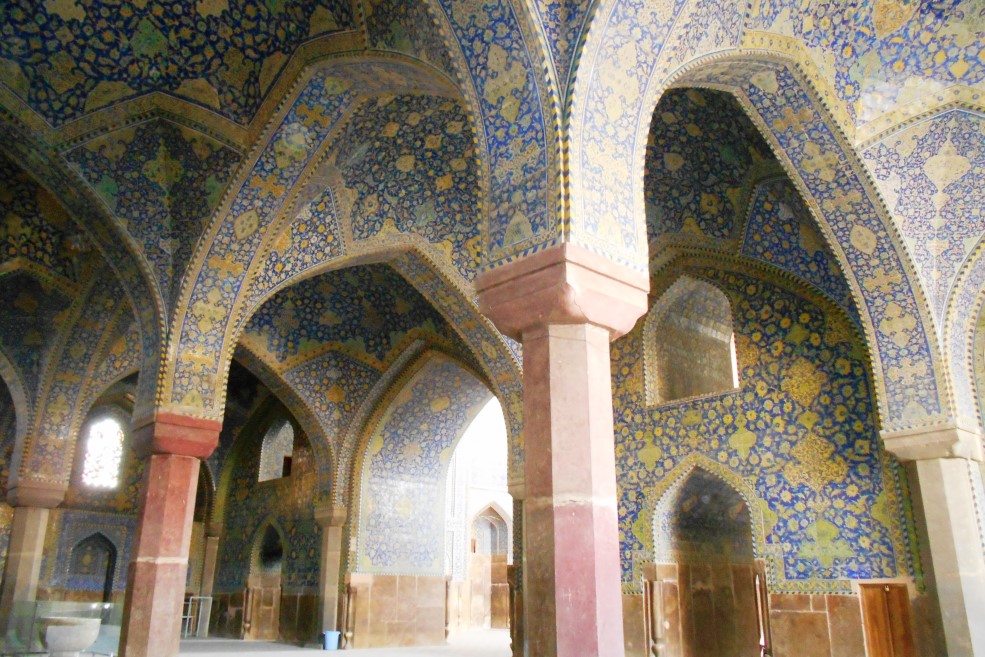
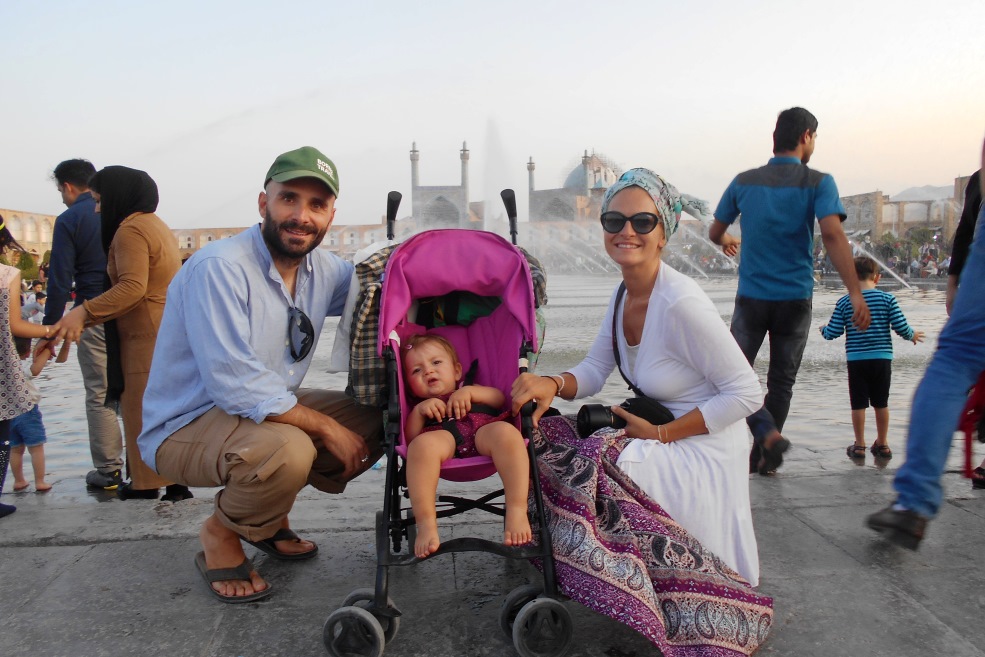
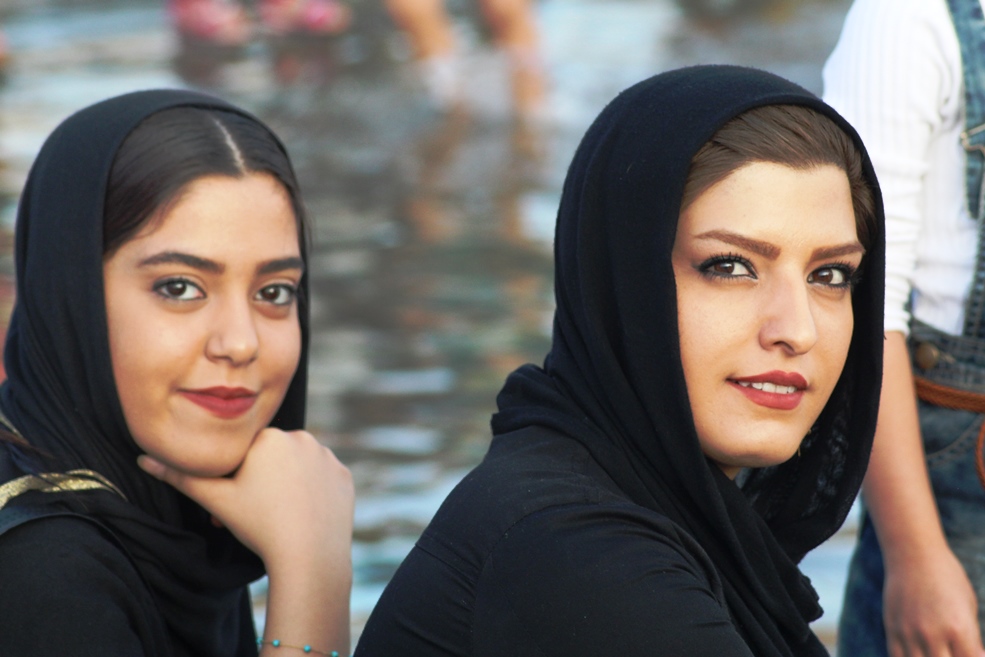
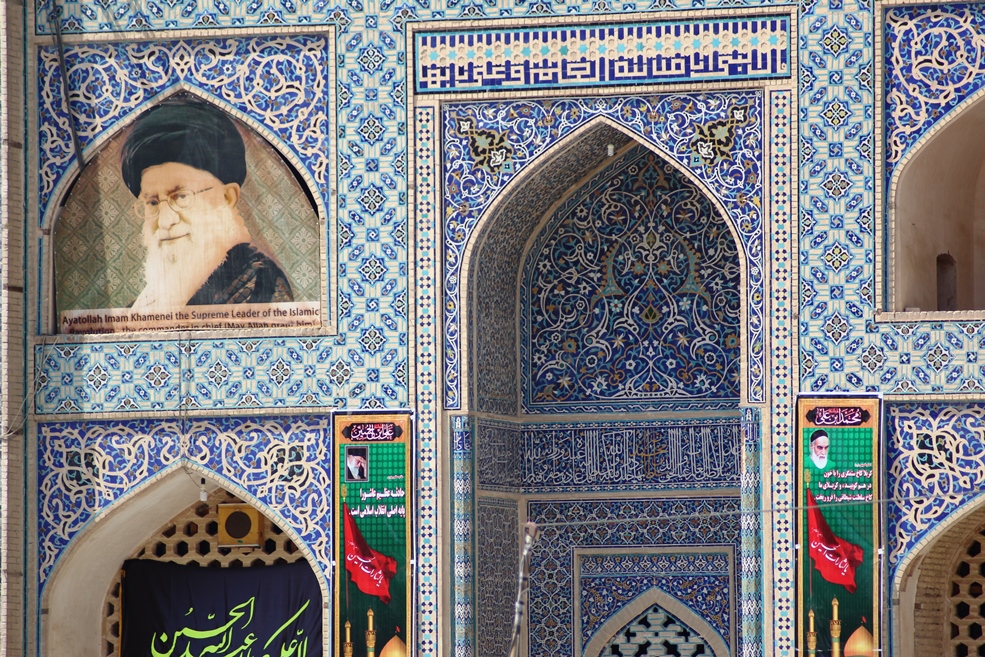
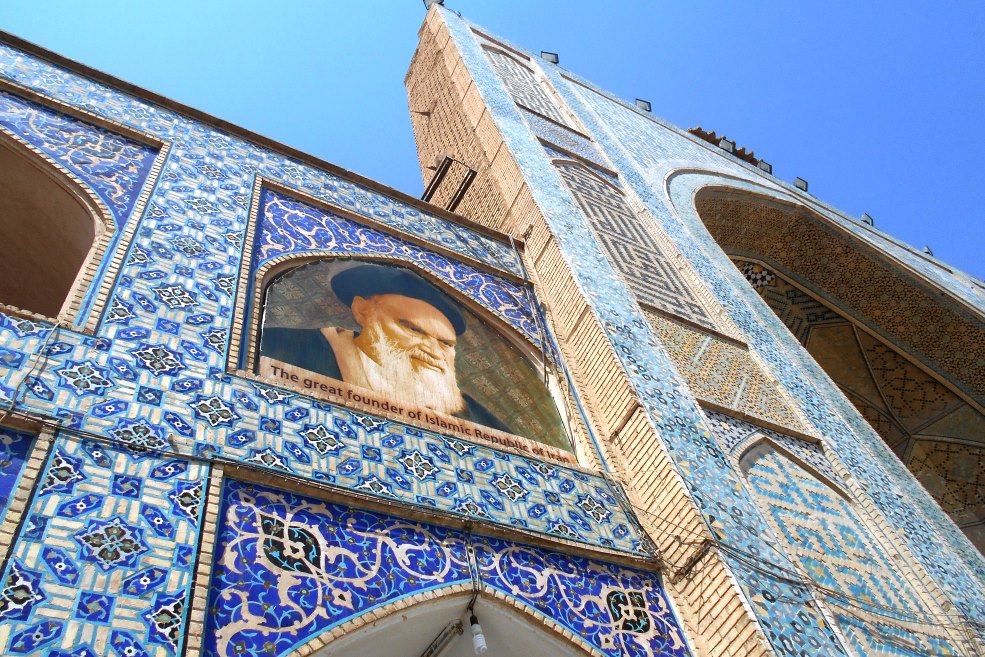
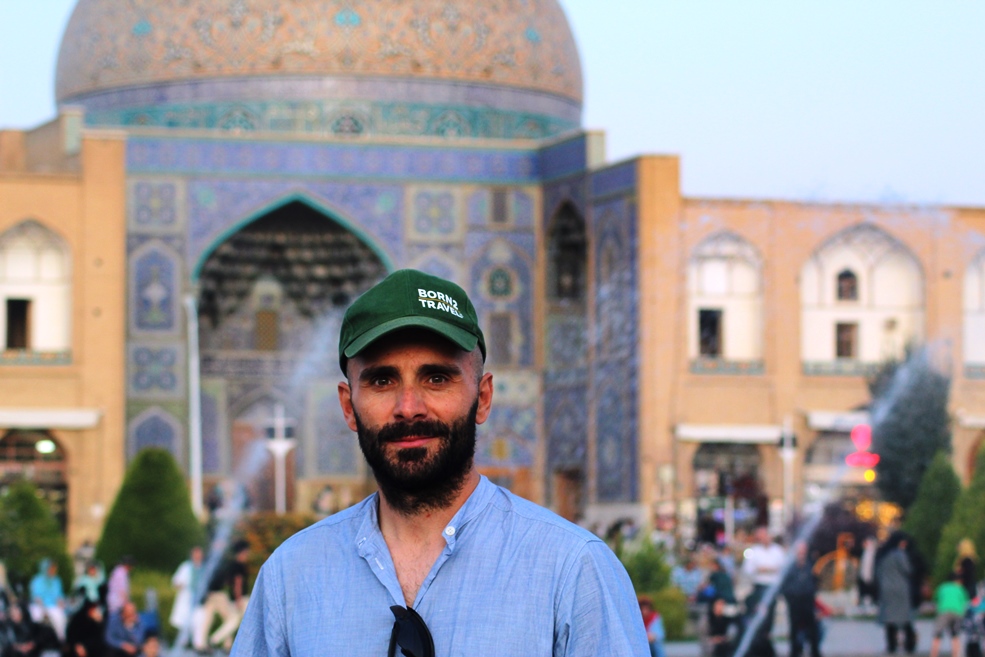
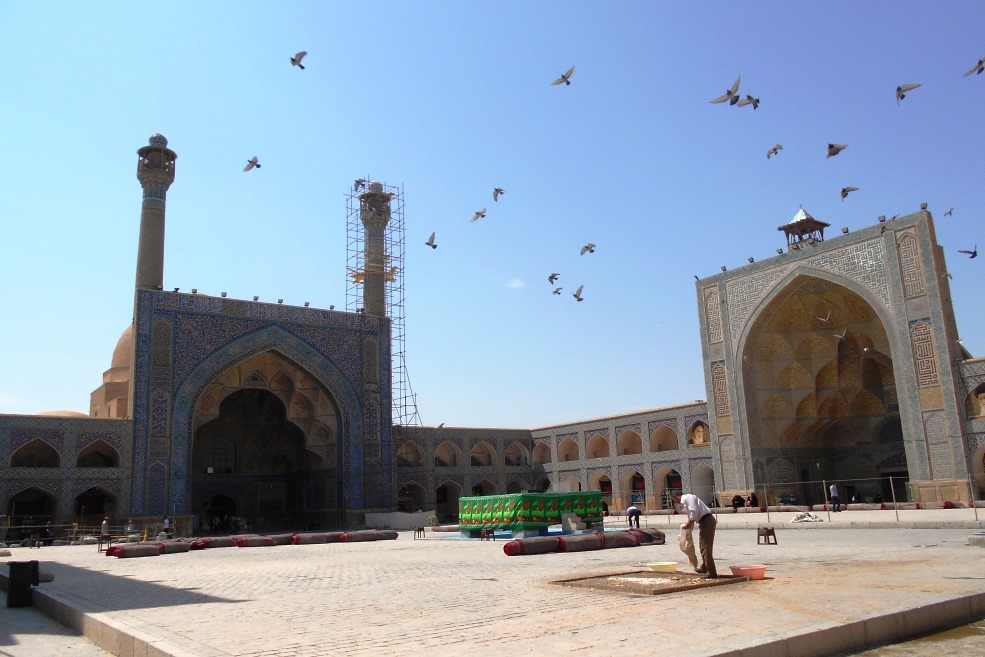

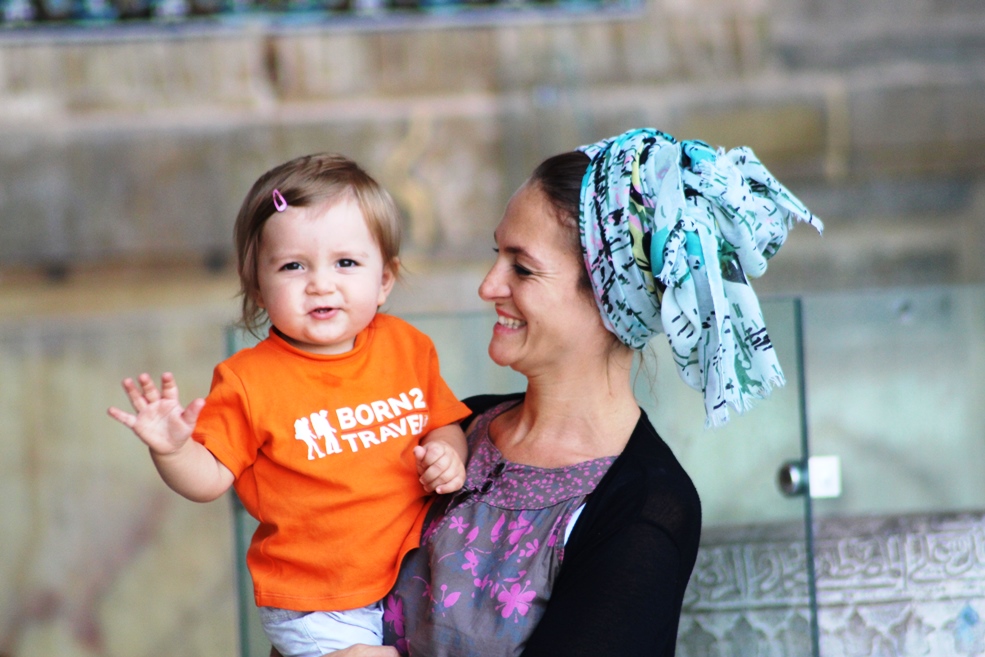
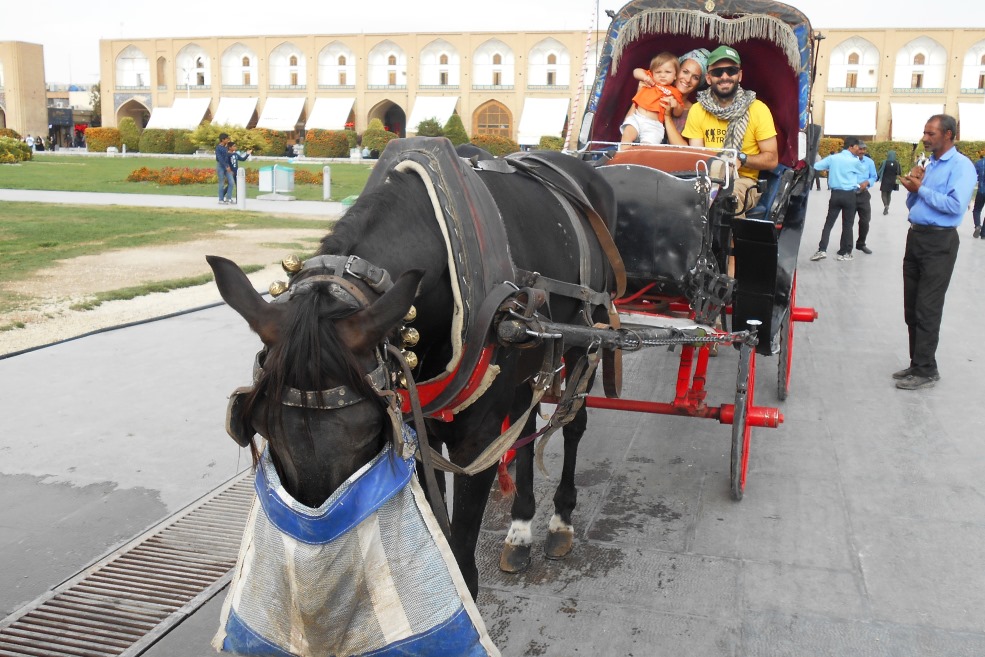

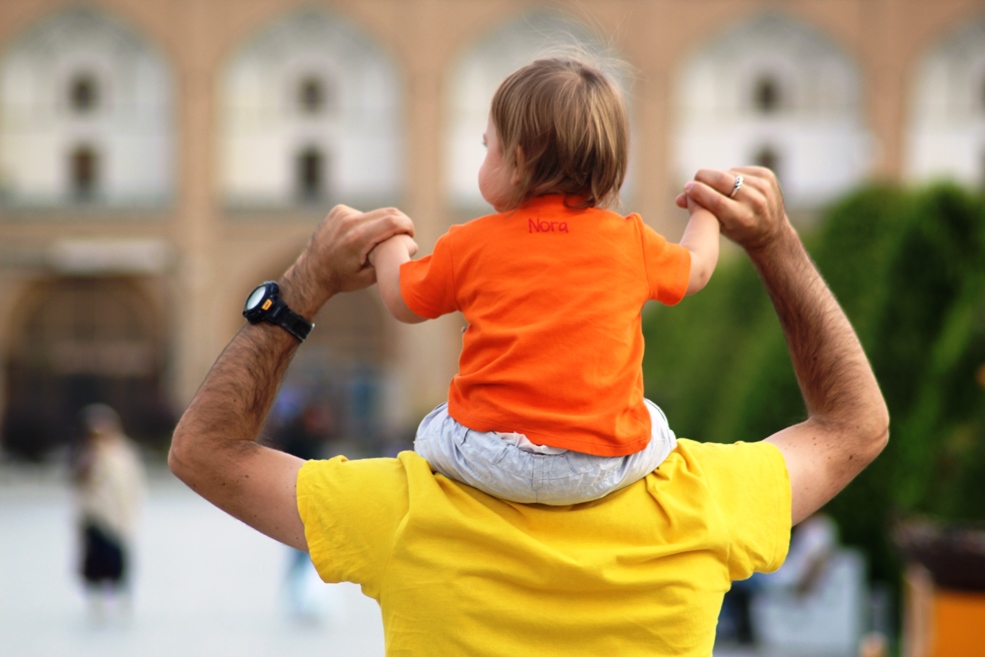
Bazaar of Bozorg. I am struck by the colorful, short, glittery women's dresses, the flamboyant underwear, the high-heeled shoes ... then you look around and see all the women covered in black ...
You wonder how their life can be at home, with their family, during their parties ... they are such beautiful women and, under those veils, they really hide a world. Attentive to makeup, nail art, body care
Abyaneh, small picturesque village and UNESCO World Heritage Site. Its steep and winding alleys, made of mud and stones, wind through the ocher-colored houses with the grates on the windows and small and fragile wooden balconies.
Lying at the foot of the mountain Karkas, Abyaneh it faces east to receive maximum hours of sunshine; winter must be very cold here ... the houses were built side by side to defend themselves from frequent raids by marauders ...
It is a city of 2500 years with very few inhabitants at about 2000 meters of altitude. Women wear flowered chadors and men wear very large black trousers, even maintaining their archaic dialect.
Entering this small village was like taking a step back in time.
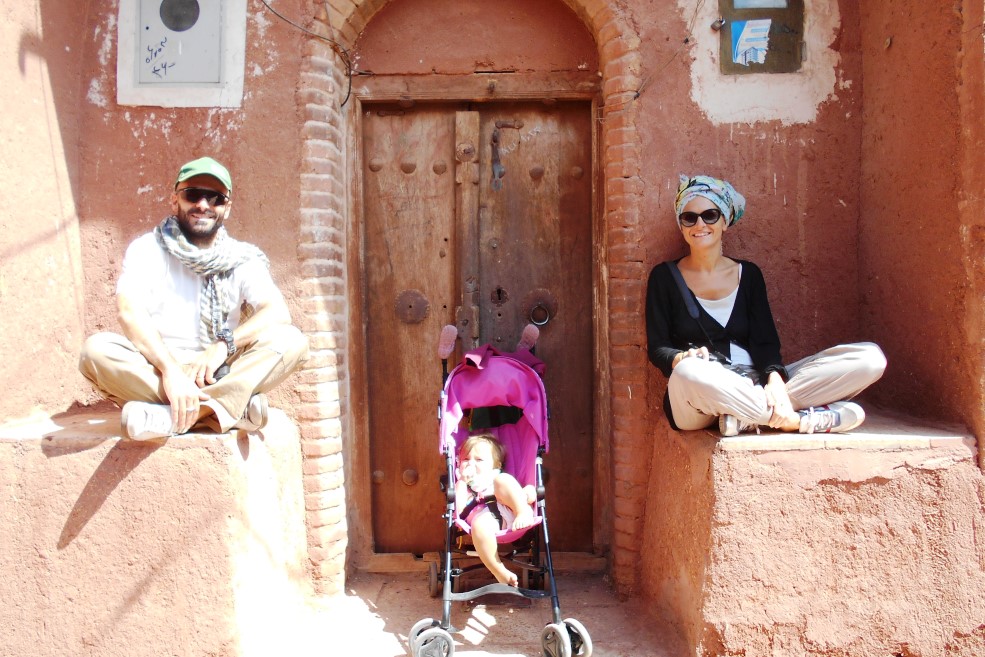
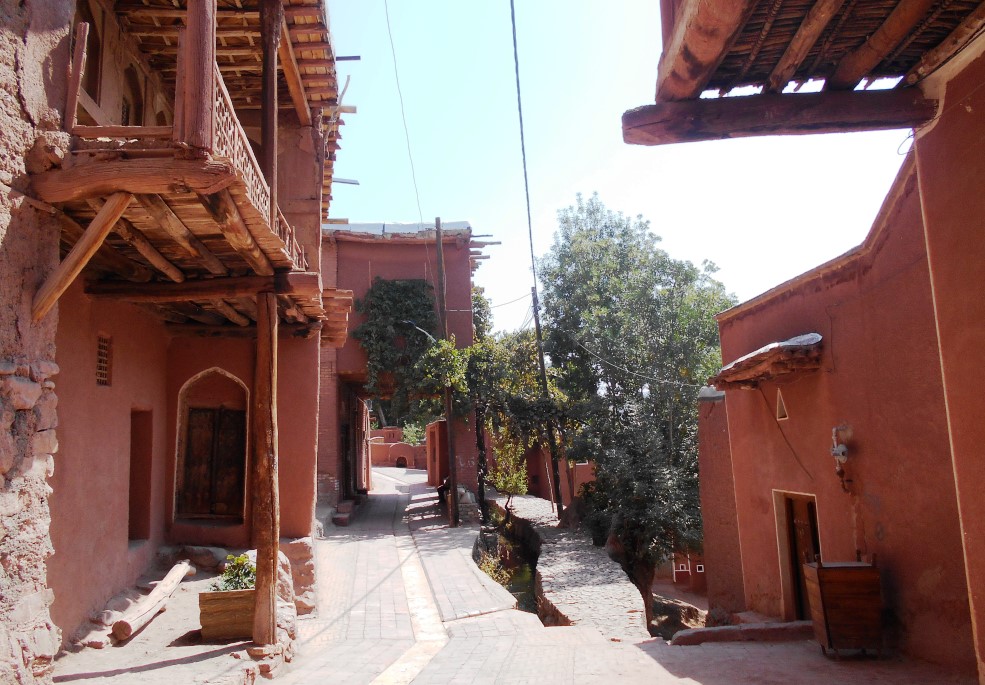
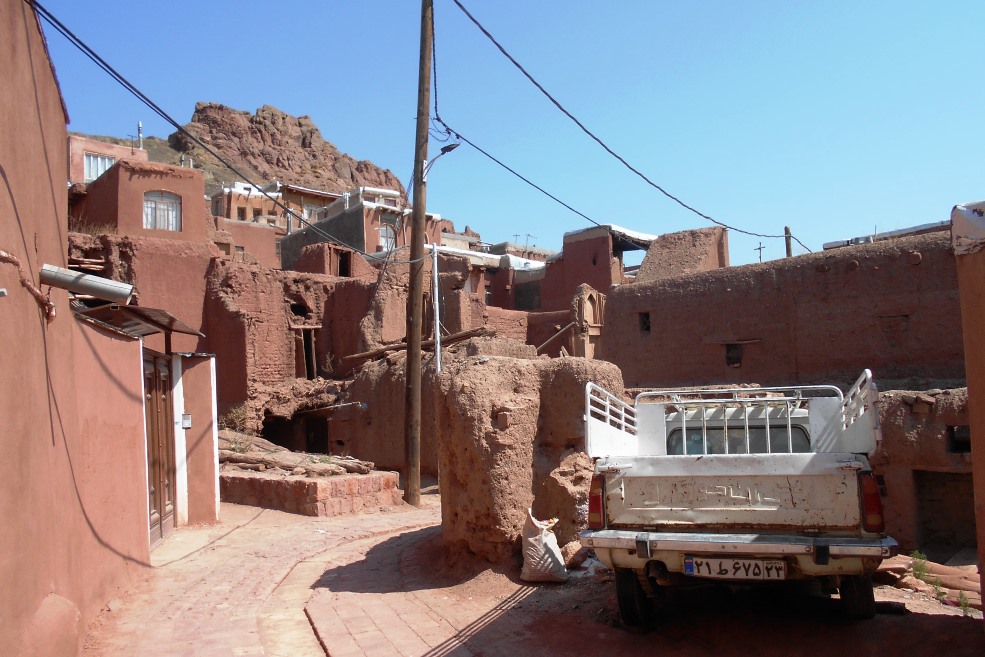
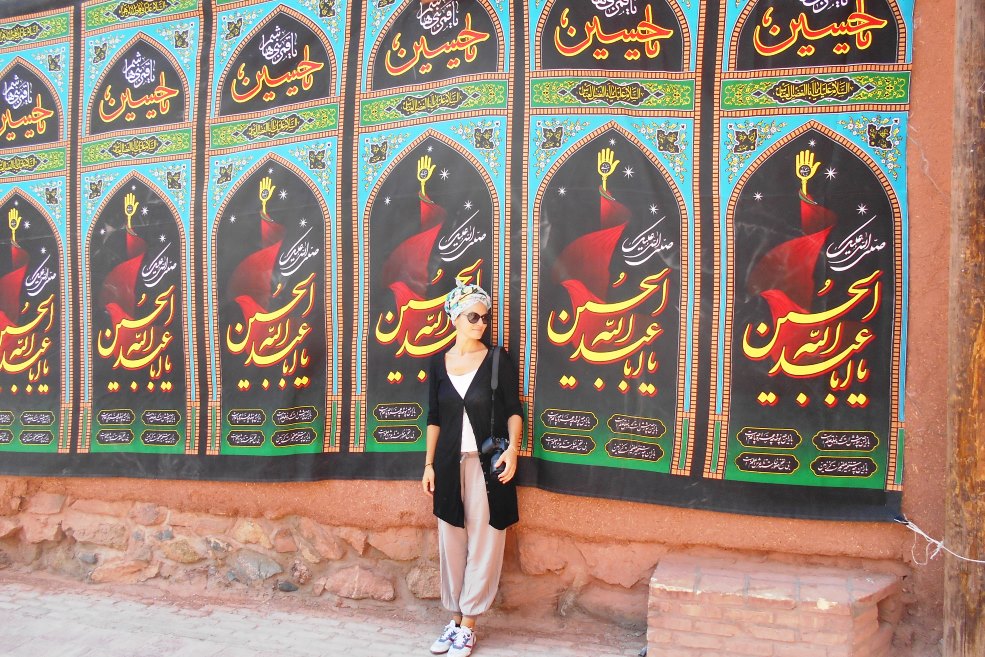
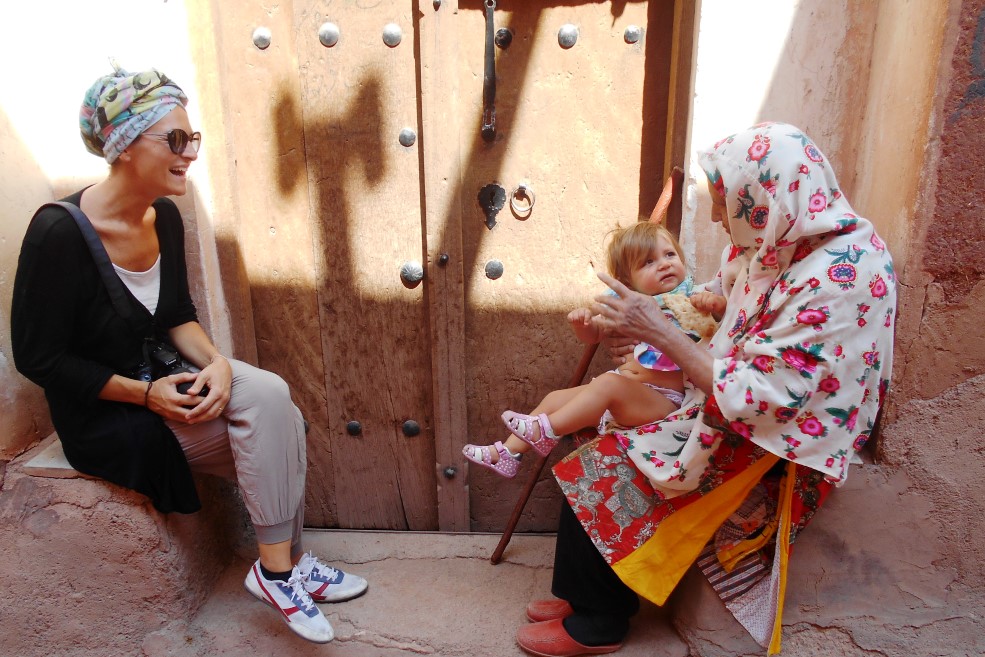

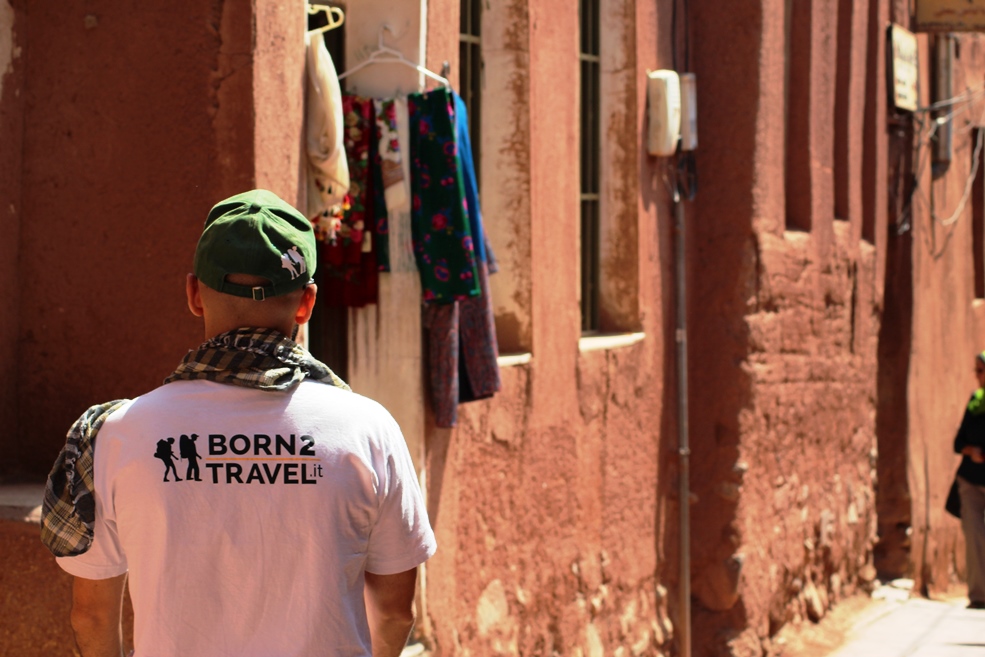

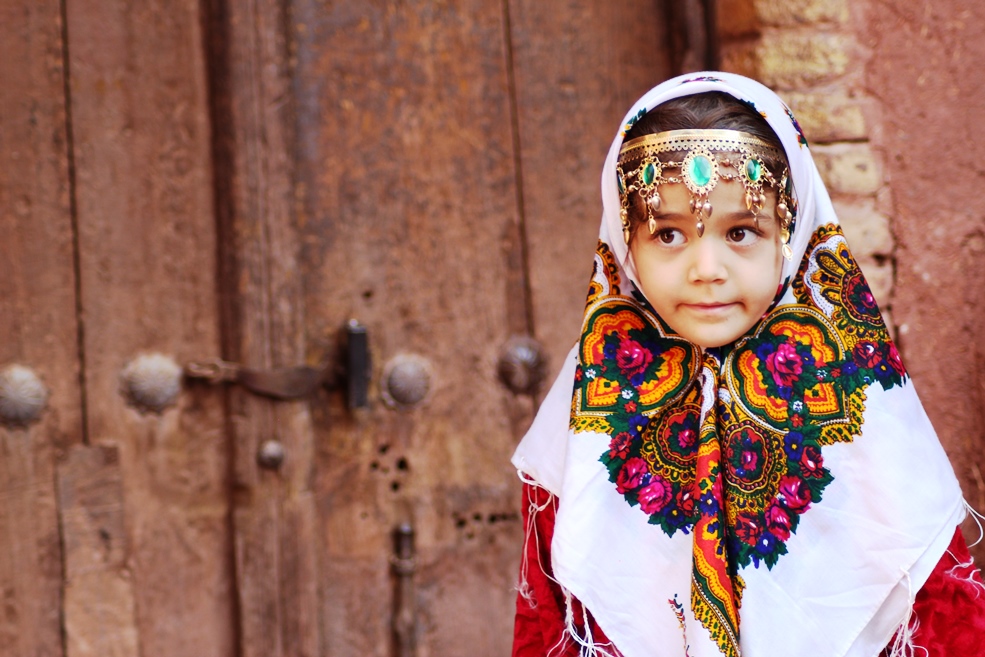
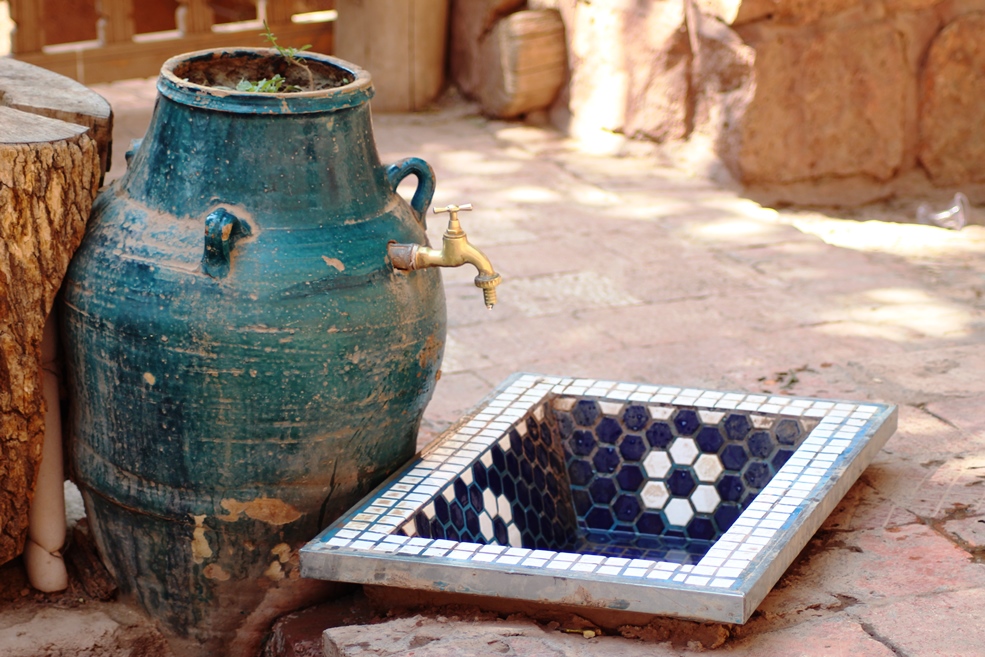

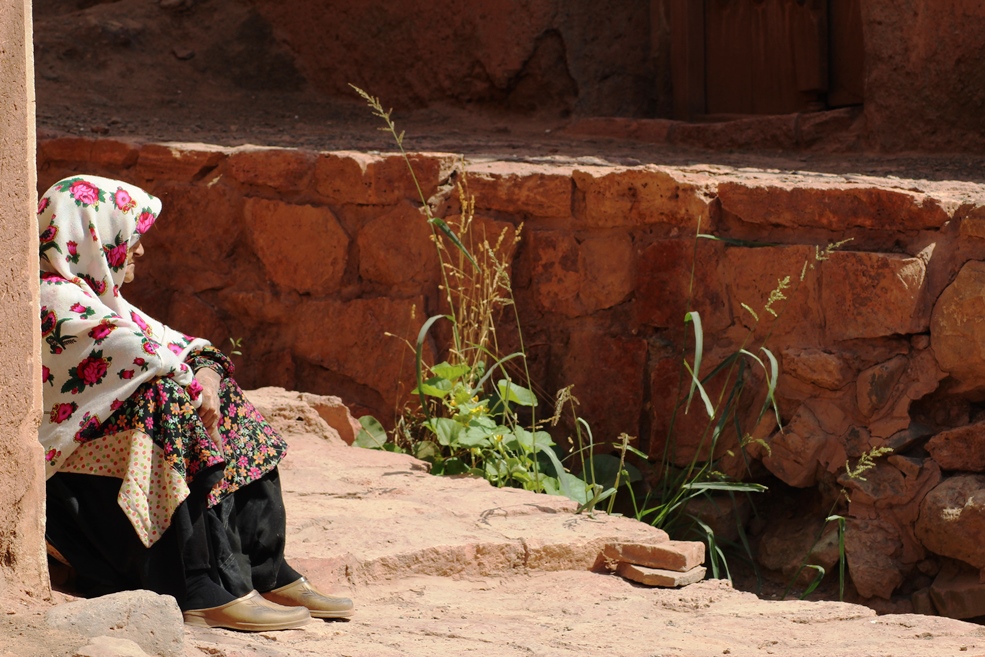
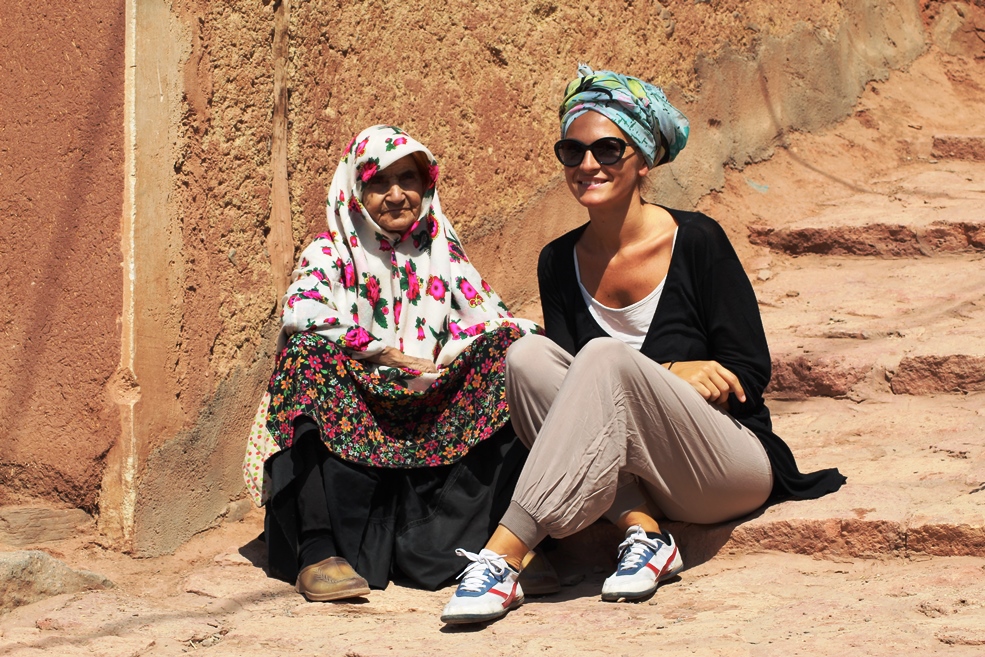
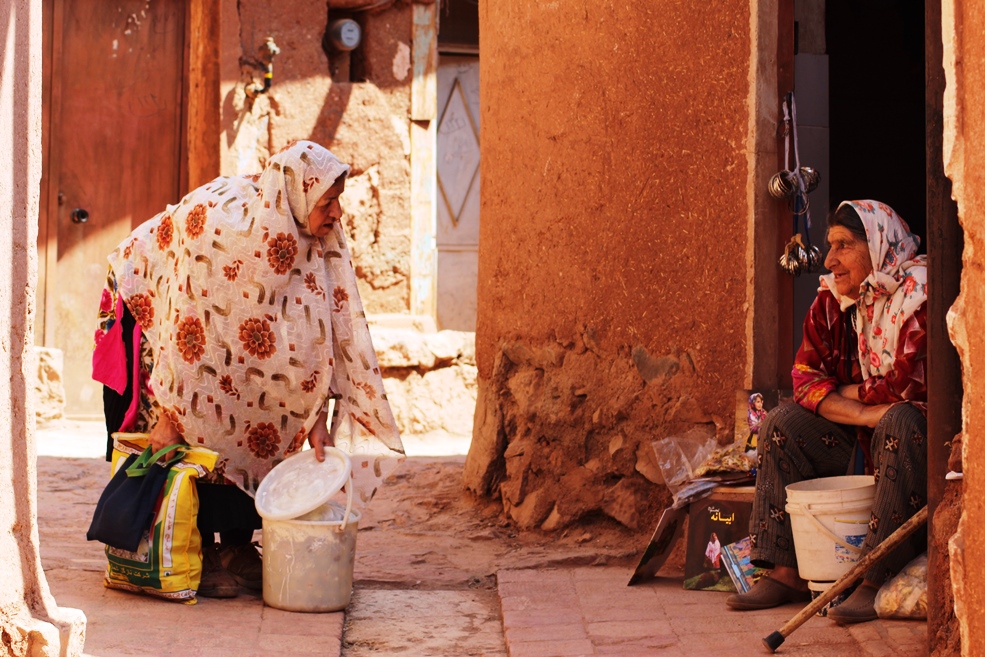
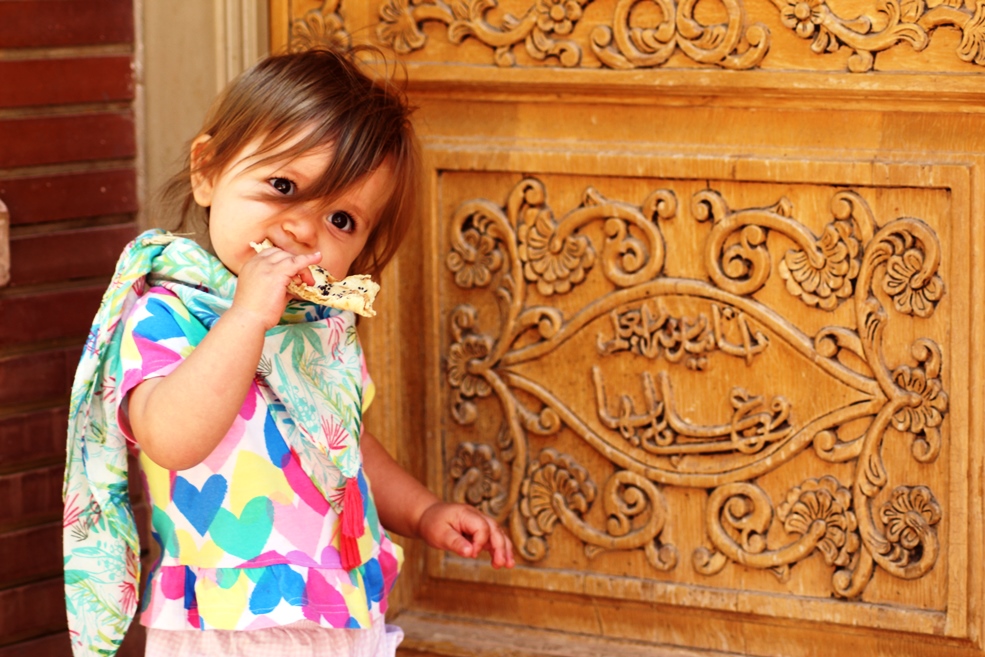
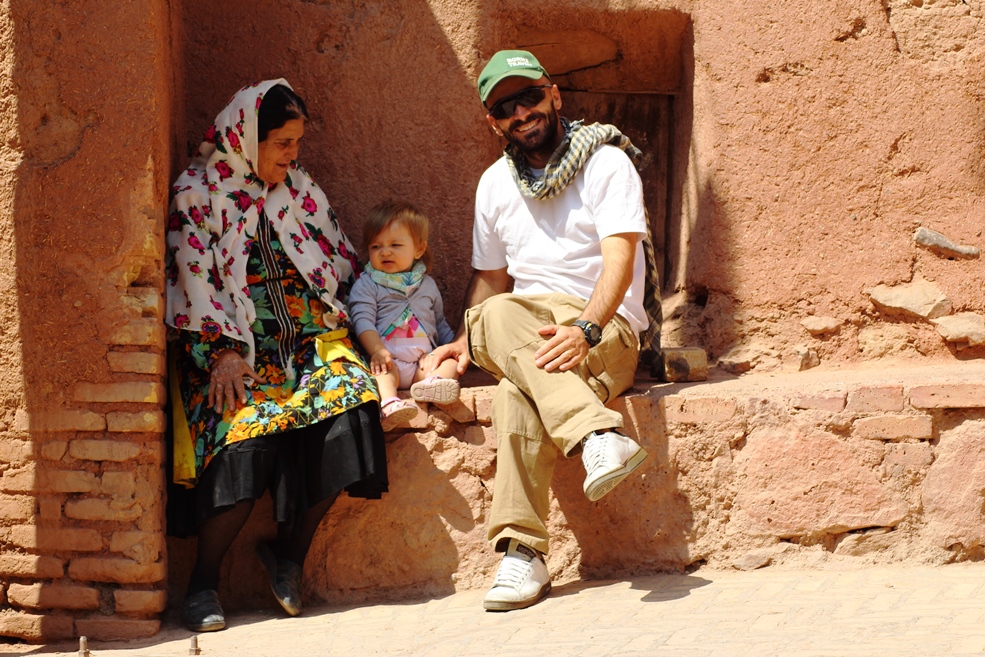
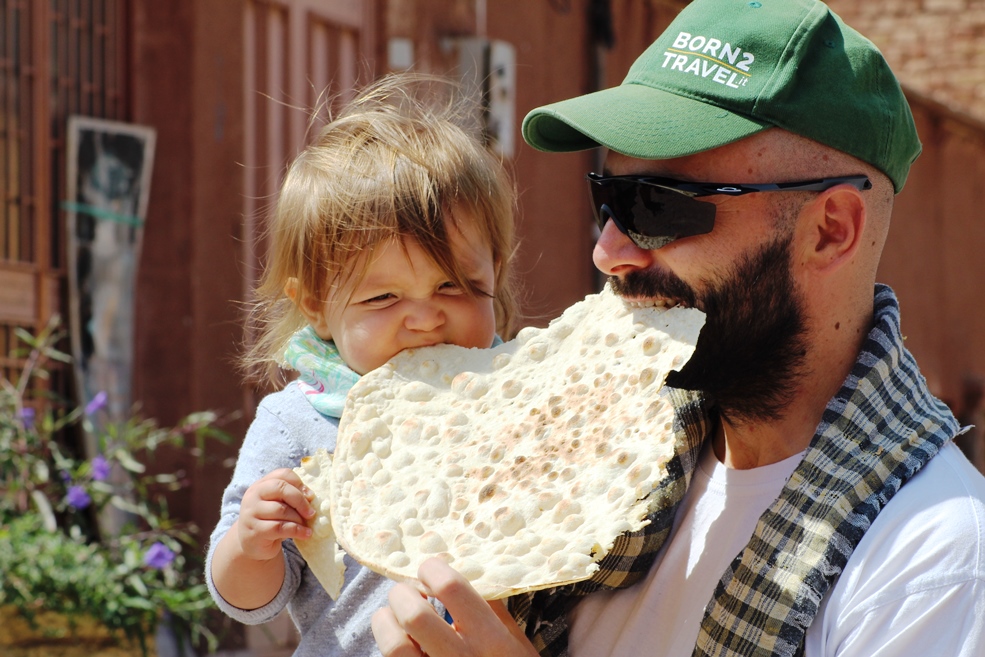
It is difficult to describe the beauty of ancient traditional Iranian houses.
We visit Khan-e-Abbasin. A complex of six buildings on different levels, the stuccos on the walls are exceptional, the windows, the mirrors: light for the eyes ...
Khan-e-Tabatabei. Built in 1834 by a wealthy carpet merchant, it is characterized by intricate reliefs carved into the stone, stained glass windows, stuccoes and the hall of mirrors will drive every camera crazy!
We enjoy a beautiful view of the city from the roof of the Sultan's hammam Mir Ahmed. The interior is all tiled in shades of yellow and blue ... I wonder how it must have been in the times of the sultan! Really a place for a thousand and one nights!
Kashan is the richest city in theIran in terms of architecture, everywhere you turn there are caravanserais with breathtaking ceilings, rich traditional houses finely decorated and very elegant.
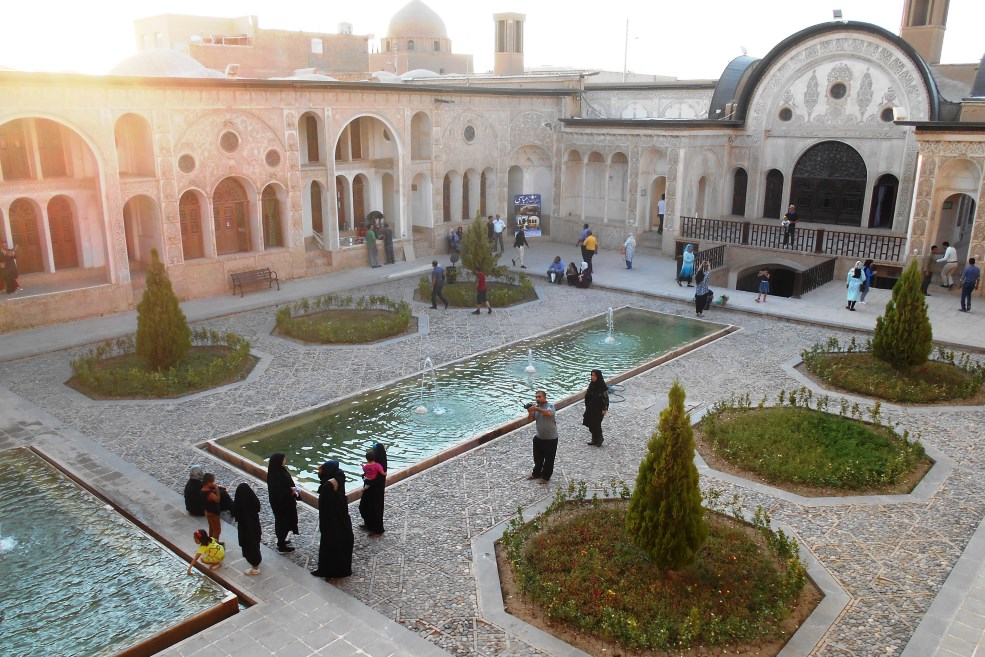
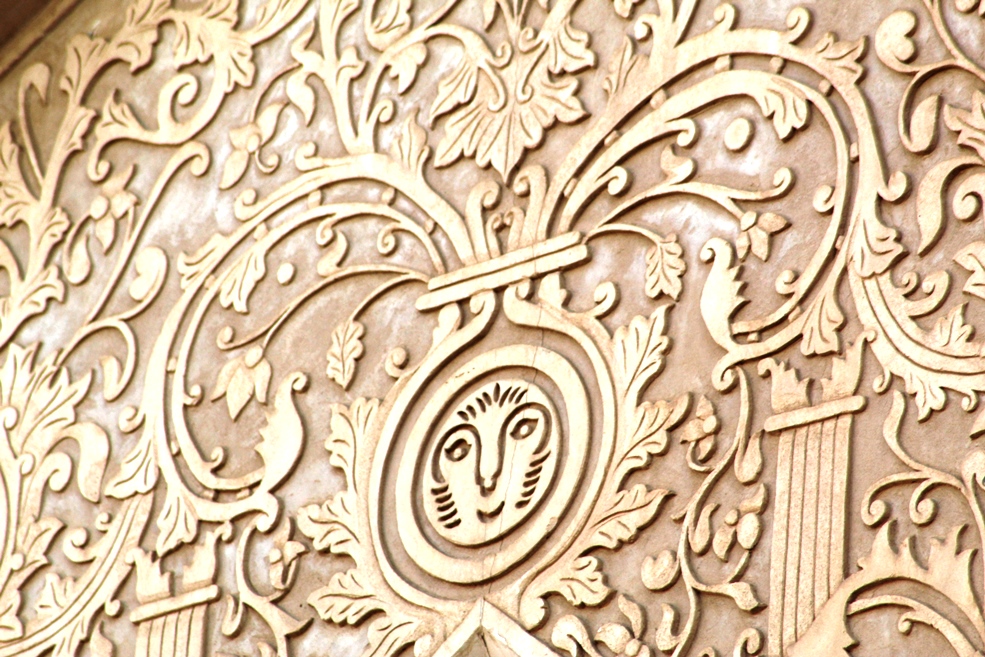
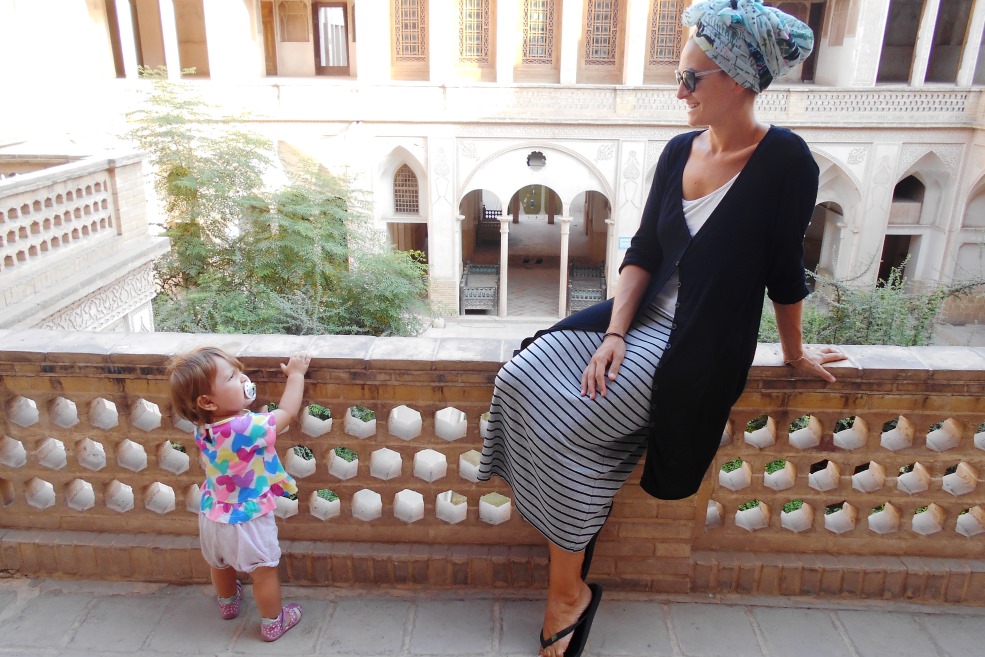
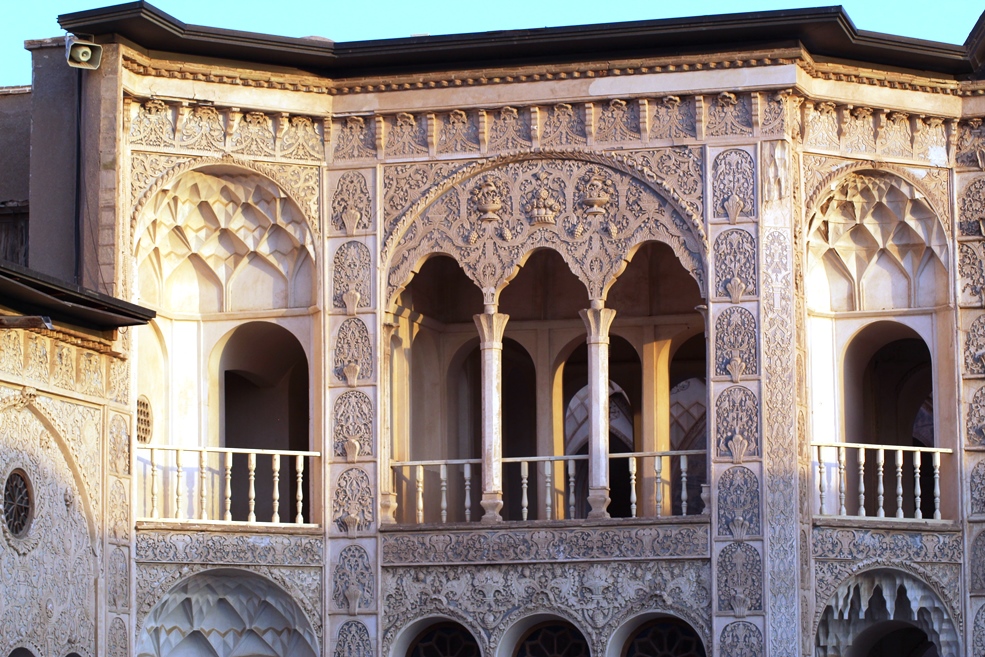
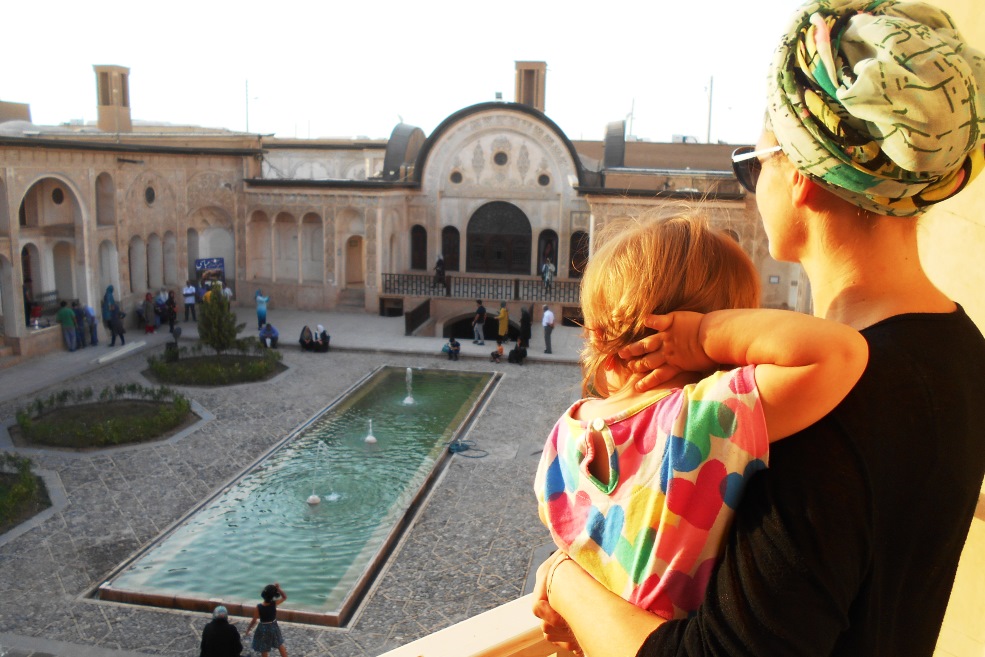
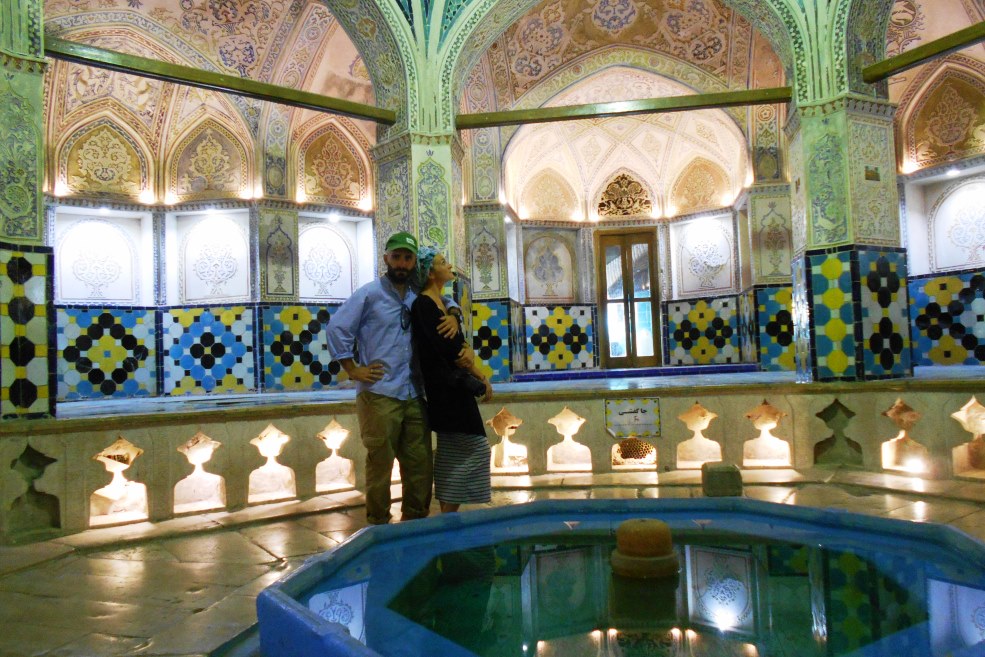
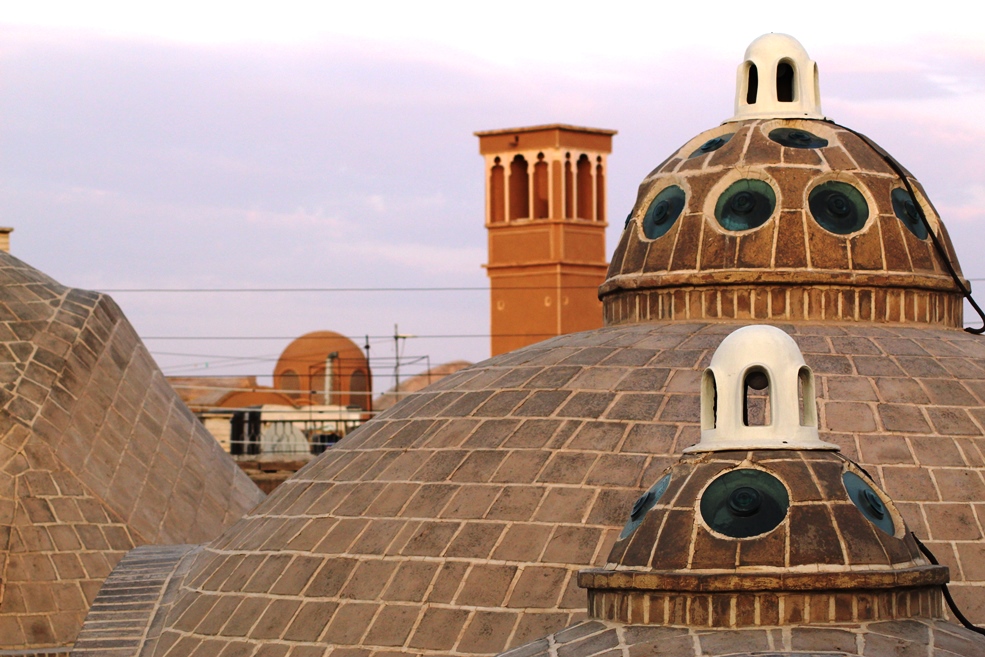
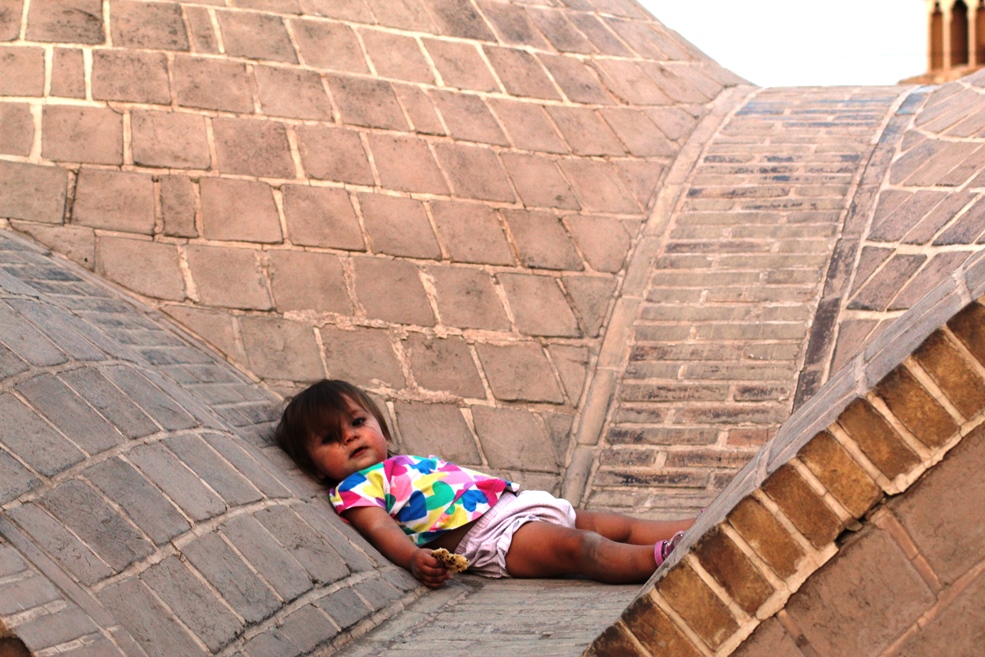

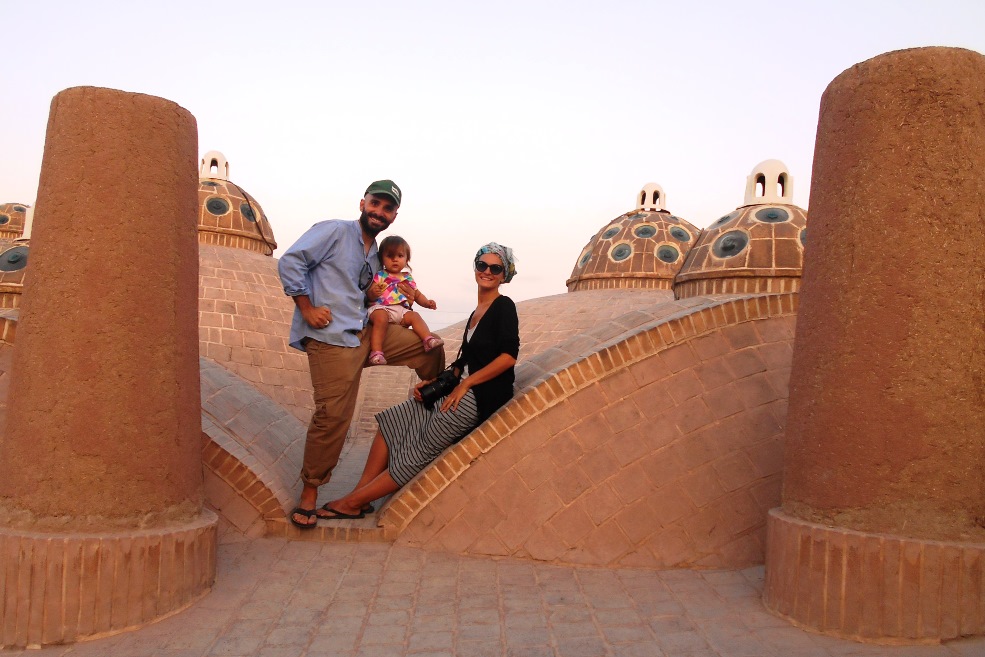
It is said that the Magi came from just Kashan to go and honor the birth of Jesus a Bethlehem. The fact could be true given that the Magi were Zoroastrian priests.
Kashan is the richest city in theIran in terms of architecture, everywhere you turn there are caravanserais with breathtaking ceilings, rich traditional houses finely decorated and very elegant.
We leave Kashan to return to the capital, the most strategic place to start and finish such a journey.
The trip in a three-hour VIP bus passes quite quickly, a little less than the hour of taxis in congested, busy and polluted Tehran.
Well, maybe this is the only thing I don't like aboutIran: its uncontrolled traffic, without rules and the suffocating smog!
How we were struck by these splendid Iranians. In every place we met special people who, with free generosity, tried to welcome us in the best way. They are beautiful, they are pure!
You see very affectionate fathers with their children and their wives, sweet in their ways. Many have confided to us that they do not want their wives to wear the veil but the State imposes it; they would like to see them free, free to express themselves! How many prejudices the world has against everything related to Islam.
How many times have I heard myself talking about the many false prejudices: "We Iranians are like you Westerners"... It is not true dear friends ... you are better than us!
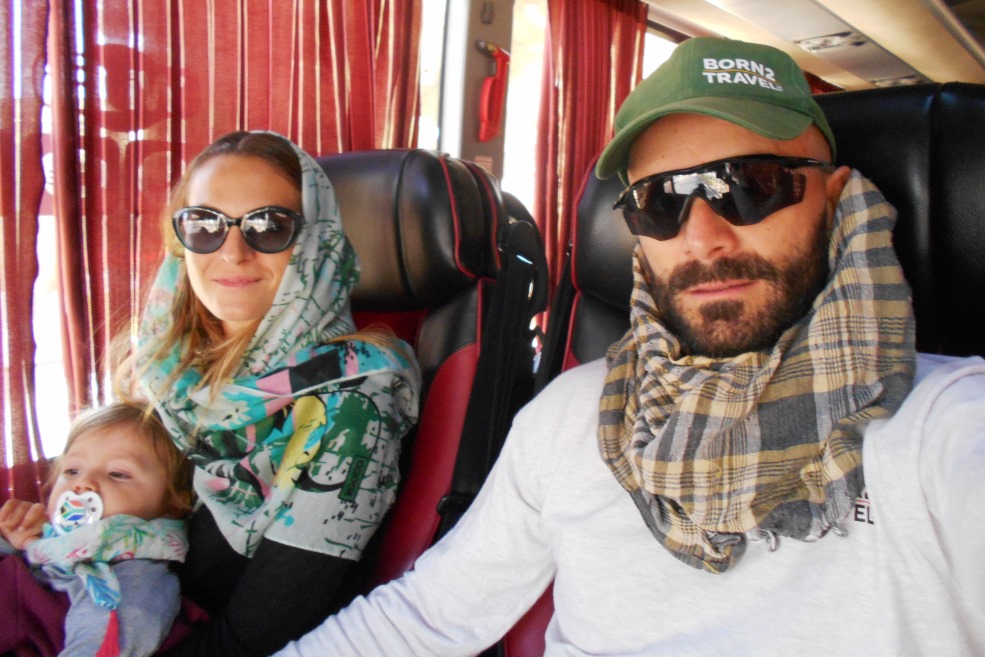
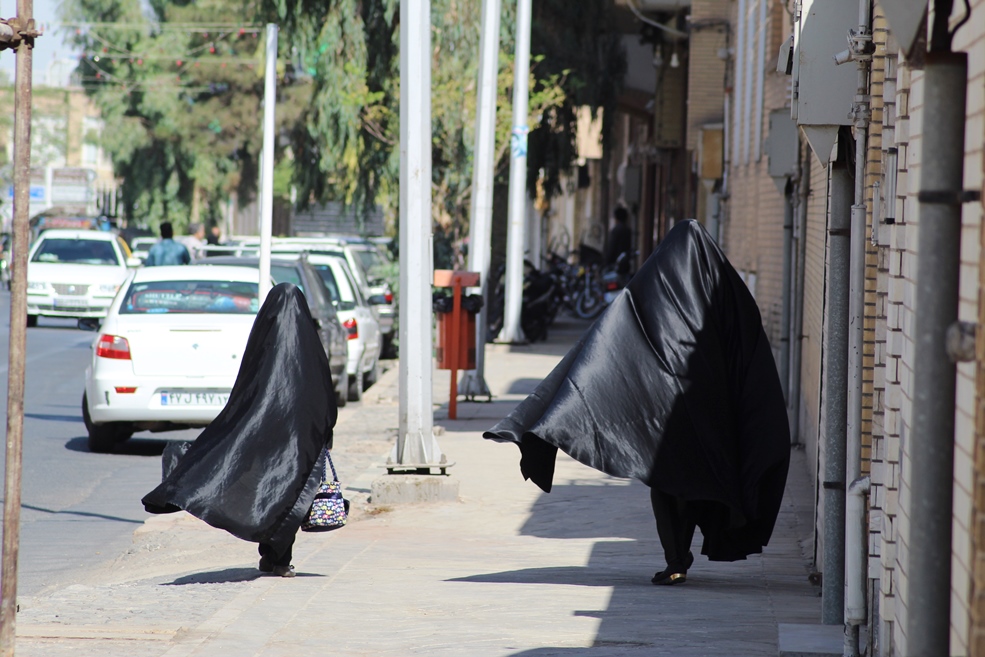
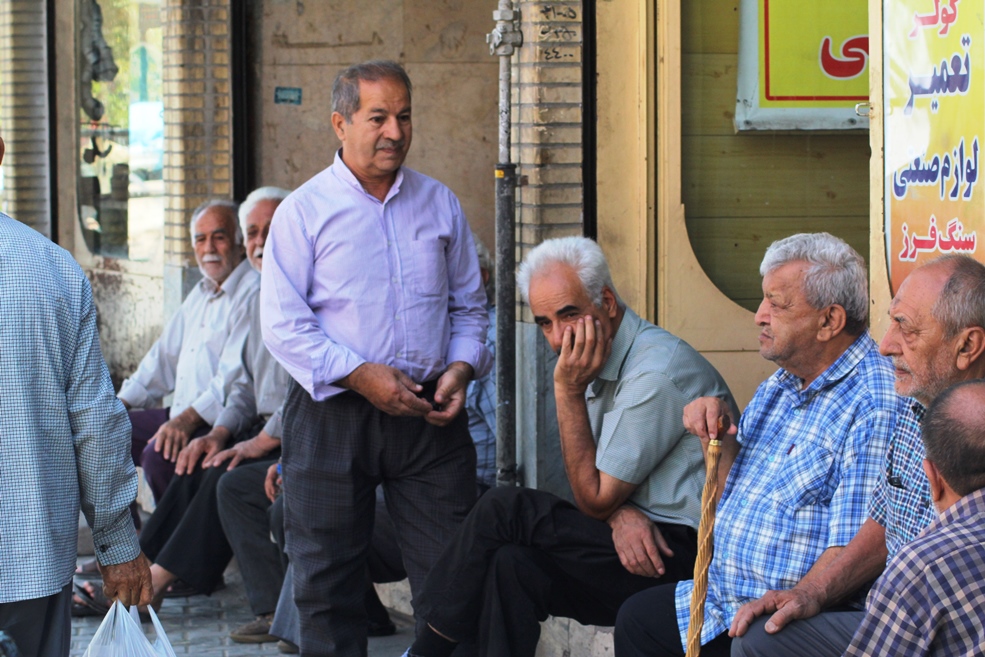
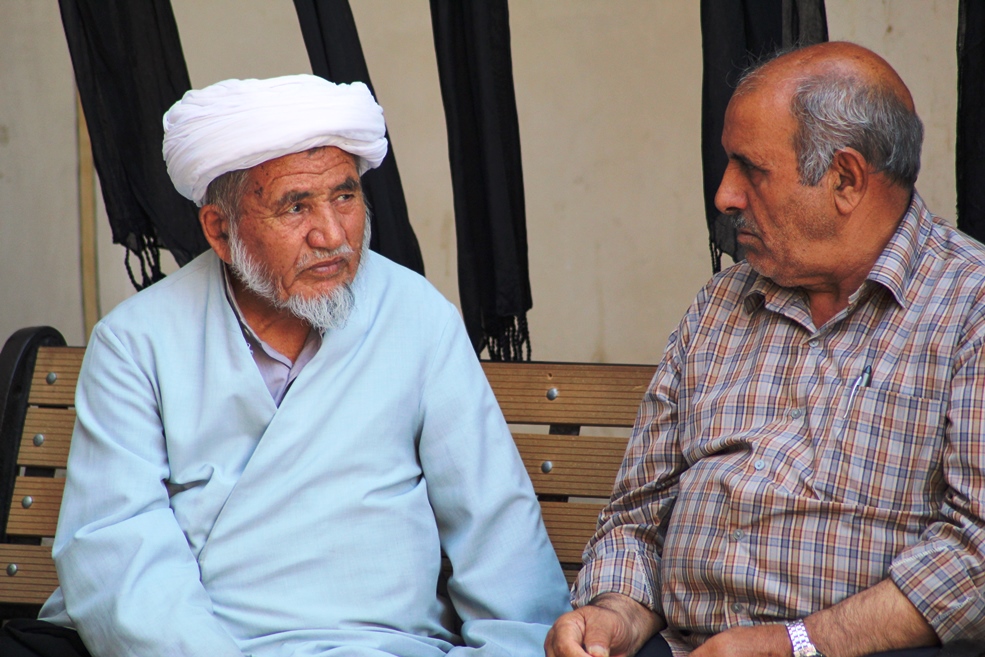
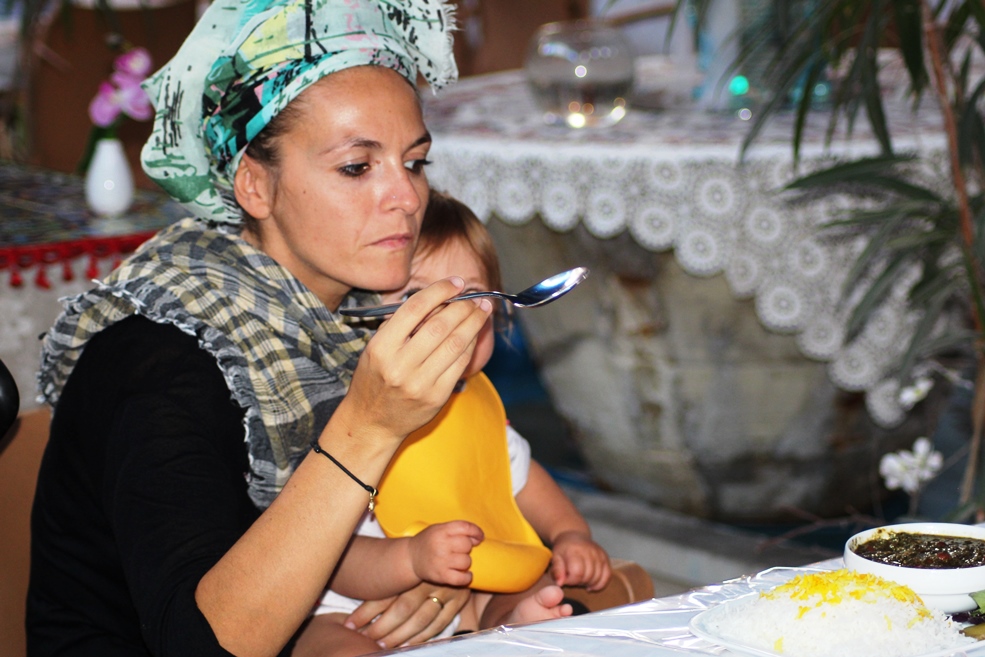
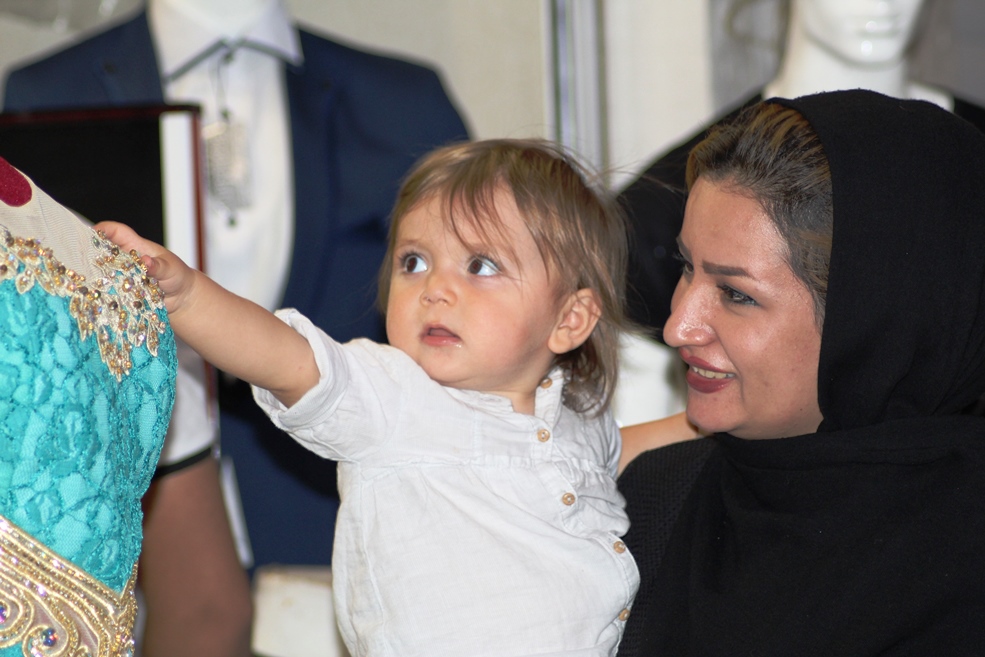
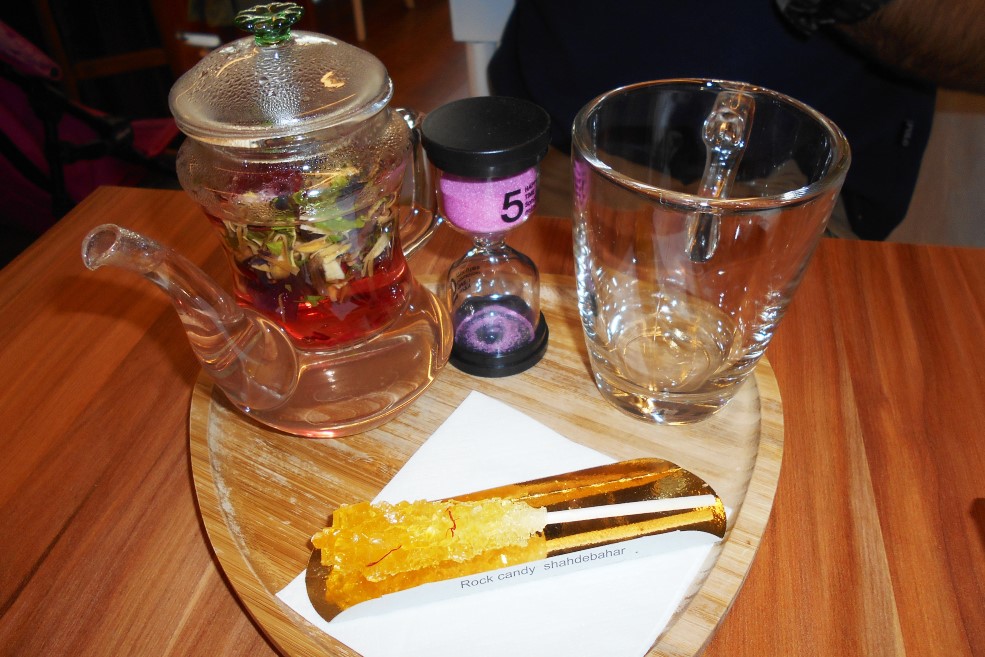
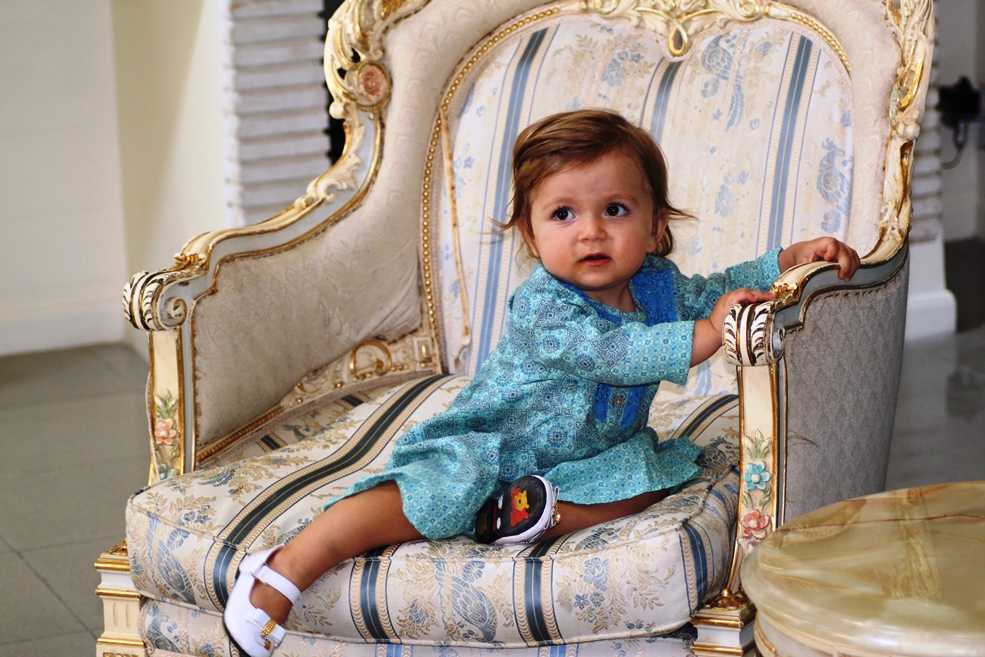
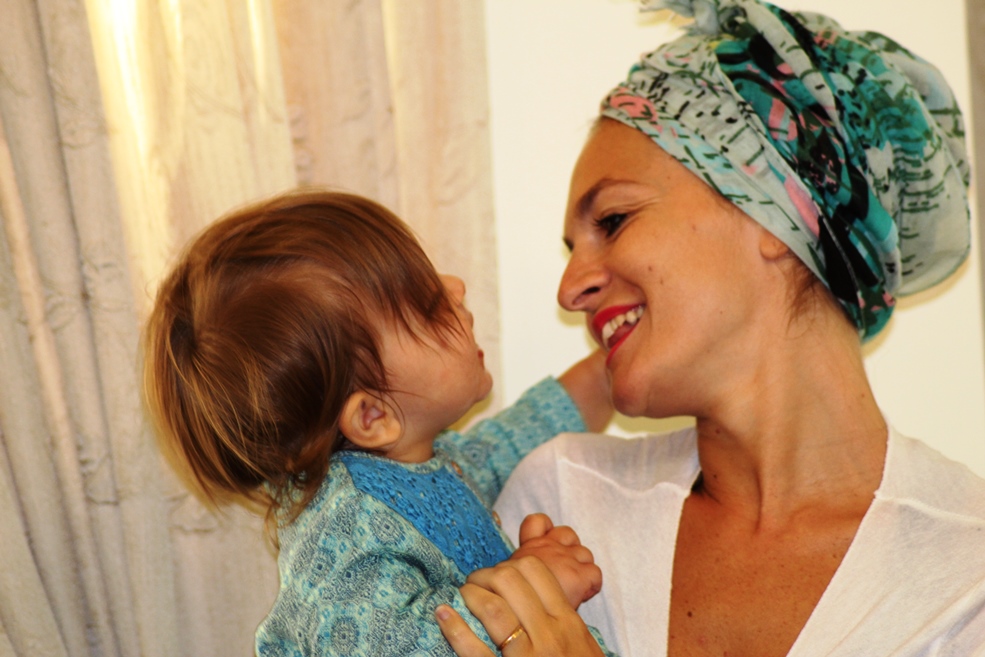
We spend these last hours in the immense park of Sa’d Abad where we visit White Palace, summer residence of the Shah and we are enchanted by a carpet of 140 square meters with 150 knots per inch. Impressive!
Time to pack everything ... even this experience comes to an end. thank you Iran for everything you taught us!
Error: No feed found.
Please go to the Instagram Feed settings page to create a feed.
58 Responses
Comments navigation
That’s the experience of all foreigners who visit Iran. ❤️❤️❤️❤️
hi but you didn’t visit north of Iran
like Rasht, Bandar e anzali , masooleh, subatan Talesh, Lahijan…
https://www.tripadvisor.com/Attractions-g3532582-Activities-Gilan_Province.html
best regards
Thank you so much
Bello , come avete prenotato dall’ Italia? Il visto si può fare in aeroporto! Da quel che ho capito non avete utilizzato guide private ! Volevo andare alla fine di luglio ed agosto.Giuseppe
Ciao Giuseppe, il visto lo devi ottenere prima di partire o tramite ambasciata o tramite agenzia e se ti serve posso consigliartene una davvero efficiente di milano. Tutte le prenotazioni fatte o sul posto o tramite google prima di partire e tutto in autonomia senza guide
Leggermente caldo in quel periodo 😉 Io vorrei andarci nel periodo del nostro Natale/Capodanno.
Dipende dalle aree che visiterai ma cmq nel sud, se vai nel periodo di dicembre, starai benissimo!
A wonderful job, so interesting and emotional, thanks a lot, kind regards and love to you and your lovely family specially for that sweetheart beautiful Nora, God bless.
Thank you so much dear Shadi… we have lived a wonderful adventure in your interesting country
Very interesting.
Looking forward to visit Iran soon.
Since I am a drone owner, I was wondering if it came to your attention what are the laws regarding drones. I would bet that they are strictly forbiden, but since you were “on the field”, what is your feedback?
Thanks!!
Well, actually i havent seen anyone using them and i wouldnt wonder if in important and tourisit cities it might be forbidden, but iran is so huge and there are so many desertic places where you can try that without problems… i m sorry if i cant be helpful
L’Iran è un paese che non immagineresti mai, visti i racconti che ne fanno i media da noi.
È un Paese talmente accogliente, disponibile che certe volte ti imbarazza.
La gente è gentile e disponibile, ci è accaduto di perderci e non ci siamo mai sentiti in pericolo, la gente, con i loro sorrisi hanno fatto a gara per esserci utili.
È un popolo colto, almeno nelle grandi città e con un grande orgoglio per il proprio passato di grande civiltà.
La gente ha voglia di comunicare, di ascoltare ma anche di trasmettere il loro pensiero e la grande voglia di apertura al mondo.
Ci sono andata con mille pregiudizi e ne sono uscita con una idea totalmente diversa.
Ovviamente non parlo del regime teocratico, spione ed ottuso che governa questo grande Paese dalla grande storia.
Mi sono soffermata solo su un aspetto, ma L’Iran è anche uno splendido Paese dove l’arte e la cultura si respirano in ogni granello di sabbia.
E’ un Paese che deve essere vissuto per capirlo a fondo… Non vediamo l’ora di ritornarci!
Un’esperienza bellissima, un racconto che regala tanto, mi è piaciuto leggere ogni cosa ma la tappa che mi ha entusiasmato di più è stata Toudeshk, lo definirei un imprevisto fortunato .
Sì, quella di Toudeshk è stata una vera avventura! ahahah
Credo che dovrò visitare presto questo paese che ha entusiasmato così tanta gente. Grazie per questo resoconto così preciso e puntuale. ❤️
Fai bene cara Debora, è un Pease molto interessante abitato da persone UNICHE
Hi, I have a few criticism regarding your post about Iran. First, the front cover picture you have chosen could have been a more happier and vibrant image. We have many women/girls in Iran wearing chador – the long black-navy blue covering similar to the covering of Virgin Mary in the pictures – who are happy, smiley and content. So presenting a women in chador who looks a little grumpy adds to all the common prejudices. Second, you said, “girls are tired of this veil”, well this is also not true and very much one-sided as how westerners like to picture the women in Iran and their relationship with the veil (hijab) and modesty. If you want to be fair and just, then you have to talk to a good number of people with different backgrounds and beliefs and then make a *general* statement. Of course there are always a number of people who believe in the veil/modesty and a number who don’t. Based on the rules of the country right now, in public places, people should have a certain amount of covering for their head and body, that does not require a very tight/strict covering, so people who are not believers of complete hijab (complete such as the pictures of Virgin Mary or the nuns) will partially cover themselves, part of their hair can show up, etc. This does not conclude to the fact that they are tired of the veil, it simply means that they don’t believe or they don’t like to cover in the full modest way. Finally, to conclude my words, equivalenting *Modernization” with removing the head covering or the body clothing modesty is very naïve. A country would not become “Modern” when the women in that country are uncovered. You can be a women who is modestly covered and still be modern, open-minded, active, professional, educated, athletic, leader and so on …. In the end what matters is righteousness ….
Dear Mahsa, first of all I really thank you for your awesome comment ‘cos I love the confront with other people. I apologize if something might be misunderstood and of course my whole photo reportage is based only on my personal and subjective experience in your stunning Country.
When I talk about “modernization” I dont necessarily mean to uncover your head but just to BE FREE to behave as you prefer… of course always respecting your religion and your believes… and this ‘cos Stefy has been forced to wear the veil wherever (not only in mosques I mean) and all the times… I dont think I’ have prejudice otherwise I would have never brought my 1 year old baby with us there and I still consider Iran as the most welcoming and hospitable place in the world… Really sorry if we havent manage to spread this message! Mark
Dear Mark,
I would like to thank you for your response and your understanding. I am glad that you had a good time in Iran and I hope that you gain wisdom the more you adventure around the world. I applaud your decision to travel to Iran despite the many false negative news that the western media tries to propagate and hopefully people like you can spread the beauties they see in my country.
I have to kindly disagree with your sentence that “One should BE FREE to behave as he/she prefers”, if one was free to behave as they wanted, the world would have been a mess, a very chaotic situation. If by that sentence you meant free to wear *whatever* they wanted, instead of “behaving however” they wanted, I still disagree. We have to understand the roots of the laws in a society, so why do we have laws? because we need them to regulate the rights and needs of the people in that society. In many countries there are certain dress codes with respect to the cultures, norms and beliefs of that country. Some countries only have attire laws that prohibit nudity; some others forbid “indecent exposure” that would be decided by the judge in each case, and many other different dress code laws that are present for each society or occupation.
In Islam, the way you present yourself in public has an effect on others, so it’s not solely your own business but rather public rights should also be observed. This would also include orderly conduct of behavior, and acts such as public lewdness is forbidden. Of course, holding hands and kissing cheeks of your spouse or loved ones are okay. The discussion about the rights of people with respect to each other regarding their clothing and behavior is long and maybe here is not an appropriate place for that, but in short, it is clear that the way a human dresses/behaves in public affects the mental well-being of both the females, males, children and families and therefore, there should be laws that maintains the rights of all.
To conclude, Iranian law requires that all women wear hijab upon reaching puberty, but it doesn’t specify the form. Due to all the rumors spread throughout the media Iranian dress code has become one of the travelers’ main concerns. However; the Islamic rules about clothing are not as strict as they may initially seem. Against the common belief women in Iran appreciate colorful clothes and have a great sense of fashion, choosing stylish clothes while following the dress code. The rules about what you wear are just for outside the houses and for private indoor places there are no rules. The dress code in Iran is more casual than people might expect, it is even more relaxed for tourists, so I think having a decent and modest clothing while visiting the country is not hard and shows respect to the laws and cultural/religious norms of the people.
I am glad that we had this discussion and I am always open for further talk.
God bless you and your family,
Mahsa
Dear Masha, thanks again for your very interesting spikes of thoughts. With “everyone should be free to behave as they prefer” of course I meant in respect of the social manners, of the general respect and so on… I guess that wearing a veil, if you don’t feel it, ‘cos many teenagers don’t like that, it’s the way i have felt and understood while i was in iran and when i talked to them…it doesn’t mean a threat against the society or against the religion… as you can see in a photo of my reportage, i’m very open to every types of society and religion,in fact in a photo i’m discussing about it with an imam during a “free talk about islam” (which i found very interesting… my question is: why can’t they be respectuf even without veil?
Dear Mark,
Thank you for your response. I am glad that you had a good time in Iran and I hope that you gain wisdom the more you adventure around the world. I applaud your decision to travel to Iran despite the many false negative news that the western media tries to propagate and hopefully people like you can spread the beauties they see in my country.
I have to kindly disagree with your sentence that “One should BE FREE to behave as he/she prefers”, if one was free to behave as they wanted, the world would have been a mess, a very chaotic situation. If by that sentence you meant free to wear *whatever* they wanted, instead of “behaving however” they wanted, I still disagree. We have to understand the roots of the laws in a society, so why do we have laws? because we need them to regulate the rights and needs of the people in that society. In many countries there are certain dress codes with respect to the cultures, norms and beliefs of that country. Some countries only have attire laws that prohibit nudity; some others forbid “indecent exposure” that would be decided by the judge in each case, and many other different dress code laws that are present for each society or occupation.
In Islam, the way you present yourself in public has an effect on others, so it’s not solely your own business but rather public rights should also be observed. This would also include orderly conduct of behavior, and acts such as public lewdness is forbidden. Of course, holding hands and kissing cheeks of your spouse or loved ones are okay. The discussion about the rights of people with respect to each other regarding to clothing and behavior is long and maybe here is not an appropriate place for that, but in short, it is clear that the way a human dresses/behaves in public affects the mental well-being of both the females, males, children and families and therefore, there should be laws that maintains the rights of all.
To conclude, Iranian law requires that all women wear hijab upon reaching puberty, but it doesn’t specify the form. Due to all the rumors spread throughout the media Iranian dress code has become one of the travelers’ main concerns. However; the Islamic rules about clothing are not as strict as they may initially seem. Against the common belief women in Iran appreciate colorful clothes and have a great sense of fashion, choosing stylish clothes while following the dress code. The rules about what you wear are just for outside the houses and for private indoor places there are no rules.
The dress code in Iran is more casual than people might expect, it is even more relaxed for tourists, so I think having a decent and modest clothing while visiting the country is not hard and shows respect to the laws and cultural/religious norms of the people.
I am glad that we had this discussion and I am always open for further talk.
God bless you and your family,
Mahsa
Thank you very much for your interesting response
Comments navigation